Boat Anchor Selection Guide: Choose the Perfect Type & Size
When you buy a used boat, odds are it will come with an anchor, and with a new boat you'll usually get to choose an anchor for it. What if that old anchor you have on your new-to-you boat doesn't hold so well, or needs replacing? In any of those scenarios, you'll need to pick out a new anchor for your boat. There are more types of anchors that you dreamed of, and they're all different in how they perform in different anchoring conditions. And your anchor will need to be sized for your boat.
The type of anchor you choose depends on the predominant bottom types where you plan to sail, and what fits on your boat. Once you know the type, you get the perfect type and size of anchor from the length and weight of your boat using the manufacturers' recommendations.
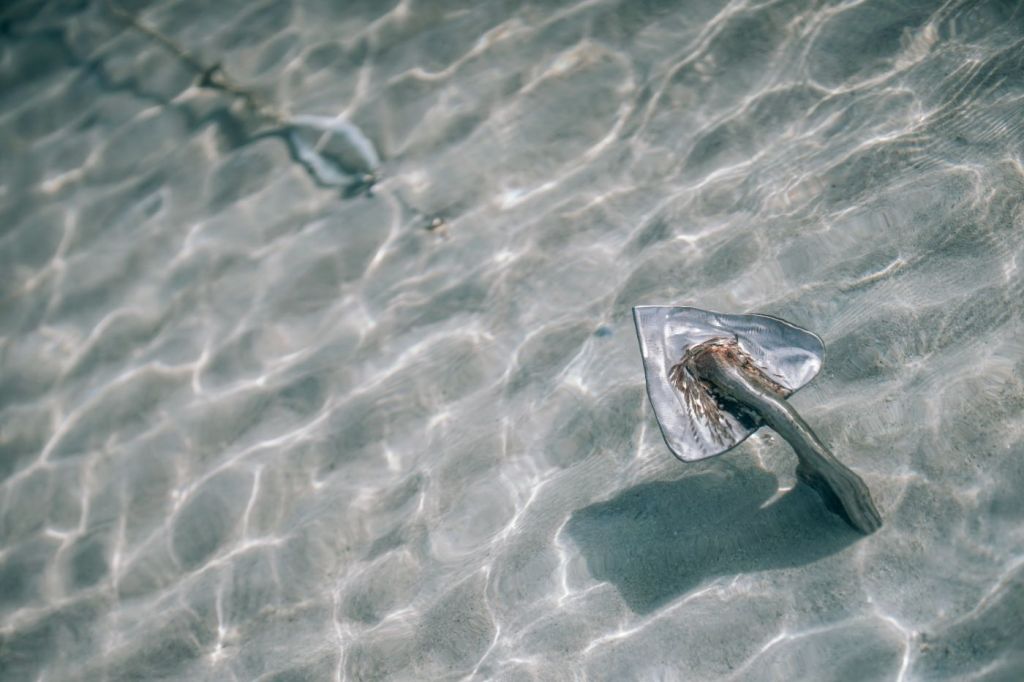

On this page:
How does an anchor work, loads and forces on an anchor, anchor construction materials, most common anchor styles, how do i choose an anchor, what's in your anchor locker, picking the right anchor ground tackle.
Instead of getting overwhelmed, if you do a little research upfront on what you might need you can narrow down your choices and get the best anchor for your boat and where you use it.
While it may seem obvious at first glance, there are many mistaken assumptions about just how your anchor holds your boat to the bottom. It's important to understand just what your anchor does when it's holding your boat, so you know why you may choose one anchor or another.
All anchors dig into the bottom. Some have aggressive, plow-like forms or scoops which burrow in quickly, others have various hooks, spikes or protrusions designed to catch and hook as soon as the anchor is pulled.
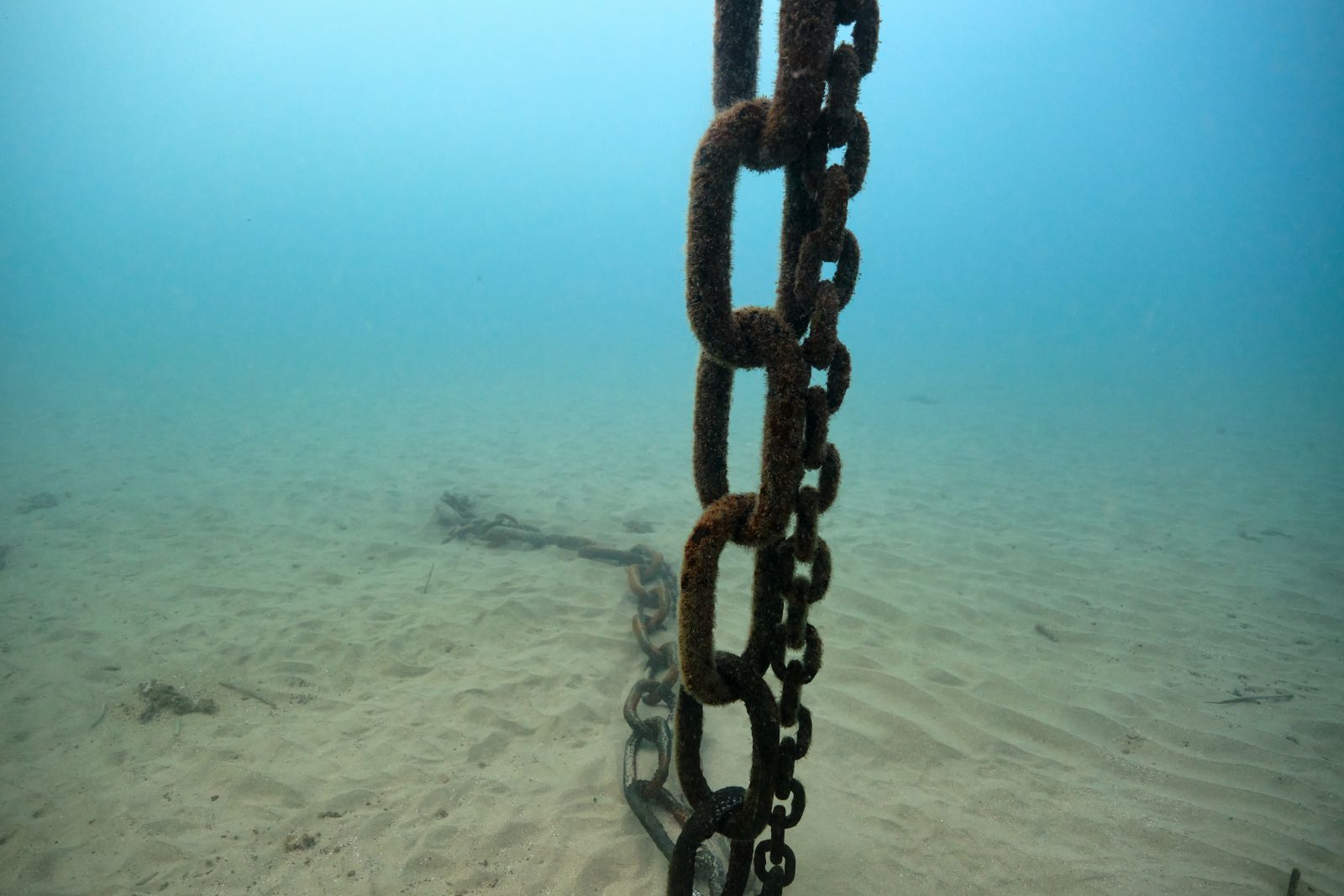
Angle of attack provides holding power
The pulling force on an anchor is along the shank, and for an anchor to offer maximum holding power, it's crucial that the bulk of the load from the boat's pull is applied in this direction. If the pull is from the side, the anchor may break out. If the pull is from above the anchor, it definitely will.
Part of the role of the chain in your rode is to keep the rode flat on the bottom to make sure the loads from the boat are horizontal and along the direction of the shank.
Scope & chain provide angle and drag
Your anchor rode and how much scope you let out is as important to your choice of anchor to how well you hold. Chain has its own resistance to being dragged and adds extra holding, and as noted above, it also keeps the forces on the anchor from pulling it out.
The longer the scope, the better the angle of pull on the anchor. With a length of chain, the extra weight adds more holding the bottom, and a rope/chain rode gives extra shock absorption in the catenary of the rode.
You can learn more about how to select and install the right anchor rode by reading our detailed article here.

Orientation of anchors
Most modern anchors have a definite top and bottom, and will not set lying on their backs. These anchors flip and orient their blades down if they land the wrong way or break out. Many anchor designs dig in quickly with the anchor lying on its side, and may have roll bars or weights to keep them in a suitable setting orientation.
Some anchors, like grapnel anchors or the Bulwagga, had a radial symmetry and no true up or down. These don't need to reorient or right themselves. They will catch the bottom no matter how they lie, though not all the blades and hooks will help hold the anchor.
Good anchors will reset unnoticably
All anchors can break out and may get rolled as a boat swings at anchor and wind strength increases. An anchor's ability to reset is important. You don't want to drag long before your anchor sets again. With a good anchor, you won't even be aware it has broken out and reset, as it will happen quickly without your boat seeming to drag at all.
An anchor doesn't care at all about what kind of boat is on the other end of the rode, what it cares about is how much drag force is on the rode. A heavy boat in a light breeze may pull as hard on an anchor as a lighter boat in more wind. It's the force that counts, and you size your anchor by how much force you can expect to land on that anchor and rode.
Boat weight partially determines drag force
Your boat's weight is one of the two sources of drag force on your anchor. Heavier boats will pull more than light boats in the same condition. Many anchor vendors give tables of boat weight ranges which match to the best anchor size.
In wind, boat length is more important
Picture two boats with the same weight - a low-slung classic yacht with little freeboard , but a heavy full keel, and a more modern design with higher freeboard, less ballast, and about ten more feet of length. In windless conditions, they'll pull about the same against the anchor.
But in twenty knots of breeze, the longer boat with more freeboard will have a lot more pull. Here, the boat's length overrides the weight. A doubling of wind speed quadruples the load on the anchor, so this effect becomes more pronounced the higher the wind.
Anchors are made from three primary materials - galvanized steel , stainless steel , and aluminum .
Galvanized steel anchors are cheap
Galvanized anchors are the most common, as they are the least expensive, offer excellent weight, and are very durable and rugged. They can rust over time as the galvanization wears off, but provide the best cost to holding of all anchor construction material. You can re-galvanize an anchor at considerably less cost than replacing the anchor, if the original protection wears off.
Stainless steel anchors are expensive
Stainless steel anchors have similar strength to galvanized steel anchors combined with corrosion resistance. They look beautiful on the bow, but they are quite expensive at 3-5 times the cost of a similar galvanized anchor, and you'll want to pair them with a more expensive stainless chain. While they won't rust, they can get scratched and lose their shiny finish if you use them often. And there is a risk of crevice corrosion if stainless steel sits underwater too long.
Aluminum anchors don't rely on weight
Aluminum anchors are lightweight and strong, but may not have the holding power of heavier anchors of a similar size, and aluminum is not as strong as steel. They are popular with racers, and also for secondary anchors, because they are lighter and easier to handle. Aluminum anchors rely on bottom penetration to set, not weight.
The dozens of anchors available break down into a few general classes. Trying to organize all the choices by function helps you narrow the field to what may work best for you.

Claw anchor
Claw anchors, like the Bruce, have claw style blades to dig in and hold well for most conditions. They may struggle to dig in with a hard mud or clay bottom, but will reset well on other bottoms.

Plow anchor
Plow anchors are generally fixed, like the Delta, or have a hinge like the CQR. The fixed plows do well in everything but rocks, while the hinged CQR doesn't hold quite as well but responds better to the movement of the rode since there is a swivel.
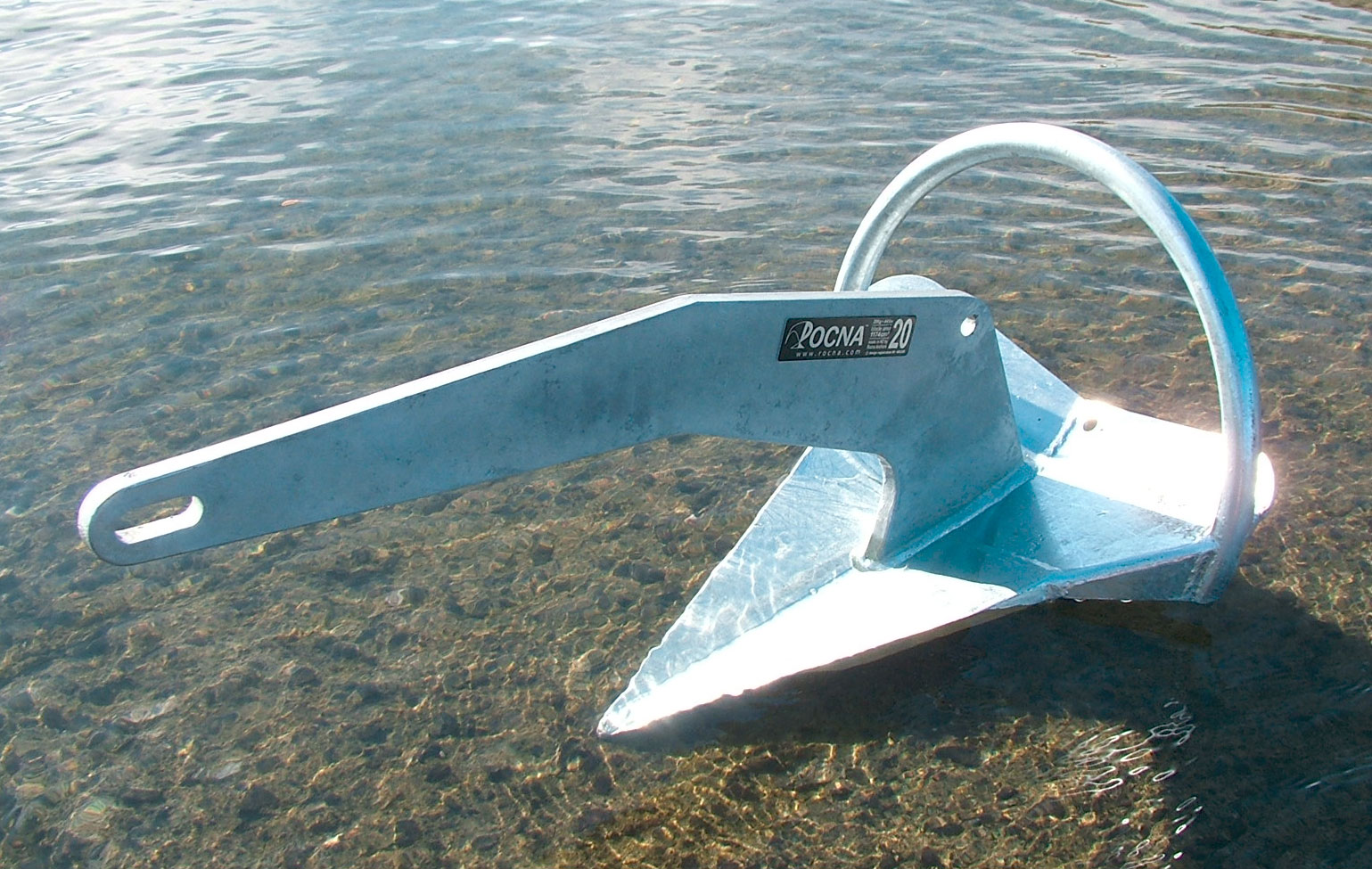
Plow with Roll Bars
Modern designs like the Rocna and Spade incorporate a plow form on the blades, coupled with a roll bar. These have fantastic holding power and set easily. They don't fit as well on some older boats, and are more expensive.
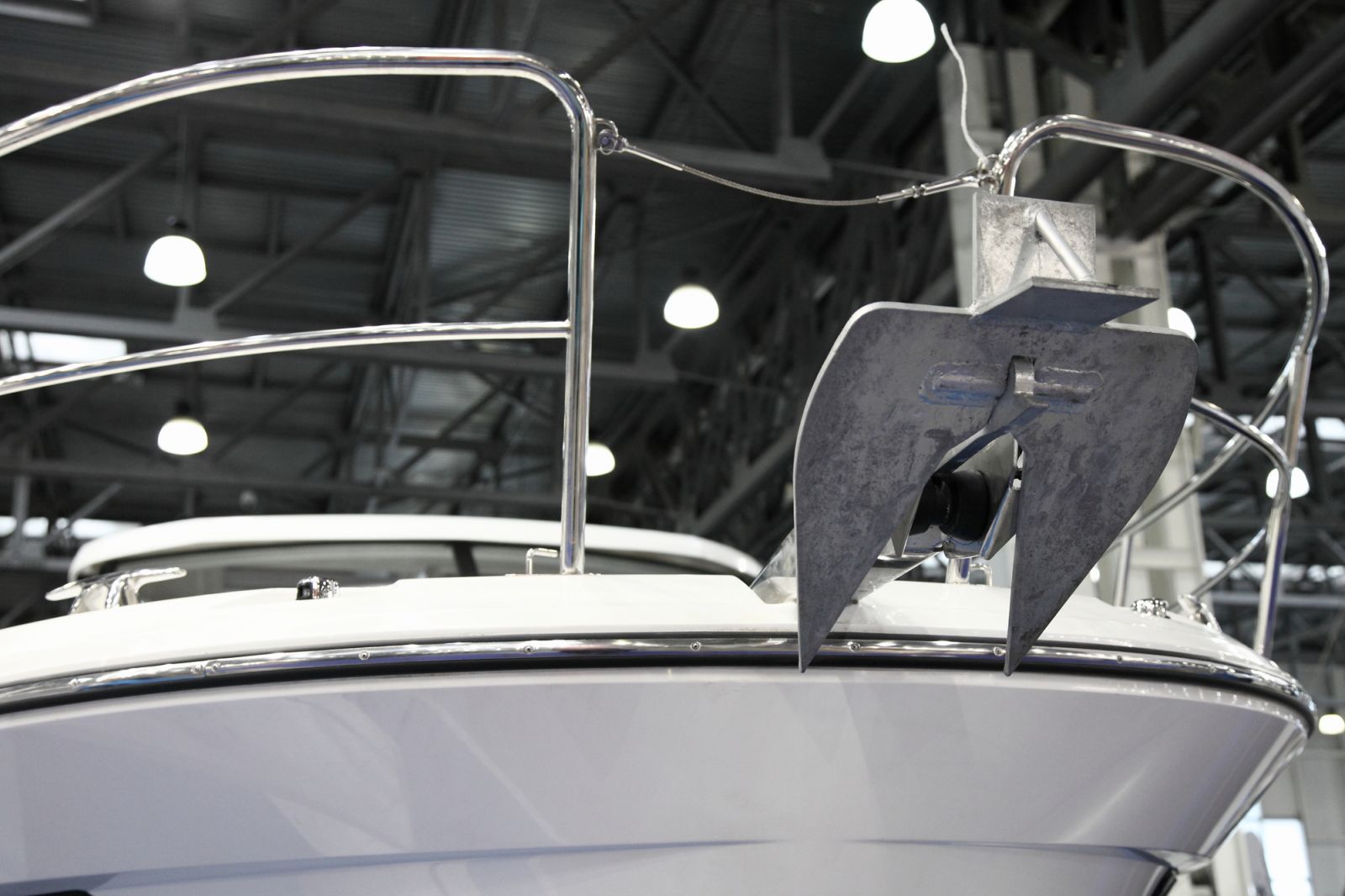
Fluke anchor
The fluke anchors are great in mud and sand, but don't do as well with bottoms they can't penetrate or grass. The Danforth (and its clones) are popular with smaller boats, and the lightweight aluminum Fortress is a favorite with weight conscious ravers.
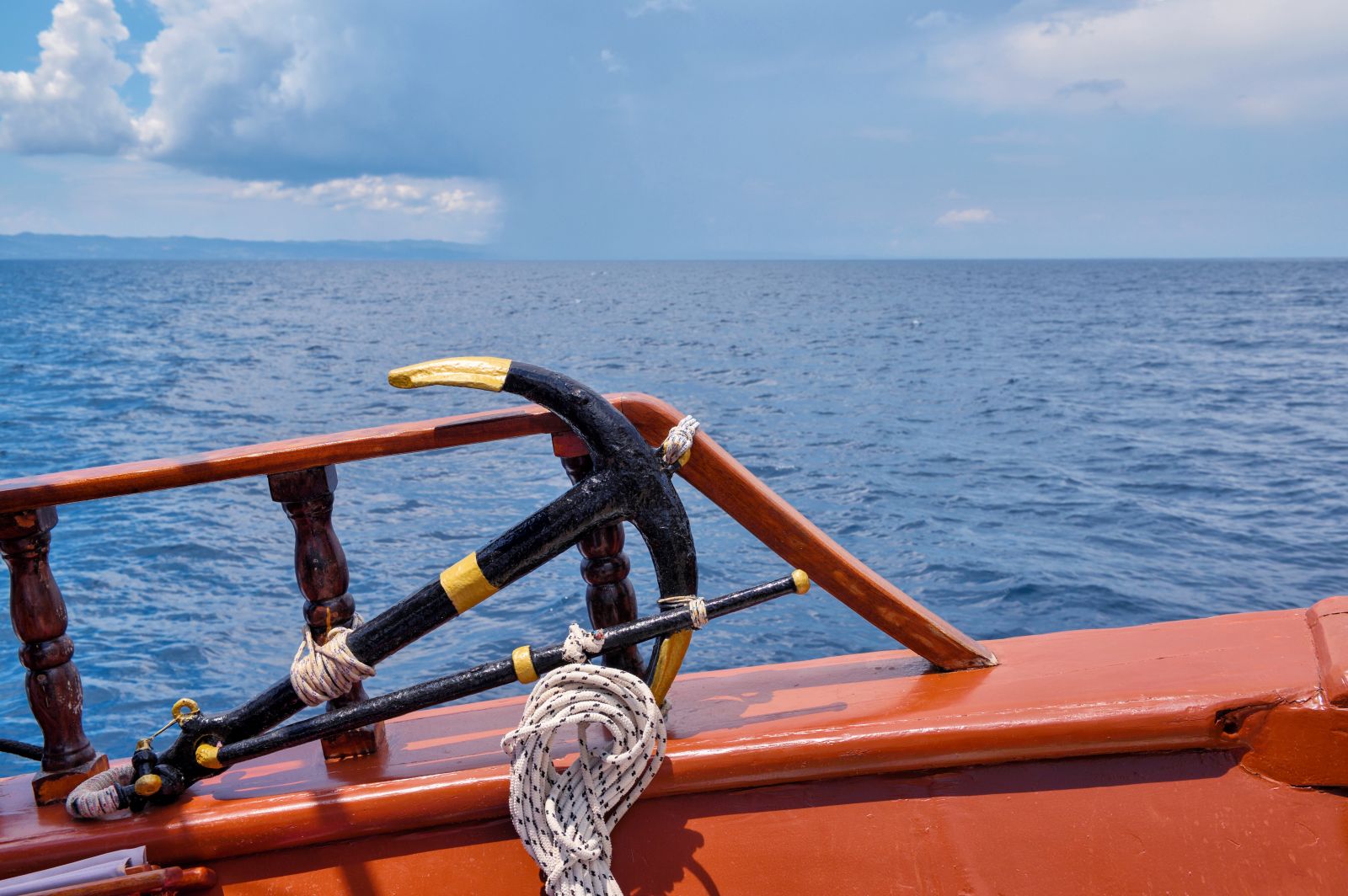
Fisherman's anchor
The traditional crossbar and hooks anchor is good for rocks. Some break down for storage, which makes them a popular choice for a storm anchor.
Grapnel anchor
Grapnels are fine anchors for dinghies, kayaks, PWCs and other small, light craft but don't do well with higher loads and larger boats.
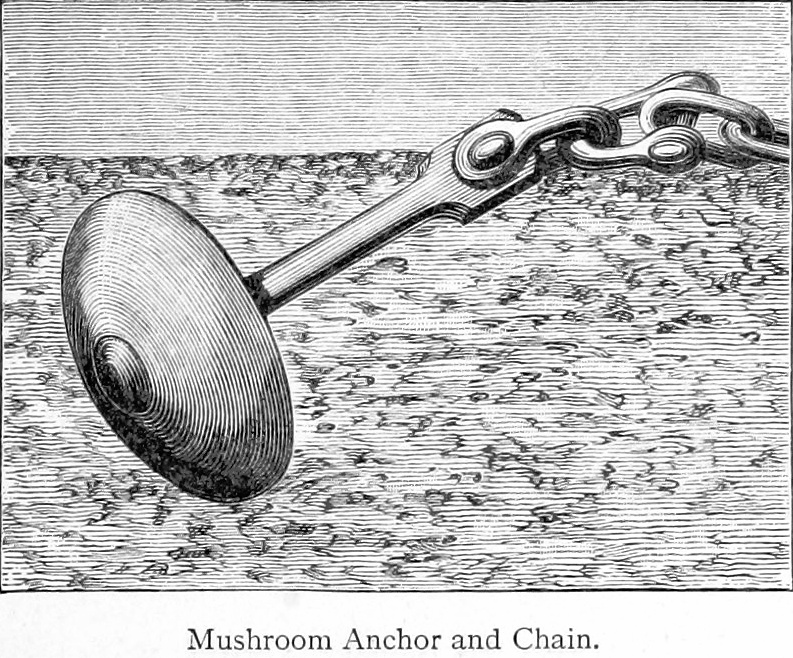
Mushroom anchor
Small mushroom anchors can hold a small craft like a dinghy or kayak. Many permanent moorings are large mushroom anchors, where they can dig deep into the bottom. But they are not suitable for big boat use.
Other alternatives
This list isn't exhaustive. There is constant innovation in anchor technology, from the Bulwagga to various box anchors, which don't even look much like anchors as we think of them. All have their strengths and weaknesses, so research carefully and try to find someone with real-world experiences with them.
Remember, there is no "right" or perfect anchor, so look at a lot of options to see what fits your boating style.
The basic decisions you have to make about your anchor are the style, size, and material of your anchor. While we can't get into every type of anchor on the market and how it works for every boat, we can give you an overview of the decisions you must make.
What fits on your boat?
If you're adding a new anchor to an existing boat, you may have some natural limitations on what anchors you may choose.
With a bow roller sized for a plow or a nice Danforth bracket installed already, maybe those features limit your choices. You may switch between a CQR and a Delta with that anchor roller, but there's a good chance you can't fit a Rocna's roll bar up there without bending something. You could probably switch a Fortress out for a Danforth in that bracket, but you can not hang a plow from it.
Most anchor manufacturers give dimensional drawings of their products on their websites, so measure and even mock up something to see if it will go. On my boat, I shoved a Manson Supreme where a CQR went, but not without permanently bending a retaining pin. And I mocked the whole thing up in cardboard ahead of time to be sure.
Where will you anchor?
The range of where boat affects what to have in your bow locker. If you're a Chesapeake Bay sailor and you don't leave the bay, something that holds well in mud is a must and may be all you need. But a world cruiser needs something more effective across a range of bottom types.
Give careful thought to the places you’ll want to spend the night on your boat, especially the bottom types you'll find. In the end, you'll likely have more than one anchor, and you want to cover most of the holding types you'll encounter.
Choose your materials based on budget and style
This is a matter of budget and style, mostly. As a cruiser who spends almost every night at anchor, I can't see the sense of spending a fortune on a pretty anchor that spends most of its life hidden. But for some, adding that high gloss show to the bow of a Bristol condition yacht everyone can see most of the time, the aesthetic choice may make more sense.
When I raced, I had a Fortress because it met the requirements to have an anchor, but I ended up spending a couple of nights on it. It was easy to move around, but for vacations I still dragged the 35 lb. CQR out of the shed and put it in the bow locker.
Size your anchor based on boat length and weight
Sizing your anchor is most people's biggest worry. Remember, it's better to have too much anchor instead of not enough. You want to sleep soundly and leave your boat without worrying. If you're hauling your anchor up without a windlass, the extra pounds matter a lot more, but it's better to have extra.
It's not as hard as you think to size your anchor, because every single manufacturer publishes a guide to how to select the right product for your boat. Most of them have tables for boat length and boat weight, and we talked up above about how a boat's weight and windage affect anchor loads.
To size your anchor, follow these steps.
- Search the "by length" table for the length of your boat, and note the recommended size.
- Search for the weight of your boat, and note the recommended size.
- The correct anchor size for your boat is the larger of those two recommendations.
If they give a single number in the table, choose the next number above yours. If they use ranges and your boat is on the edge of a weight or length range, there's no harm in moving to the next size band. Don't move down bands; you don't want to undersize.
For an example, look at this sizing table for Spade Anchors. We've going to pick an anchor for a boat which is 53' long and weighs about 54,000 lbs.
Source: Anchor sizing chart on Spade Anchor USA
You'll see a boat length of 53' puts us at 59ft. and a 55 pound galvanized anchor. But by vessel weight, for 54,000 lbs., the recommended weight is 99 pounds.
So the larger of the two is 99 lbs., so that is the proper weight for this boat.
Most boats should have more than one anchor, so you will go through this process several times. You may need multiple anchors for the different bottom conditions you may come across. If you foul an anchor or lose one, a spare anchor and rode can literally be a lifesaver.
Other reasons for multiple anchors include a lighter anchor for a "lunch hook," though with an electric windlass this isn't much of a concern on bigger boats. You may want a smaller stern anchor in case you need to anchor where you don't want to swing, or it's important to keep your bow facing a direction other than into the wind. And finally, if you plan to cruise far from your home port, you may want a storm anchor.
Any of the anchor types we've discussed will fill many of the above roles, and you can use these tools to evaluate your boat and your plans to make the best choice for each job.
The next step is to select the right ground tackle. Ground tackle consists of everything that connects the anchor to your boat and is used to control the angle of attack, scope, and drag by adding or removing weight to the anchor.
I've written a detailed guide to help you to understand ground tackle in depth , which will help you select the perfect parts yourself.
Leave a comment
You may also like, how to measure your anchor chain size (two ways).
Buying new anchor your chain for your boat can be more complex than it sounds. You can't just walk into a marine store and order "A hundred meters of your best." …
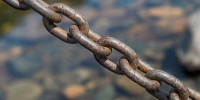
How to Select and Install the Right Anchor Rode
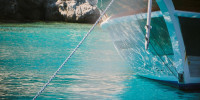
How To Mark & Measure Anchor Chain & Rode (3 Ways)
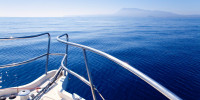
Guide to Anchoring Ground Tackle - parts, checks, deployment
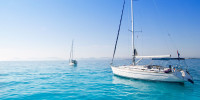
How Much Anchor Chain Should You Let Out When Anchoring?
Own your first boat within a year on any budget.
A sailboat doesn't have to be expensive if you know what you're doing. If you want to learn how to make your sailing dream reality within a year, leave your email and I'll send you free updates . I don't like spam - I will only send helpful content.
Ready to Own Your First Boat?
Just tell us the best email address to send your tips to:
Free US Shipping on Most Orders Over $99 * - Learn More »
ORDERS SHIP NEXT BUSINESS DAY*
60 days return period - Learn more

- Apparel - Board Shorts
- Apparel - Footwear
- Apparel - Hats
- Apparel - Hoodies & Longsleeves
- Apparel - Rash Guards & Sun Shirts
- Apparel - Sunglasses & Goggles
- Apparel - Tanks & Tees
- Boat - Anchor Rope
- Boat - Boat Anchor
- Boat - Boat Ladders
- Boat - Boat Lights & Flags
- Boat - Boat Mirrors
- Boat - Boat Pylons & Booms
- Boat - Buoys
- Boat - Maintenance & Cleaners
- Boat - Pontoon Accessories
- Boat - Propellers
- Boat - PWC Accessories
- Boat - Safety Equipment
- Boat - Trailering Accessories
- Dock - Dock Accessories & Storage
- Dock - Dock Ladders
- Dock - Fenders & Mooring Lines
- Floats and Parks - Inflatable Dock & Swim Platform
- Floats and Parks - Inflatable Water Park
- Floats and Parks - Inflators & Deflators
- Floats and Parks - Pool Floats, Lounges, & Rafts
- Floats and Parks - Water Mat
- Floats and Parks - Water Trampoline
- Gift Ideas - Christmas
- Hydrofoil - Foil Surf Board
- Hydrofoil - Ski Foil
- Hydrofoil - Wake Foil
- Kayak - Kayak Accessories
- Kayak - Kayak Paddles
- Kneeboard Accessories
- Life Jackets - Infant Life Jackets
- Life Jackets - Kid's Life Jackets
- Life Jackets - Men's Life Jackets
- Life Jackets - Non-CGA Comp Vests
- Life Jackets - Paddle Life Jackets
- Life Jackets - Pet Life Jackets
- Life Jackets - Women's Life Jackets
- Ski - Barefoot Skiing
- Ski - Gloves
- Ski - Kneeboards & Multipurpose Boards
- Ski - Ski Bags
- Ski - Ski Bindings
- Ski - Ski Combos
- Ski - Ski Hardware
- Ski - Ski Ropes & Handles
- Ski - Ski Trainers
- Ski - Slalom Water Ski
- Ski - Slalom Water Ski Packages
- Ski - Trick & Jump
- Suits - Drysuits
- Suits - Wetsuit Accessories
- Suits - Wetsuits
- SUP - Paddleboards
- SUP - SUP Accessories
- SUP - SUP Paddles
- Towables - Boat Tubes
- Towables - Inflators
- Towables - Sea Sleds
- Towables - Tow Rope for Tubing
- Towables - Tube Repair Kits
- Wake - Ballasts & Pumps
- Wake - Helmets
- Wake - Kid's Wakeboards
- Wake - Kid's Wakesurf Board
- Wake - Packaged Wakeboards
- Wake - Wake Boots
- Wake - Wake Cases
- Wake - Wake Fins & Hardware
- Wake - Wake Ropes & Handles
- Wake - Wake Shaper
- Wake - Wake Skate
- Wake - Wakeboard
- Wake - Wakesurf Board
EARLY SEASON OUTLET SALE
Save up to 55% off popular gear!
How to Pick a Boat Anchor: The Guide to Types, Sizes & Weights
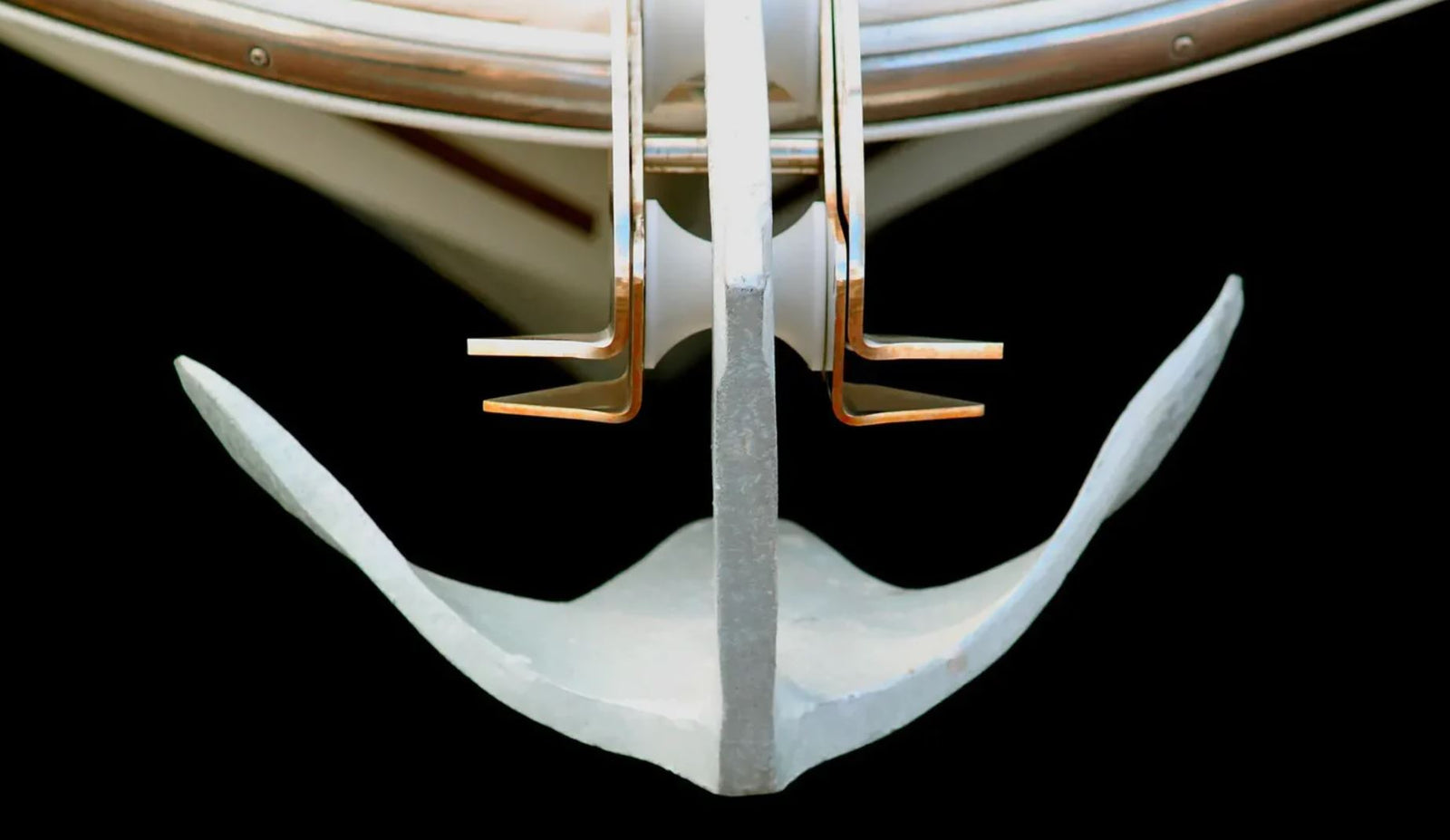
October 20, 2023
Lakes can get choppy, and river currents can drag you along when you'd rather stay put. Having the right anchor on your boat is crucial, especially if you're busy staging for a wakeboard or ski ride .
But what type and size of anchor is best for your setup?
Types of Boat Anchors
Let's look at the most popular types of boat anchors, and look at some charts to figure out what size and weight anchor is right for you.
Fluke Anchors
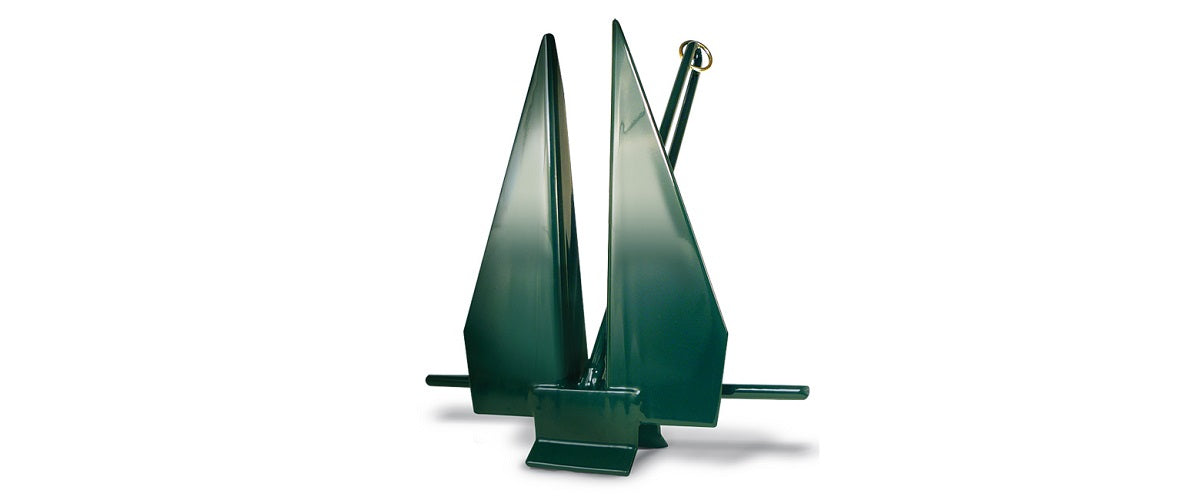
Also known as a Danforth anchor, the fluke anchor is favored by lake and river boat owners for its lightweight design and excellent holding power in soft bottoms.
Fluke anchors have a rotating bar that connects the anchor to the line. Their forward-heavy profile allows the flukes to drive straight down into sand or mud. As line is laid out, the bar swivels into a horizontal position, providing good scope.
- Boat Size: 30 feet or less
- Best For: Lakes, rivers, mud and sand
- Bad For: Rocks, debris, coral, strong currents
Plow Anchors

Also called a delta anchor, the plow anchor is one of the most popular anchors on the boat market. It's simple and effective, capable of providing reliable mooring in all water conditions and most beds.
Plow anchors dig into the surface below and they provide high holding power. They set quickly, which makes them an excellent choice when strong currents and winds could otherwise quickly move your boat.
But plow anchors' large, flat fins can get stuck in debris and large rocks, so it's best to stick to softer bottoms.
- Boat Size: 70 feet or less
- Best For: Sand, mud, grass bottoms, strong winds
- Bad For: Rocky bottoms
Claw Anchors

Also known as a Bruce anchor, the claw anchor is similar to a plow anchor: It sets quickly and digs into soft bottoms, providing good holding power against currents and wind -- though not as well as a plow.
Because claw anchors use smaller pins, they're better suited in gravel and rock, affording a lower risk of catching and getting stuck where a plow anchor might get hung up.
Digger Anchors

The digger anchor excels at providing high holding power in gravel and rocky bottoms, even with strong currents and high wind. It uses a rod that partially rotates, while limiting the angle of the anchor line's scope.
As current and wind pull on the boat, the rod's limited angle pulls on the anchor's claws, pushing them further into the bottom. The digger's thin, long claws work great in virtually all bottom, including gravel and small rocks -- just avoid large debris, as the limited angle of the anchor rod prevents it from being pulled back out of a snag effectively.
- Boat Size: 40 feet or less
- Best For: Sand, mud, grass, gravel, strong winds
- Bad For: Bottoms with large debris
Navy Anchors

The classic, heavy, big navy anchor excels at providing high holding power in all waters and conditions. Its size and shape make it suitable for rocky bottoms and debris fields, as it has little risk of getting snagged.
The only problem with a navy anchor is that its benefits can become problematic for smaller vessels: Because navy anchors are large and heavy, they can be difficult to stow, and they add plenty of weight to the hull.
- Boat Size: 20+ feet
- Best For: All bottoms, currents, and weather
- Bad For: Small, light boats
Mushroom Anchors

The mushroom anchor is made for small vessels in relatively calm waters with soft bottoms. It relies on suction and sinking into sand, dirt, and mud to provide holding power. These anchors are typically found on light, electric motor-powered boats, kayaks, and dingy boats.
- Boat Size: 12 feet or less
- Best For: Soft bottoms free of rock
- Bad For: Large boats, heavy currents, rocky bottoms
River Anchors

Like the mushroom anchor, the river anchor is also intended for small vessels in lakes and rivers -- but with one exception: The river anchor works well in rocky bottoms and beds filled with debris. The wide, flat flukes work best when they can grab hold of objects on the floor. River anchors work well enough in soft bottoms, albeit with less holding power than a mushroom.
- Best For: rocky bottoms and debris fields
- Bad For: Large boats, heavy currents
Choosing The right Size Anchor
When selecting a boat anchor, it's important to consider the following factors:
The size and weight of your boat will determine the size and weight of the anchor you need. As a general rule, the heavier the boat, the larger and heavier the anchor should be.
Water and Weather
The type of weather and currents you encounter will influence your anchor choice. Different anchors perform better in different conditions, so it's important to choose one that suits your boating environment.
Conditions of Water Bed
The floor your anchor rests upon can vary wildly. Some lakes and rivers have rocky bottoms filled with debris, while others have soft silt or sand. Picking the wrong setup could mean you wind up drifting, or worse, cutting line because your anchor got stuck at the bottom.
Anchor Weight vs. Boat Size Chart
The chart above is a general guideline for selecting the appropriate anchor weight for your boat. Conditions on the water, and the weight of your boat -- regardless of its size -- could mean you need a heavier anchor.
Anchor Chain vs. Rope
When it comes to anchoring, you'd think chain is far superior to rope. But chain really only provides two advantages: It adds holding power, helping to keep your boat moored in one spot in rough water and strong currents, and it resists chafing -- it won't suffer damage from being dragged along debris and rocks.
Chain is heavy, though, so it adds weight to your craft when not being used. This isn't a concern on large, sea-going vessels. But you probably don't want that added weight when you're cruising around on the river or lake, especially when towing a wakeboard, tube, or skis.
Chain also rusts, even with regular maintenance, and it's expensive. Nowadays, synthetic anchor rope is tough and abrasion-resistant, and it withstands water and sunlight incredibly well. It's also lightweight relative to its strength, and it takes up much less space than chain.
The most effective setup combines a bit of chain near the anchor, with rope making up the rest of the line. Just a few feet of chain is needed to ensure your anchor is properly seated. This bit of chain also improves the scope of your line. "Scope?" You, say? Read on.
It's All About Scope
Rope alone will provide as much holding power as chain, so long as your scope is correct. Scope measures the ratio of the length of deployed rope (or chain) to the height from the ocean, lake, or riverbed to the anchor point on the boat.
The minimum effective scope you need to properly moor your vessel with any anchor and line is 5:1. That means if the depth from your boat's topside to the underwater floor is 5 feet, you need 25 feet of rope laid out below. This affords about 75% of the maximum holding power of your anchor and line.
A scope of 10:1, laid perfectly flat on the bed below, provides 100% holding power. Using the same 5 foot depth, you'd need 50 feet of anchor rope or chain laid out for max holding power.
Need a new anchor setup? Check out our boat anchors and anchor lines !
Previous Next
SHOP AT BART'S WATER SPORTS:
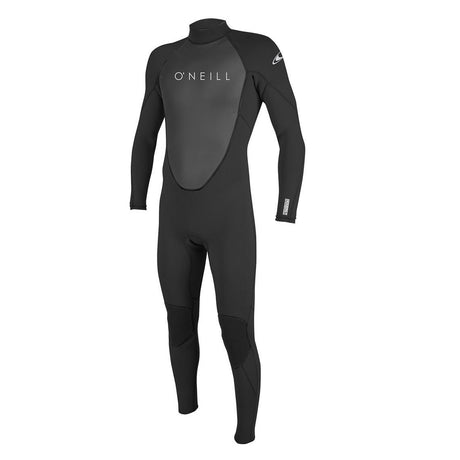
O'Neill Wetsuits
O'Neill Men's Reactor II Full Wetsuit
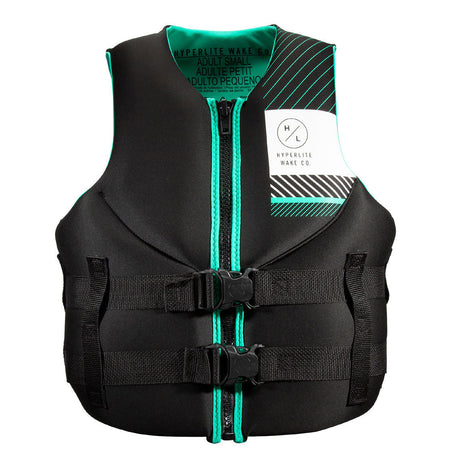
Hyperlite Women's Indy Life Jacket
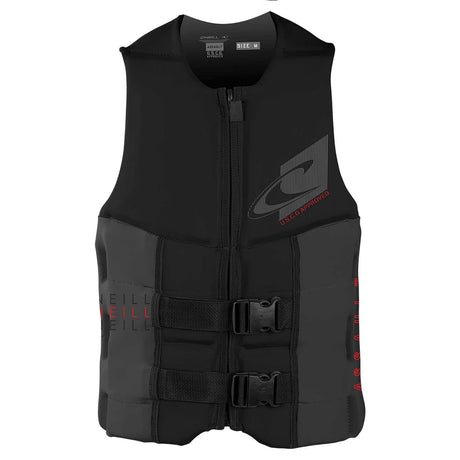
O'Neill Men's Assault Life Jacket

O'Neill Fluid Drysuit
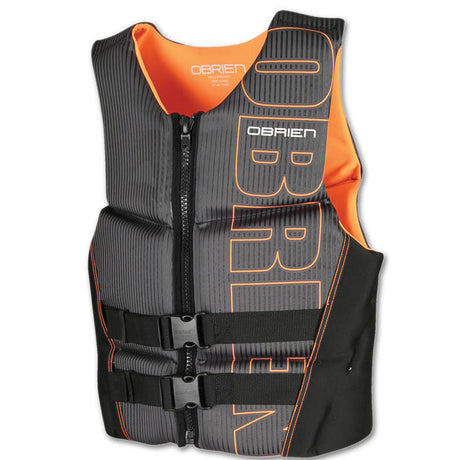
O'Brien Watersports
O'Brien Men's Flex V-Back Life Jacket
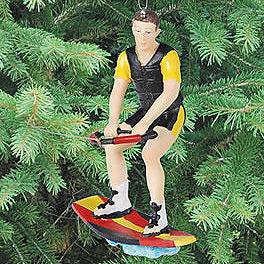
vendor-unknown
Wakeboarder Ornament
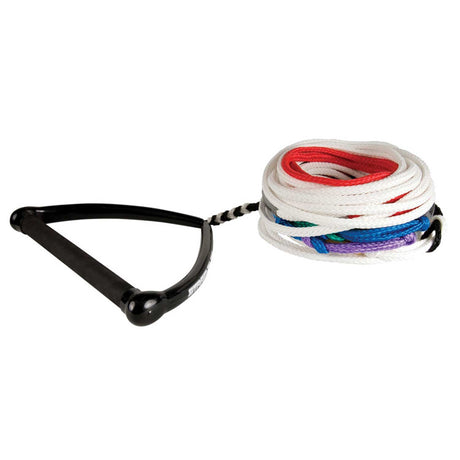
Straightline
StraightLine LE Team Handle w/ 8-Section Heavy Duty Mainline
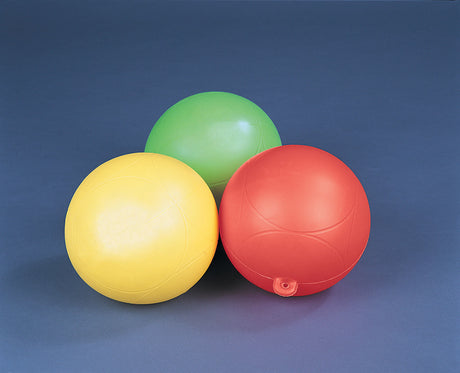
Slalom Buoy - Orange, Yellow, & Green
Your cart is empty
Subtotal:$0.00 USD
Experts on Staff
Customer service 7 days a week
Fast Shipping
Usually ships by the next business day
America's Favorite Water Sports Store
Price-match guarantee
Our promise to you
Choose options

- Galvanized Anchors
- About Hurricane Boat Anchors
- How to choose the right size Boat Anchor
- "Breakaway" Release
Pontoon Boat Anchors
- How much Anchor chain do I need?
- Anchor Holding Power
- Your Cart is Empty
How To Choose The Right Size Boat Anchor
March 06, 2017 1 Comment
"How do I choose the right size boat anchor?"
Choosing the right size boat anchor can depend on several things that we will cover in this section.
The conditions you will be in, and the manner in which you use your boat all determine how you should choose the right size boat anchor.
Generally if you have a boat 22' or less, you have several options, since you aren't likely to be out in 25-30 mph winds in that size boat - so our 7 lb, 10 lb, or 14 lb could be chosen for boats 22’ or less. But it is recommended that you carry the largest anchor you can feasibly fit on your boat.
The following things should also be considered regardless of boat size:
-(1) Is this an offshore boat? Or for lakes, rivers, inland waters, etc? -(2) Will you anchor overnight, or just day trips - then back to shore? -(3) If the weather takes a turn for the worse, will you be close enough to head back to shore? Or will you ride out the storm on anchor? -(4) Are you anchoring in very deep water? If so, then perhaps using an anchor one size up would be best, and allow you to set the anchor even faster, and with less line.
When choosing the right size boat anchor, it is recommended to select it based on the 30 mph wind rating if it will be used as your primary front anchor.
The chart below can be used as a starting point based on your boat size. You can choose from several different models depending on the conditions you'll be in, and the storage space you have.
This anchor does require chain - also available for purchase with all our products .
- 7 lb anchor - our most compact model, generally for moderate conditions, and not heavy current - i.e. day trips on small bodies of water (boats up to 22') This anchor can also be used as a stern anchor for boats up to approximately 27 feet to prevent rear swing. (Never drop any anchor from the stern as the primary anchor facing into the wind or you risk taking on water)
- 10 lb anchor - for boats up to 19' in winds up to 30 mph. It’s a step up in size & weight, with a longer handle for penetrating hard bottoms. Generally boats in this size range have the smallest storage compartments in the bow, so storing it in a different compartment might be necessary. More info here on anchor storage.
- 14 lb anchor - for boats 20-27 ft in winds up to 30 mph. Typically boats in this size range have larger compartments, however the anchor lockers can still be narrow. You can also choose the folding rollbar model.
- 18 lb anchor - for boats 28-34 ft in winds up to 30 mph. Boats in this size usually have large anchor lockers, or the anchors are mounted on the bow with an anchor windlass, anchor roller, electric anchor winch, etc.
- 22 lb anchor - for boats 35-42 ft in winds up to 30 mph. These boats also usually always have the anchors mounted on the bow with an anchor windlass, anchor roller, or manual roller, etc.
If you have any questions about choosing the right size boat anchor, feel free to contact us via e-mail.

July 21, 2017
Thanks for sharing! It can help me choose the right size boat anchor.
Leave a comment
Comments will be approved before showing up.
Also in Blog & FAQs
How much holding power does your boat anchor need.
July 31, 2017
June 09, 2017
How To Anchor Your Boat
May 07, 2017
HURRICANE BOAT ANCHORS LLC
Made in the usa, st. paul, mn.
- Sizing & Dimensions
- Breakaway Release
- Anchor Storage
- Returns Policy
- Privacy Policy
© 2024 Hurricane Boat Anchors .
Boat Reviews
- Aquila Boat Reviews
- Aspen Boat Reviews
- Avalon Boat Reviews
- Aviara Boat Reviews
- Axopar Boat Reviews
- Barletta Boat Reviews
- Bayliner Boat Reviews
- Centurion Boat Reviews
- Charger Boat Reviews
- Cruiser Yachts Reviews
- Formula Boat Reviews
- Fountaine Pajot Reviews
- Freeman Boatworks Reviews
- Galeon Luxury Yachts Reviews
- Intrepid Boat Reviews
- Jupiter Marine Reviews
- Manitou Boat Reviews
- Native Watercraft Reviews
- Phenom Yacht Reviews
- Pursuit Boat Reviews
- Sailfish Boat Reviews
- Sea Ray Boat Reviews
- Sea-Doo Watercraft Reviews
- SeaVee Boat Reviews
- Solace Boat Reviews
- Windy Boat Reviews
- X Shore Boat Reviews
- Yamaha Boat Reviews
- Boats Specs
- Marine Pros
- Boat Insurance
- Boat Warranties
- Boat Transport
- Boat Towing
- Marine Forecasts

Your Ultimate Boating Resource

2024 Pursuit OS 445: An Overview
Boat safety 101: exploring the serenity and adventure of boating, the moment of truth – 6 signs you need a new boat, eco-savvy sailing: expert tips for reducing fuel costs and enhancing your boating experience, 2024 aquila 47 molokai review, 2024 sea-doo switch 13 sport review, 2024 aspen c120 review, anchor selection: a guide to types and sizes.
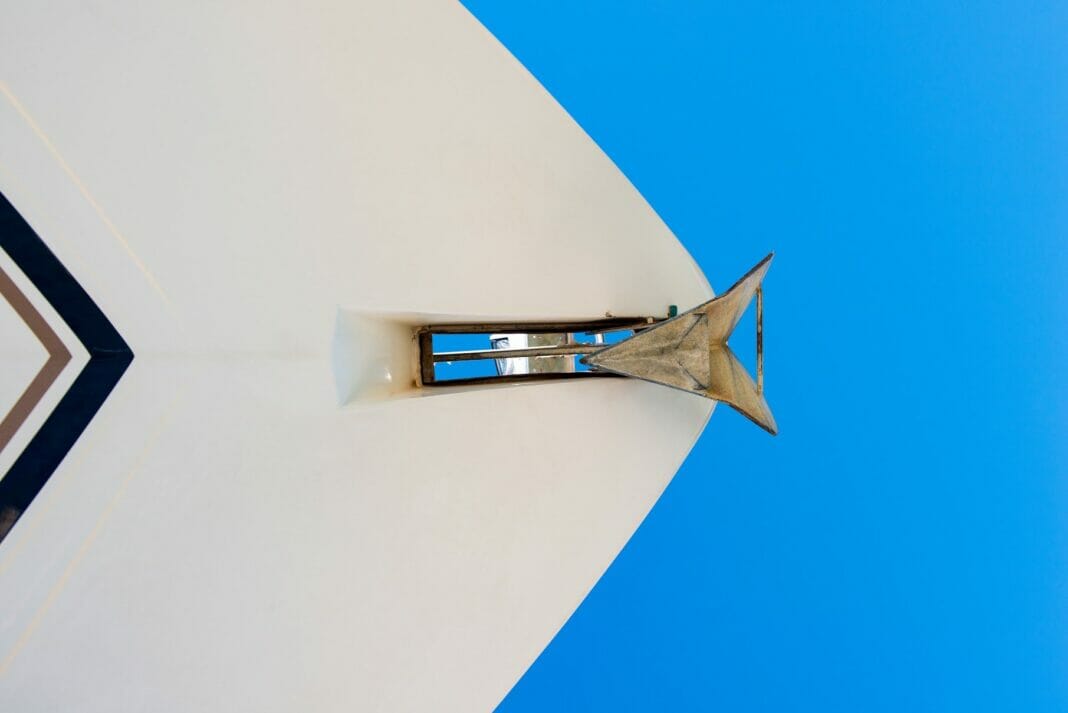
Anchoring is a crucial aspect of boating, and the right anchor can provide stability, safety and peace of mind for any sailor. Choosing the correct type and size of anchor is essential, as it can greatly impact your overall experience on the water. This guide will outline the various types of anchors available, their ideal uses, and how to choose the right size for your boat.
Understanding the Purpose of Anchors
Anchors serve multiple purposes in boating:
- Holding power : Anchors are designed to provide holding power by digging into the seabed and creating resistance, preventing the boat from drifting.
- Temporary mooring : When a boat needs to be stationary for a short period, an anchor is used to secure it in place.
- Emergencies : Anchors can serve as a safety measure in emergencies by helping to control your boat’s movements in rough weather or if the engine fails.
Types of Anchors
There are several types of anchors to cater for various boating requirements and environments. The primary ones include:
Plow Anchors
Originally designed for large ships, plow anchors resemble a plowshare and offer excellent holding power in most bottom conditions, especially sand and mud. They work by digging into the seabed and maintaining a consistent grip. Plow anchors are popular among cruisers due to their adaptability, and they can handle a variety of wind and current changes.
Danforth Anchors
Also known as fluke anchors, Danforth anchors boast superior holding power in proportion to their weight. They’re characterized by their flat, sharp flukes and long shank that allows them to dig into soft substrates like sand and mud. However, Danforth anchors may struggle with rocky bottoms and can be challenging to set in grassy or weedy seabeds.
Claw Anchors
Claw anchors, also known as Bruce anchors, have three claws that provide holding power in a variety of bottom conditions. Due to their versatile design, they re-set easily when the boat’s position changes and can function with shorter scope, which is the anchor rode (chain or rope) payed out relative to the water’s depth. These factors make claw anchors popular among boaters, though their holding power may be less than that of plow or Danforth anchors.
Mushroom Anchors
Mushroom anchors are useful for small boats in relatively calm conditions. As the name suggests, they’re shaped like a mushroom and utilize their weight to create a suction effect, embedding themselves into soft bottom substrates like silt or mud. However, they generally offer limited holding power in stronger currents or wind.
Choosing the Right Size Anchor for Your Boat
Selecting the appropriate size anchor for your vessel involves considering factors like boat weight, size, and the windage (resistance to wind). Generally, anchor manufacturers offer recommendations based on boat length, but it’s essential to factor in your specific boat’s requirements and typical anchoring conditions.
Anchor Weight
Anchors are typically sized by weight, ranging from a few pounds for small vessels to several hundred pounds for large yachts. The rule of thumb is that the heavier the boat, the heavier the anchor should be. However, it’s important to consider the type of anchor you’re using, as the holding power varies across anchor designs.
Boat Length
Boat length is another crucial aspect to consider when selecting an anchor size. Consult manufacturer guidelines on their recommendations for anchor sizing based on boat length.
Chain and Rode Size
The anchor rode, which connects your boat to the anchor, is critical for holding power. The scope, typically measured in a ratio of the rode’s length to the water’s depth, is an important factor for the anchor’s performance. A common recommendation is using a 4:1 scope for temporary mooring and a 7:1 scope for overnight anchoring. Ensure the chain (the section of the rode closest to the anchor) is of suitable size and strength to prevent it from breaking under strain.
Final Thoughts
When selecting an anchor for your boat, it’s essential to consider the type, size, and the conditions in which you’ll be anchoring. Consult manufacturer guidelines and conduct thorough research on the options available to make an informed decision. A properly sized and suited anchor will offer peace of mind, ensuring your vessel remains securely moored during your adventures on the water.
RELATED ARTICLES
Sea safety blueprint: constructing the perfect float plan for your boating adventures, latest posts, the top 9 reasons to maintain a meticulous boat log, don't miss, our newsletter.
Get the latest boating tips, fishing resources and featured products in your email from BoatingWorld.com!
What type of wood is used for pier pilings?
What is the difference between a dock and a floating pier, what is the proper technique for pulling a beginner wakeboarder, what does ‘no wake’ mean on a lake, what is the difference between wash and wake, 10 essential tips for fishing near private property, the benefits of using a drift sock: guidance for anglers, lure fishing: secrets for imitating live bait and attracting fish, explore the untapped depths of america’s best bass fishing spots, tackle your catch-and-release adventures with these 6 tips, outboard motor maintenance: tips for keeping your engine in top shape, the essential boat tool kit: tools every boater needs, diy boat building: 8 tips and tricks for building your own vessel, the art of miniature maritime craftsmanship: ship in a bottle, antifouling paints: a guide to keeping your boat shipshape, beginner’s guide to standup paddle boarding: tips and techniques, boating for fitness: how to stay active on the water, kayak safety: how to stay safe on the water, anchoring in a kayak or canoe: how to secure your small boat, 2024 yamaha 222xd review, 2024 sailfish 316 dc review, 2023 seavee 340z review, 2023 centurion fi23 review, gear reviews, megabass oneten max lbo jerkbait review, fortress anchors fx-7 anchoring system review, fortress anchors fx-11 anchoring system review, fortress anchors commando anchor kit review, fortress anchors aluminum anchors review, stay in touch.
To be updated with all the latest news, offers and special announcements.
- Privacy Policy

Anchor Sizing
When sizing an anchor or anchor rode, it’s useful to have starting point and to think of the whole system. This is a table developed by American Boat and Yacht Council (ABYC) to approximate the expected load on the anchor and the anchor rode for given wind speed and boat length. The complete table appears in Section H-40 of ABYC’s Standards and Technical Reports for Small Craft available at abycinc.org. The below table was created more than 50 years ago and it is not clear exactly how it was derived. After comparing this data in this table to work that has been done since we come to the conclusion that the values presented here represent loads expected on the anchor rode if anchored on chain only without the use of the snubbing system. And using a line rode or and adequately designed snubber you can reduce the loads by a factor of 3, by eliminating the shock loads. This is an argument for why its so important to use a snubber but when sizing anchor rode or your anchor, it is important to consider loads as stated in the table. The reason is that we can not rely on the integrity of a snubber in a storm. Should the snubber fail, the integrity of the rode should be sufficient to handle the loads without the snubber.
The ABYC Horizontal Working Load (lbs) Table
How do you intend to use your boat? Do you sail only on calm days with fair weather (Lunch Hook) or are you outfitting for an adventure (Storm) where you might be exposed to hazardous weather at anchor? For example, if you are outfitting a 35 foot boat for you should size the working rode and anchor to safely handle loads up to 1,800lbs if planning a cruising adventure, but the same margin of safety is not necessary if operating day trips from the safety of a marina.
When making sizing recommendations we are generally referring to the needs of a cruising boat spending most of its time on anchor, in doing so we try to envelope high sustained winds (45 kts) and assume poor holding conditions (low viscosity bottoms). Some may think these recommendations to be too conservative especially when compared to sizing tables from other manufacturers. Companies often make claims of superior anchor efficiency, stating that their small anchor X will outperform a much heavier anchor from their competitors and often use sizing charts as a marketing tool to that end, recommending anchors and anchor systems that are dangerously undersized for their intended use. Comparing surface area can be a good judge for potential holding capability. Our anchor sizing recommendations are presented in the table below:
ANCHOR SIZING GUIDE (Click to enlarge)
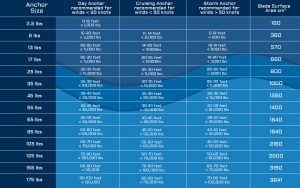
Review Cart
No products in the cart.
Please log in to access the affiliate area.
Username or Email Address
Remember Me
NEXT-LEVEL YACHTING WITH IMTRA
- THE PRINCESS PASSPORT
- Email Newsletter
- Yacht Walkthroughs
- Destinations
- Electronics
- Best Marine Electronics & Technology
- Boating Safety

- Power Voyager
Sizing A Boat Anchor
- By Lenny Rudow
- July 20, 2022
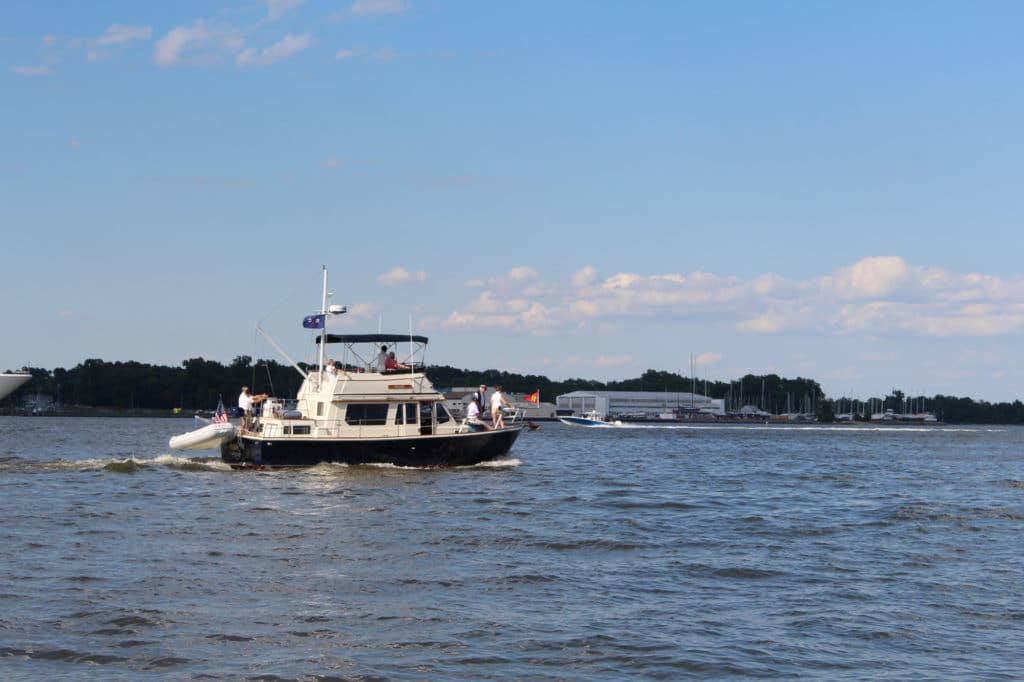
While many mariners don’t look at an anchor as a piece of safety gear, that’s exactly what it is. If you lose power and are drifting towards a jetty, need to grab some shut-eye, or have to keep the bow into the waves without burning through your fuel supply, that anchor becomes critical. And just like having properly sized life jackets aboard is imperative, having the properly sized anchor for your boat is a must too.
Sizing the right anchor for your boat depends on a number of variables:
- The size of your boat.
- The types of areas you generally go boating in.
- The type of anchor you carry.
- The range of conditions you generally go boating in.
- The amount of anchor rode you carry.
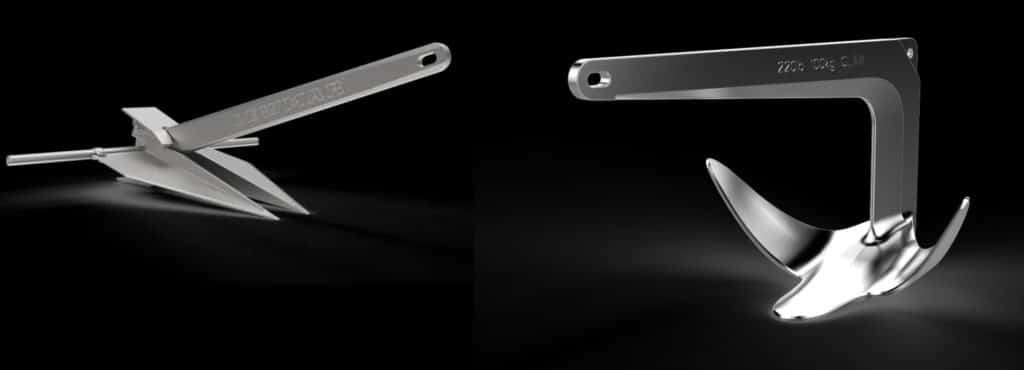
Boat Size and Anchor Size
Obviously, larger boats need larger anchors. However, since there are a number of additional variables to be considered beyond boat size, there’s no hard and fast rule as to what size anchor matches up with what sized boat. Most anchor manufacturers publish their own recommended size table or chart, indicating how their specific anchor design relates to anchor size and boat length. These are a helpful guideline, but they shouldn’t be considered the final word because as a general rule of thumb bigger is better. So, if your boat size comes in at the periphery of the recommendations for any given anchor manufacturer’s guidelines, it may be best to err on the side of going larger.
Types of Areas You Boat, and the Type of Anchor You Carry
These two variables are tied together, because the areas you cruise in will have a bearing on the type of anchor you choose. And since different anchor types have different levels of holding power, there’s a spillover effect when it comes to choosing size. Let’s use a fluke anchor versus a claw anchor as an example. Fluke anchors dig into sand and mud, but the claw works far better on rocky bottoms. So you’ll have to choose between them depending on where you go boating and which bottom type you’re likely to encounter. But when we look at the sizing chart for a manufacturer that provides both types, some discrepancies become apparent. For a 50-foot boat, a 21-pound, 10-inch by 5-inch by 28-inch fluke anchor is recommended. In the case of a claw anchor, however, the very same manufacturer recommends a 66-pound, 21-inch by 16-inch by 33-inch model for the very same boat. So, the type of anchor being used has made a measurable difference in the anchor size being recommended.
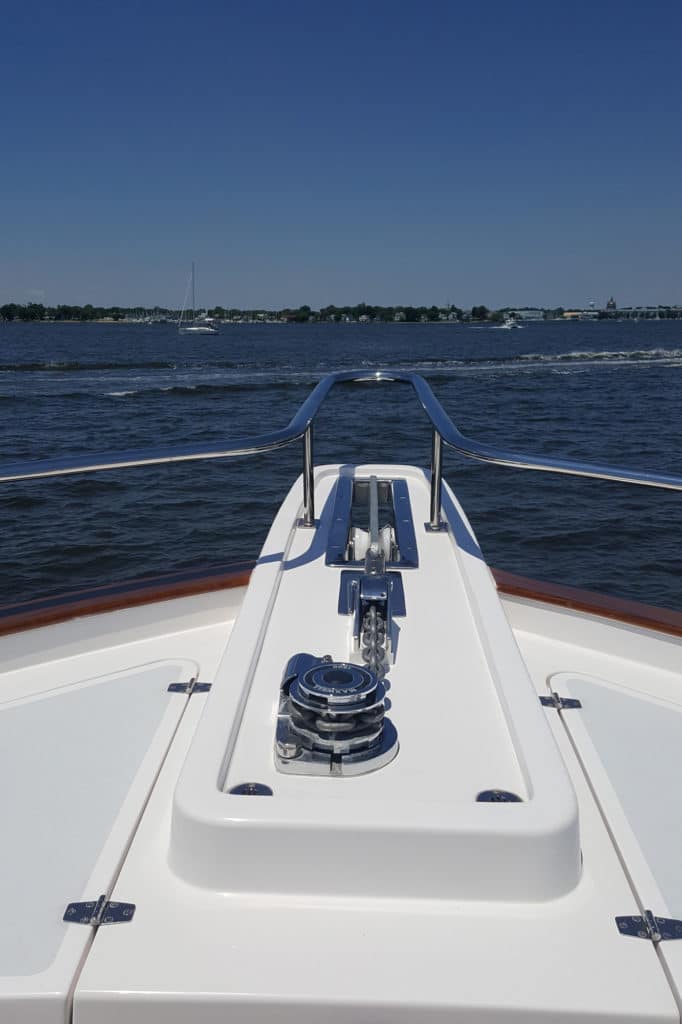
The Range of Conditions You Go Boating In
If you only leave the dock on fair-weather days, don’t go far from home, and only use your boat in protected waterways where rough conditions aren’t an issue, you probably don’t need to carry as large an anchor as boaters who venture into open waters in strong winds. This is another case where there’s no hard and fast rule, and you’ll have to make a judgement call. If you push the envelope on weather and waterways, upsizing is a good idea. But if the opposite is true a smaller size anchor may do the trick.
The Amount of Anchor Rode You Carry
Just how much scope you’ll be able to pay out at any given time will impact on how well your boat’s anchor holds in most conditions and bottom types. Of course, this factor varies depending on how deep the water is too, so yet again there’s no one formula or rule you can refer to. That said, if you carry enough rode to set out a 10:1 scope everywhere you go, you can choose a smaller size anchor than you would if you could only set out a 3:1 scope.
Note that I say “rode,” not “line.” The anchor line is just that — the line. The rode is the combination of line and chain. If you have a significant length of chain at the end of your rode, or if it’s an all-chain rode, it will weight down the end of the rode somewhat and pull against the anchor in a more horizontal manner. In many situations with many anchor types (though not all), this increases the holding power of the anchor, and thus, allows a smaller size to accomplish the same task.
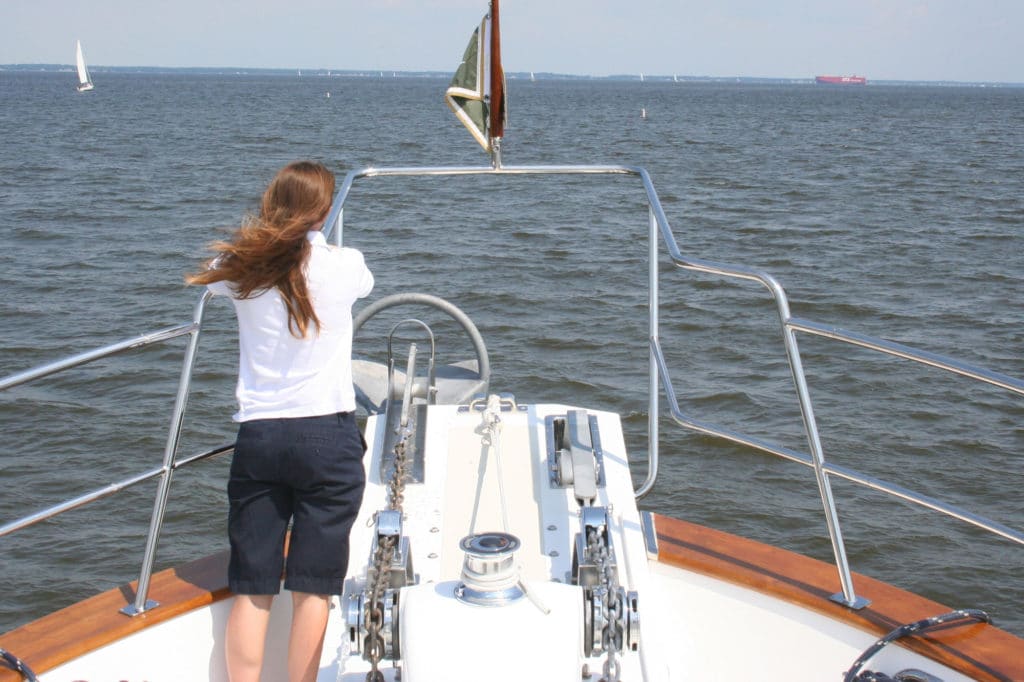
Choosing the Ideal Anchor Size
You’ve probably realized by now that there’s no one-size-fits-all answer to the question of what size anchor you need. The above factors need to be taken into account, and then a judgement call has to be made as to the appropriate choice. In some cases, you may also have limited choices due to stowage restraints. And in some other cases a particular model boat may have been designed to accommodate a specific type and size of anchor, a common situation with through-hull anchor arrangements, some anchor pulpits and some anchor lockers with integrated anchor racks. In all cases, however, remember that having the right size anchor aboard is far more than a matter of convenience — it’s a critically important piece of safety gear.
- More: Anchors , Gear , Power Voyager
- More Power Voyager

Keep Your Boat’s Generator Running
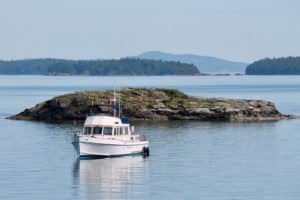
A Cruising Dream Fulfilled
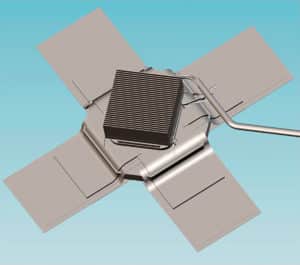
Promethient’s Thermavance Sample
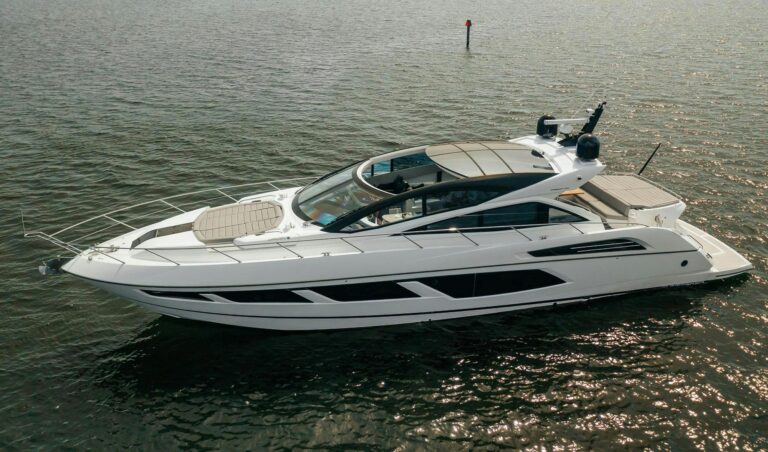
For Sale: Sunseeker Predator 68
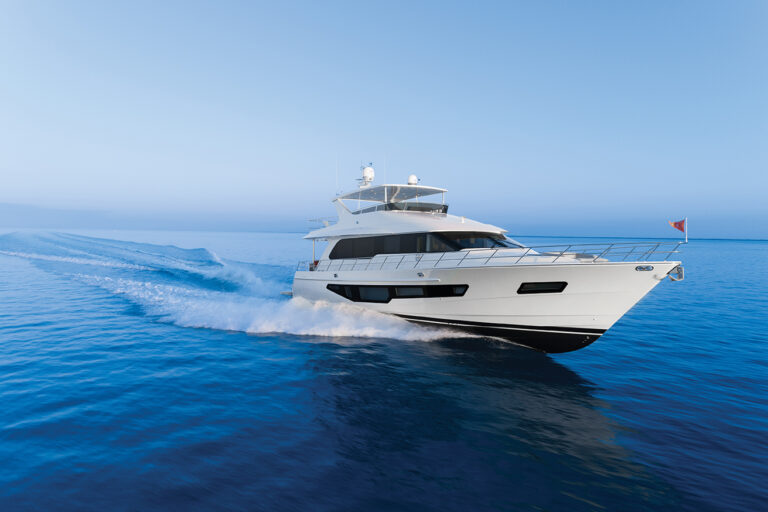
For Sale: CL Yachts CLB 72
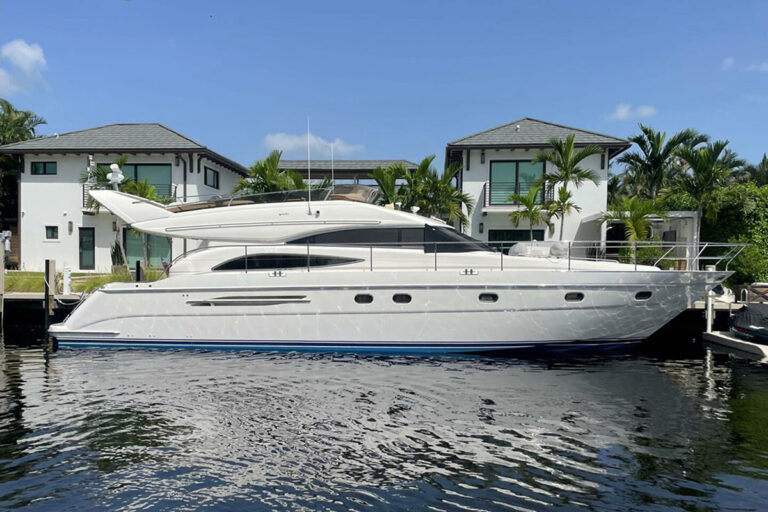
10 Yachts Under $500,000 You Can Have Today
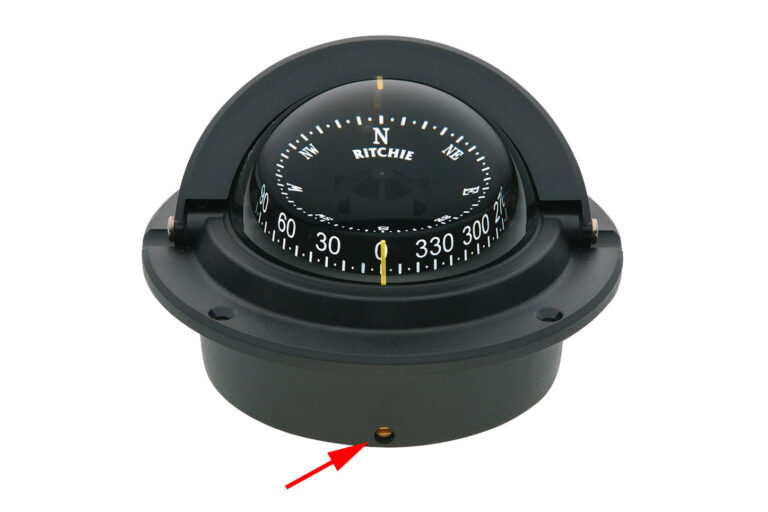
How to Swing a Compass on a Boat

- Digital Edition
- Customer Service
- Privacy Policy
- Email Newsletters
- Cruising World
- Sailing World
- Salt Water Sportsman
- Sport Fishing
- Wakeboarding

Please verify you are a human
Access to this page has been denied because we believe you are using automation tools to browse the website.
This may happen as a result of the following:
- Javascript is disabled or blocked by an extension (ad blockers for example)
- Your browser does not support cookies
Please make sure that Javascript and cookies are enabled on your browser and that you are not blocking them from loading.
Reference ID: 34ddb456-e703-11ee-9617-7171becf2dcd
Powered by PerimeterX , Inc.

Currency: GBP
- Worldwide Delivery
Mooring Warps and Mooring Lines
- LIROS 3 Strand Polyester Mooring Warps
- LIROS Braided Dockline Mooring Warps
- LIROS Classic Mooring Warps
- LIROS Green Wave 3 Strand Mooring Warps
- LIROS Handy Elastic Mooring Warps
- LIROS Moorex12 Mooring Warps
- LIROS Octoplait Polyester Mooring Warps
- LIROS Polypropylene Floating Mooring Warps
- LIROS Super Yacht Mooring Polyester Docklines
- Marlow Blue Ocean Dockline
Mooring Accessories
- Mooring Cleats and Fairleads
- Mooring Compensators
- Mooring Shackles
- Mooring Swivels
Mooring Strops
- LIROS 3 Strand Nylon Mooring Strops
- LIROS Anchorplait Nylon Mooring Strops
- Small Boat and RIB Mooring Strops
Mooring Bridles
- V shape Mooring Bridles
- Y shape Mooring Bridles
Mooring Strops with chain centre section
- 3 Strand / Chain / 3 Strand
- Anchorplait / Chain / Anchorplait
Bonomi Mooring Cleats
- Majoni Fenders
- Polyform Norway Fenders
- Dock Fenders
- Fender Ropes and Accessories
- Ocean Inflatable Fenders
Mooring Buoys
Max power bow thrusters.
- Coastline Bow Thruster Accessories
50 metre / 100 metre Rates - Mooring
Mooring information.
- Mooring Warps Size Guide
- Mooring Lines - LIROS Recommended Diameters
- Mooring Rope Selection Guide
- Mooring Warp Length and Configuration Guide
- How to estimate the length of a single line Mooring Strop
- Mooring Ropes - Break Load Chart
- Mooring Compensator Advisory
- Rope Cockling Information
- Fender Size Guide
- Majoni Fender Guide
- Polyform Norway Fender Inflation Guide
Custom Build Instructions
- More Article and Guides >
Anchor Warps Spliced to Chain
- LIROS 3 Strand Nylon Spliced to Chain
- LIROS 3 Strand Polyester Spliced to Chain
- LIROS Anchorplait Nylon Spliced to Chain
- LIROS Octoplait Polyester Spliced to Chain
Anchor Warps
- Leaded Anchor Warp
- LIROS 3 Strand Nylon Anchor Warps
- LIROS 3 Strand Polyester Anchor Warps
- LIROS Anchorplait Nylon Anchor Warps
- LIROS Octoplait Polyester Anchor Warps
Aluminium Anchors
- Galvanised Anchors
- Stainless Steel Anchors
Calibrated Anchor Chain
- Cromox G6 Stainless Steel Chain
- G4 Calibrated Stainless Steel Anchor Chain
- Lofrans Grade 40
- MF DAMS Grade 70
- MF Grade 40
- Titan Grade 43
Clearance Chain
Anchoring accessories.
- Anchor Connectors
- Anchor Trip Hooks and Rings
- Anchoring Shackles
- Bow Rollers and Fittings
- Chain and Anchor Stoppers
- Chain Links and Markers
50 / 100 metre Rates - Anchoring
Chain snubbers.
- Chain Hooks, Grabs and Grippers
- Chain Snubbing Bridles
- Chain Snubbing Strops
Drogue Warps and Bridles
- Lewmar Windlasses
- Lofrans Windlasses
- Maxwell Windlasses
- Quick Windlasses
Windlass Accessories
- Coastline Windlass Accessories
- Lewmar Windlass Accessories
- Lofrans Windlass Accessories
- Lofrans Windlass Replacement Parts
- Maxwell Windlass Accessories
- Quick Windlass Accessories
Anchoring Information
- How To Choose A Main Anchor
- Anchoring System Assessment
- Anchor Chain and Rope Size Guide
- The Jimmy Green Guide to the Best Anchor Ropes
What Size Anchor Do I Need?
- Anchor Size Guides
- Anchor Rope Break Load and Chain Compatibility Chart
- How to Choose Your Anchor Chain
- How to Establish the Correct Anchor Chain Calibration?
- Calibrated Anchor Chain - General Information
- Calibrated Anchor Chain Quality Control
- Calibrated Chain - Break Load and Weight Guide
- Galvanising - Managing Performance and Endurance expectation
- Can Galvanised Steel be used with Stainless Steel?
- Windlass Selection Guide
- More Articles and Guides
Stainless Steel Wire Rigging and Wire Rope
- 1x19 Wire Rigging
- 7x19 Flexible Wire Rigging
- Compacted Strand Wire Rigging
- Insulated 1x19 Wire Backstays
Wire Rigging Fittings
- Swaged Terminals
- Swageless Terminals
- Turnbuckles / Rigging screws
- Turnbuckle Components
- Backstay Insulators
- Wire Terminals
Rigging Accessories
- Backing Plates
- Backstay Adjuster and Fittings
- Backstay Blocks
- Pins, Rings and Nuts
- Rigging Chafe Protection
Fibre Rigging
- DynIce Dux Fibre Rigging
- LIROS D-Pro Static Rigging
- LIROS D-Pro-XTR Fibre Rigging
- Marlow Excel D12 MAX 78 Rigging
- Marlow M-Rig Max Rigging
Fibre Rigging Fittings
- Bluewave Rope Terminals
- Colligo Marine Terminals
Dinghy Rigging
- Dinghy Rigging Fittings
- Fibre Dinghy Rigging
- Stainless Steel Dinghy Rigging
Wind Indicators
Guard wires, guardrails and guardrail webbing.
- Guard Rail Fittings
- Guard Rails in Fibre and Webbing
- Guard Wire Accessories
- Guard Wires
Furling Systems
- Anti-torsion Stays
- Headsail Reefing Furlers
- Straight Luff Furlers
- Top Down Furlers
Furling Accessories
- Continuous Furling Line Accessories
- Furling Line Accessories
50 / 100 metre Rates - Wire and Fibre
Standing rigging assistance.
- More Articles and Guides >
- Cruising Halyards
- Performance Halyards
- Dinghy Halyards
Rigging Shackles
- Bronze Snap Shackles
- Captive and Key Pin Shackles
- hamma™ Snap Shackles
- Selden Snap Shackles
- Soft Shackles
- Standard Snap Shackles
- Tylaska End Fittings
- Wichard Snap Shackles
Lashing, Lacing and Lanyards
- LIROS 3 Strand Lashing, Lacing and Lanyards
- LIROS Braided Lashing, Lacing and Lanyards
- Cruising Sheets
- Performance Sheets
- Dinghy Sheets
- Continuous Sheets
- Tapered Sheets
Running Rigging Accessories
- Anti-Chafe Rope Protection
- Barton Sail Handling
- Lazy Jack Sail Handling
- Rodkickers, Boomstruts
- Sail Handling Accessories
- Slab Reefing
Shock Cord and Fittings
Control lines.
- Cruising Control Lines
- Performance Control Lines
- Dinghy Control Lines
- Continuous Control Lines
Classic Ropes
- 50 / 100 metres - Classic
- Classic Control Lines
- Classic Docklines
- Classic Halyards
- Classic Sheets
- LIROS Classic 3 Strand Polyester
50 / 100 metre Rates - Running Rigging
- 50 / 100 metres - Cruising Ropes
- 50 / 100 metres - Dinghy Ropes
- 50 / 100 metres - Lashing and Lanyards
- 50 / 100 metres - Performance Ropes
- LIROS Ropes
- Marlow Ropes
Running Rigging Resources
- Running Rigging Rope Fibres and Construction Explained
- How to Select a Suitable Halyard Rope
- How to select Sheets and Guys
- Dyneema Rope - Cruising and Racing Comparison
- Dinghy Rope Selection Guide
- Rope Measurement Information
- Running Rigging - LIROS Recommended Line Diameters
- Running Rigging Break Load Comparison Chart
- Colour Coding for Running Rigging
- Selecting the right type of block, plain, roller or ball bearing
- Replacing your Furling Line
- Recycling Rope
- Running Rigging Glossary
Custom Build Instructions for Sheets, Halyards, Control Lines
Low friction rings, plain bearing blocks.
- Barton Blocks
- Harken Element Blocks
- Seasure 25mm Blocks
- Selden Yacht Blocks
Wooden Blocks
Ball bearing blocks.
- Barton Ball Bearing Blocks
- Harken Ball Bearing Blocks
- Holt Dynamic Blocks
- Selden Ball Bearing Blocks
Ratchet Blocks
- Harken Ratchet Blocks
- Selden Ratchet Blocks
Roller Bearing Blocks
- Harken Black Magic Blocks
- Selden Roller Bearing Blocks
Clutches and Organisers
- Barton Clutches and Organisers
- Lewmar Clutches
- Spinlock Clutches and Organisers
Genoa Car Systems
- Barton Genoa Sheeting
- Harken Genoa Systems
- Lewmar HTX Genoa Systems
Traveller Systems
- Barton Traveller Systems
- Harken Traveller Systems
Deck Fittings
- Bungs and Hatches
- Bushes and Fairleads
- Deck Eyes, Straps and Hooks
- Pad Eyes, U Bolts and Eye Bolts
Rudder and Transom Fittings
- Pintles and Gudgeons
- Tiller Extensions and Joints
Stanchion Blocks and Fairleads
Snatch blocks.
- Barton K Cam Cleats
- Harken Ball Bearing Cam Cleats
- Holt Cam Cleats
- Selden Cam Cleats
- Spinlock PXR Cleats
Block and Tackle Purchase Systems
- Barton Winches, Snubbers and Winchers
- Coastline Electric Winch Accessories
- Harken Winches, Handles and Accessories
- Karver Winches
- Lewmar Winches, Handles and Accessories
- Winch Servicing and Accessories
Deck Hardware Support
- Blocks and Pulleys Selection Guide
- Barton High Load Eyes
- Dyneema Low Friction Rings Comparison
- Seldén Block Selection Guide
- Barton Track Selection Guide
- Barton Traveller Systems Selection Guide
- Harken Winch Selection Guide
- Karver Winch Comparison Chart
- Lewmar Winch Selection Guide - PDF
- Winch Servicing Guide
Sailing Flags
- Courtesy Flags
- Red Ensigns
- Blue Ensigns
- Flag Accessories
- Flag Staffs and Sockets
- Flag Making and Repair
- Signal Code Flags
- Galvanised Shackles
- Stainless Steel Shackles
- Titanium Shackles
- Webbing only
- Webbing Restraint Straps
- Webbing Sail Ties
- Webbing Soft Shackles
Hatches and Portlights
Sail care and repair.
- Sail Sewing
Maintenance
- Antifouling
- Fillers and Sealants
- Primers and Thinners
- PROtect Tape
Fixings and Fastenings
- Monel Rivets
- Screws, Bolts, Nuts and Washers
- U Bolts, Eye Bolts and Pad Eyes
Splicing Accessories
- Fids and Tools
- Knives and Scissors
General Chandlery
- Barrier Ropes
- Canvas Bags and Accessories
- Carabiners and Hooks
- Netting and Accessories
- Rope Ladders
Seago Boats and Tenders
Chandlery information, flag articles.
- Flag Size Guide
- Bending and Hoisting Methods for Sailing Flags
- Courtesy Flags Identification, Labelling and Stowage
- Courtesy Flag Map
- Flag Etiquette and Information
- Glossary of Flag Terms and Parts of a Flag
- Making and Repairing Flags
- Signal Code Message Definitions
Other Chandlery Articles
- Anchorplait Splicing Instructions
- Antifoul Coverage Information
- Hawk Wind Indicator Selection Guide
- Petersen Stainless - Upset Forging Information
- Speedy Stitcher Sewing Instructions
- Thimble Dimensions and Compatible Shackles
Jackstays and Jacklines
- Webbing Jackstays
- Stainless Steel Wire Jackstay Lifelines
- Fibre Jackstay Lifelines
- Jackstay and Lifeline Accessories
Safety Lines
Lifejackets.
- Children's Life Jackets
- Crewsaver Lifejackets
- Seago Lifejackets
- Spinlock Lifejackets
Buoyancy Aids
Life jackets accessories.
- Lifejacket Lights
- Lifejacket Rearming Kits
- Lifejacket Spray Hoods
Overboard Recovery
- Lifebuoy Accessories
- Purchase Systems
- Slings and Throwlines

Floating Rope
- LIROS Multifilament White Polypropylene
- LIROS Yellow Floating Safety Rope
- Danbuoy Accessories
- Jimmy Green Danbuoys
- Jonbuoy Danbuoys
- Seago Danbuoys
- Liferaft Accessories
- Seago Liferafts
Safety Accessories
- Fire Safety
- Grab Bag Contents
- Grab Bags and Polybottles
- Handheld VHF Radios
- Sea Anchors and Drogues
Safety Resources
- Guard Wires - Inspection and Replacement Guidance
- Guard Wire Stud Terminal Dimensions
- Webbing Jackstays Guidance
- Webbing Jackstays - Custom Build Instructions
- Danbuoy Selection Guide
- Danbuoy Instructions - 3 piece Telescopic - Offshore
- Liferaft Selection Guide
- Liferaft Servicing
- Man Overboard Equipment - World Sailing Compliance
- Marine Safety Information Links
- Safety Marine Equipment List for UK Pleasure Vessels
Sailing Clothing
- Sailing Jackets
- Sailing Trousers
- Thermal Layers
Leisure Wear
- Accessories
- Rain Jackets
- Sweatshirts
Sailing Footwear
- Dinghy Boots and Shoes
- Sailing Wellies
Leisure Footwear
- Walking Shoes
Sailing Accessories
- Sailing Bags and Holdalls
- Sailing Gloves
- Sailing Kneepads
Clothing Clearance
Clothing guide.
- What to wear Sailing
- Helly Hansen Mens Jacket and Pant Size Guide
- Helly Hansen Womens Sailing Jacket and Pant Size Guide
- Lazy Jacks Mens and Womens Size Charts
- Musto Men's and Women's Size Charts
- Old Guys Rule Size Guide
- Sailing Gloves Size Guides
- Weird Fish Clothing Size Charts
The Jimmy Green Clothing Store
Lower Fore St, Beer, East Devon, EX12 3EG
- Adria Bandiere
- Anchor Marine
- Anchor Right
- August Race
- Barton Marine
- Blue Performance
- Brierley Lifting
- Brook International
- Brookes & Adams
- Captain Currey
- Chaineries Limousines
- Coastline Technology
- Colligo Marine
- Cyclops Marine
- Douglas Marine
- Ecoworks Marine
- Exposure OLAS
- Fire Safety Stick
- Fortress Marine Anchors
- Hawk Marine Products
- Helly Hansen
- International
- Jimmy Green Marine
- Maillon Rapide
- Mantus Marine
- Marling Leek
- Meridian Zero
- MF Catenificio
- Ocean Fenders
- Ocean Safety
- Old Guys Rule
- Petersen Stainless
- Polyform Norway
- PSP Marine Tape
- Sidermarine
- Stewart Manufacturing Inc
- Team McLube
- Technical Marine Supplies
- Titan Marine (CMP)
- Ultramarine
- Waterline Design
- William Hackett
Clearance August Race Boat Cleaning Kit £26.00
Clearance LIROS Racer Dyneema £55.08
Clearance Folding Stock Anchor £123.25
Clearance LIROS Herkules £0.00
Clearance Barton Size 0 Ball Bearing Blocks - 5mm £10.13
Clearance Marlow Blue Ocean® Doublebraid £18.48
Mooring Clearance
Anchoring clearance, standing rigging clearance, running rigging clearance, deck hardware clearance, chandlery clearance, safety clearance.
The Jimmy Green Anchor Size Comparison Chart is compiled from individual manufacturer recommendations and highlights how similar the suggestions are across various designs.
How to choose your Anchor Weight by Manufacturer Recommendation
- Find the column below that best represents your Boat Length Overall.
- Compare your displacement with the tonnage listed.
- If the displacement is greater than displayed in your column in the table, or the yacht is a multihull, consider moving across to the next column to increase the diameter.
- Consider the worst-case scenario for your anticipated Anchoring - this will dictate whether you go for the minimum required or the ocean cruising approach
- Consider the manufacturer sizing parameters listed below the tables
- Compile a short list of potential anchors to consider
Rex Francis has set the Anchor Right parameters for the Sarca Excel in a slightly different format. However, it can still be compared with other anchor designs with a little interpretation.
SARCA Excel Parameters - Length and Displacement Anchor Right Advisory - If your boat is over the limit in either column, it is advisable to upgrade to the next size. Upgrading one size for a multihull or long-term anchor dependent cruising would also be considered good practice.
Most anchor manufacturers publish a recommended weight of anchor by either the length overall or a combination of length, displacement and windage.
Some top manufacturers also include weather conditions and distinguish between monohulls and multihulls.
The top manufacturers are generally conservative and specify more criteria to help you choose.
The authority of each manufacturer recommendation may be judged by several factors: reputation, personal experience, research, the number of relevant factors taken into account, and the amount of detailed information they publish on the subject.
The Jimmy Green Anchor Size Chart collates the recommended sizing for all the anchors we offer on our website and highlights how similar the recommendations are. Interpretation is still required, e.g. multihulls, high windage profile and extreme weather.
Anchor Sizing Parameters by Manufacturer
A more detailed explanation of how the data for individual anchors is presented and how it is collated into the Comparison Table follows:
Galvanised and Stainless Steel Anchors
Rocna and Vulcan, Galvanised and Stainless Steel - Length and Displacement
Rocna/Vulcan recommend an anchor one size larger than indicated in their guide for multihulls
Quote from their Fitment Guide - ”our anchor sizing recommendations are intended to provide an anchor adequate for use in most all conditions. We base our calculations on 50 knots of wind, associated surge, and poor holding bottoms.”
Mantus Mark 1 and 2 – Length, Displacement and Wind Speed
Mantus Quote - “we are generally referring to the needs of a cruising boat spending most of its time on anchor. In doing so, we try to envelope high sustained winds (50 knots) and assume poor holding conditions (low viscosity bottoms).”
Mantus publish a chart in three categories – “Lunch Anchor category is recommended for lighter use, expected winds under 30 knots, working anchor for winds under 50 knots and finally, storm anchor recommendations are intended for winds above 50 knots.”
N.B. The Jimmy Green Comparison Table is derived from the Mantus middle category.
Spade Galvanised and Stainless Steel – Length and Displacement
Spade recommend an anchor one size larger than indicated in their guide for multihulls
UltraMarine Stainless Steel – The UltraMarine Anchor Size Guide considers multiple factors. Their comprehensive approach includes Length, Displacement, Mono/Multihull and Windage Profile criteria.
Lewmar Epsilon, Delta and Claw – Length only
Lewmar guidelines are illustrated in a shaded colour range by length only, so you need to judge displacement, i.e. light, average, or heavy, compared with similar length yachts. If the answer is heavy, upgrading to the next size is advisable.
Plastimo Britany – Length only
Plastimo Quote – “Anchor weight per boat length is only given as an indication. However, your anchor selection should also recognise the specific construction of your vessel.”
Using a lightweight anchor goes against the traditional belief that weight is one of the most critical factors in holding power.
Fortress Quote – “Fortress design does not depend upon weight to provide world class performance.”
However, the most popular application for aluminium anchors is as a convenient, high holding power secondary or kedge anchor.
Fortress/Guardian – Length only
Fortress Quote – “Boat anchor size recommendations are for boats of average windage and proportions in 30 knots of wind, average bottom conditions, and moderate protection from open seas. Remember that the loads in 42 knots of wind are twice as much as in 30 knots.”
Spade Aluminium – Length and Displacement
Spade recommend an anchor one size larger than indicated in their guide for multihulls.
Spade Quote – “Aluminium version not recommended for use as a primary anchor.”
Lewmar LFX – Length only
Compare Prices and Purchase an Anchor
- New Sailboats
- Sailboats 21-30ft
- Sailboats 31-35ft
- Sailboats 36-40ft
- Sailboats Over 40ft
- Sailboats Under 21feet
- used_sailboats
- Apps and Computer Programs
- Communications
- Fishfinders
- Handheld Electronics
- Plotters MFDS Rradar
- Wind, Speed & Depth Instruments
- Anchoring Mooring
- Running Rigging
- Sails Canvas
- Standing Rigging
- Diesel Engines
- Off Grid Energy
- Cleaning Waxing
- DIY Projects
- Repair, Tools & Materials
- Spare Parts
- Tools & Gadgets
- Cabin Comfort
- Ventilation
- Footwear Apparel
- Foul Weather Gear
- Mailport & PS Advisor
- Inside Practical Sailor Blog
- Activate My Web Access
- Reset Password
- Pay My Bill
- Customer Service

- Free Newsletter
- Give a Gift

How to Sell Your Boat

Cal 2-46: A Venerable Lapworth Design Brought Up to Date

Rhumb Lines: Show Highlights from Annapolis

Open Transom Pros and Cons

Leaping Into Lithium

The Importance of Sea State in Weather Planning

Do-it-yourself Electrical System Survey and Inspection

Install a Standalone Sounder Without Drilling

When Should We Retire Dyneema Stays and Running Rigging?

Rethinking MOB Prevention

Top-notch Wind Indicators

The Everlasting Multihull Trampoline

How Dangerous is Your Shore Power?

DIY survey of boat solar and wind turbine systems

What’s Involved in Setting Up a Lithium Battery System?

The Scraper-only Approach to Bottom Paint Removal

Can You Recoat Dyneema?

Gonytia Hot Knife Proves its Mettle

Where Winches Dare to Go

The Day Sailor’s First-Aid Kit

Choosing and Securing Seat Cushions

Cockpit Drains on Race Boats

Rhumb Lines: Livin’ the Wharf Rat Life

Re-sealing the Seams on Waterproof Fabrics

Safer Sailing: Add Leg Loops to Your Harness

Waxing and Polishing Your Boat

Reducing Engine Room Noise

Tricks and Tips to Forming Do-it-yourself Rigging Terminals

Marine Toilet Maintenance Tips

Learning to Live with Plastic Boat Bits
- Sails, Rigging & Deck Gear
PS Advisor: Sea Anchor Sizing
As with most anchors, size does matter..
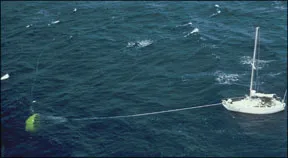
I read your interesting article, “Best Tested Sea Anchors,” in the Feb. 1, 2005 issue. I applied the sizing tables from each of the manufacturers you cited, and came up with very different size recommendations. My vessel is 40 feet and 26,000 pounds. Fiorentino recommends a 12-foot Para Anchor, and Para-Tech recommends an 18-foot Sea Anchor. How do I know which size is right? Do these different size

Photo courtesy of Para-Tech
anchors really produce the same amount of drag?
Stan Weed Twin Diesel Tollycroft 40 Via e-mail
While most sea anchor manufacturers may use similar formulas for determining the right size sea anchor for a boat, other factors must be considered, including the weight of the material used in the anchor and a boat’s windage. Ultimately, what matters is that the anchor can displace enough water mass for your size boat.
It’s a good idea to select a sea anchor, and then use that maker’s criteria to determine what size you need for your boat. If you have questions or concerns, contact the manufacturer for clarification.
According to Don Whilldin, president of Para-Tech (maker of the Sea Anchor), the company figures Sea Anchor sizing based on a boat’s length, displacement, and type. If the result is on the line between two sizes, Para-Tech recommends going with the larger size.
“We like to see the Sea Anchor (
www.seaanchor.com ) displacing about two times the boat’s displacement,” explained Whilldin. “A 12-foot Sea Anchor displaces 22,400 pounds of water; 15-foot, 43,800 pounds; and 18-foot, 75,700 pounds. It is the water mass which is holding the boat.”
Practical Sailor
also spoke with Zack Smith of Fiorentino Para Anchors ( www.paraanchor.com
). Smith maintains that rode tension is the big secret in successfully using and sizing a parachute sea anchor.
“Rode naturally stretches under force until it becomes taut. As force is reduced, rode becomes relaxed,” Smith wrote us. “What we want to avoid is too long a period of rode slack because this leaves a vessel-swinging beam to, where waves can heavily roll the boat or in rare circumstances, cause it to fall back on the rudder(s).”
One way to get and maintain more rode tension is to deploy a larger anchor; however, this also makes retrieving the anchor more difficult. In order to get more tension out of a smaller anchor, Smith suggests paying out shorter lengths of rode, adding a small length of chain next to the parachute, or flying a riding sail to increase vessel windage.
For more on storm survival gear, check out Lin and Larry Pardey’s “Storm Tactics Handbook” (
PS , January 2009), which delves deeply into sea anchors, and our sea drogues evaluation on pages 24-30 of this issue.
RELATED ARTICLES MORE FROM AUTHOR
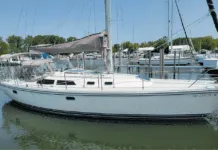
Mailport: Water heater mystery smell
Leave a reply cancel reply.
Log in to leave a comment
Latest Videos

Island Packet 370: What You Should Know | Boat Review

How To Make Starlink Better On Your Boat | Interview

Catalina 380: What You Should Know | Boat Review
- Privacy Policy
- Do Not Sell My Personal Information
- Online Account Activation
- Privacy Manager
What Size Anchor Do I Need? (Anchor Size Chart)
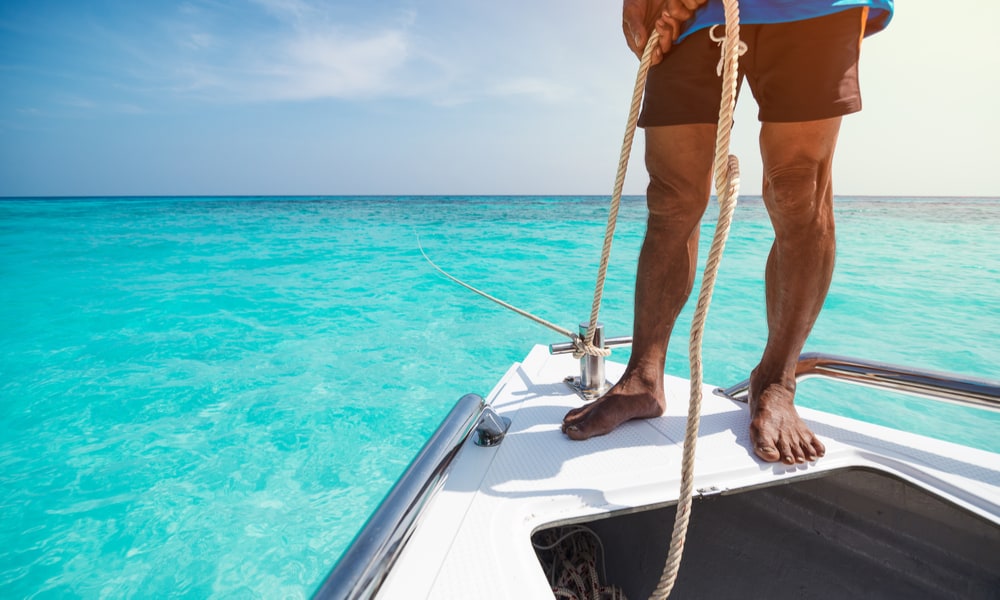
When it comes to boat safety items, an anchor is non-negotiable. Your anchor size roughly depends upon your boat size, type, wind speed, anchor type, and anchoring conditions you encounter.
To be precise, pinpointing the exact anchor size for your boat can be difficult. Nevertheless, it is always a good idea to follow the rough guidelines provided by your anchor manufacturer.
For your convenience, we’ve compiled all the information you need to figure out the right size of anchor for your boat in this post. Let’s begin!
Table of Contents
What Factors to Consider Before Buying a Boat Anchor?
Types of boat anchors, anchor size chart, what size anchor do i need, what are some common anchoring mistakes.
1. Holding power
The holding power of an anchor is the pull force it must withstand in order to hold the boat of a given weight in place.
Holding capacity depends upon the ability of the anchor to dig, the soil measurements, and the shape of the anchor. Holding power also varies with environmental factors such as wind speed.
2. Anchor weight:
Besides holding power, the anchor weight is also a primary factor you should consider. The anchor must be heavy enough to be able to drag through the bottom so that your vessel stays put in a single place.
In fact, many suggest always taking two anchors on board with you at all times, especially if you anchor your boat overnight ; one, a simple hook style anchor for calm water and weather conditions, and a heavy one that assures your boat safety even during stormy and turbulent conditions.
Nevertheless, many new generation anchors today rely on the design that offers the best holding power and not really on the weight of the anchor.
3. Type of seabed:
Some types of anchors are efficient for sandy or muddy seabed, while others might be the best in the case of rough and rocky bottoms.
Almost all types of anchors have impressive holding power in hard sand bottoms. However, in mud bottoms, anchors need to penetrate high in order to reach the bottom material.
Likewise, weed bottoms are truly challenging to penetrate for anchors. Therefore, the anchor weight plays a critical role in such a seabed type.
Overall, you must be aware of the seabed types that you’ll encounter along your voyage to be able to choose the right design and sized anchor for your vessel.
1. Folding Grapnel:
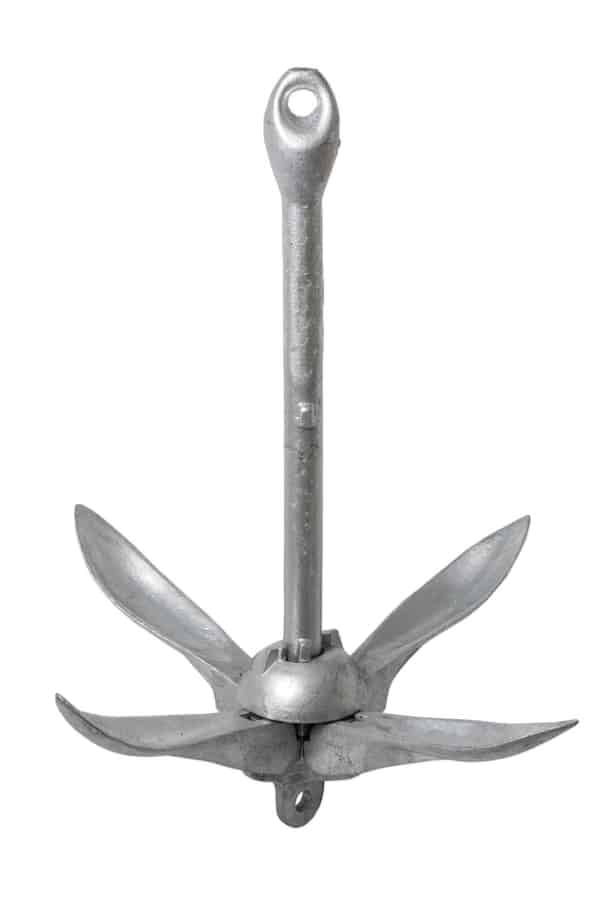
Folding grapnels features multiple tines to grab structures and are great to anchor to an area with rough or rocky bottom. These anchors are great for small vessels, inflatables, and jet skis and are recommended by many as secondary or emergency anchors.
2. Reef Anchors:
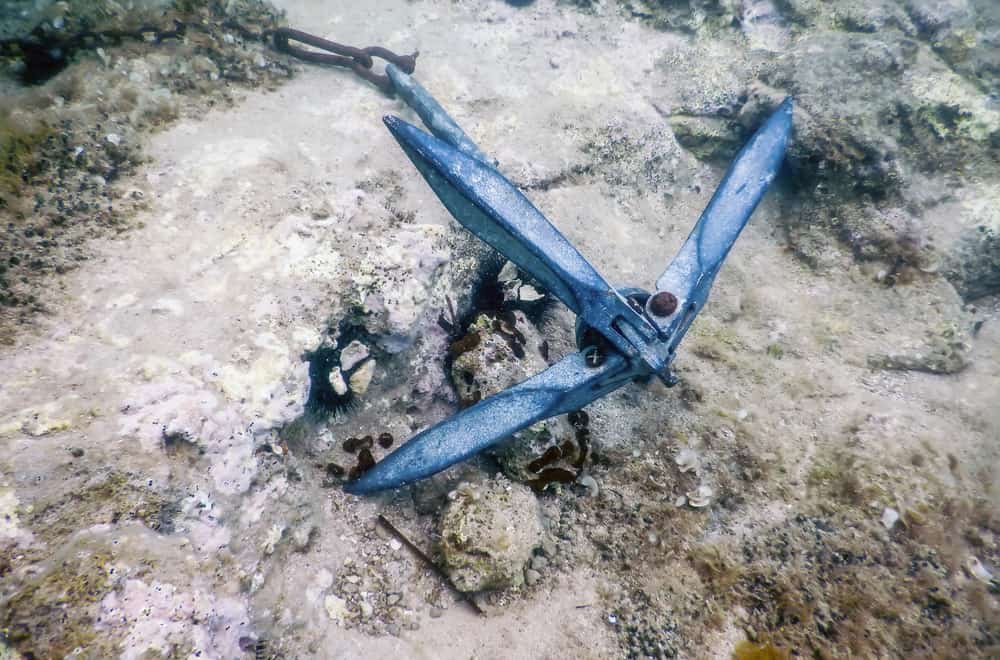
As the name suggests, reef anchors are great for coral reefs and rocky bottoms. Many boaters choose to hand-weld and DIY reef anchors.
3. Plough anchors:
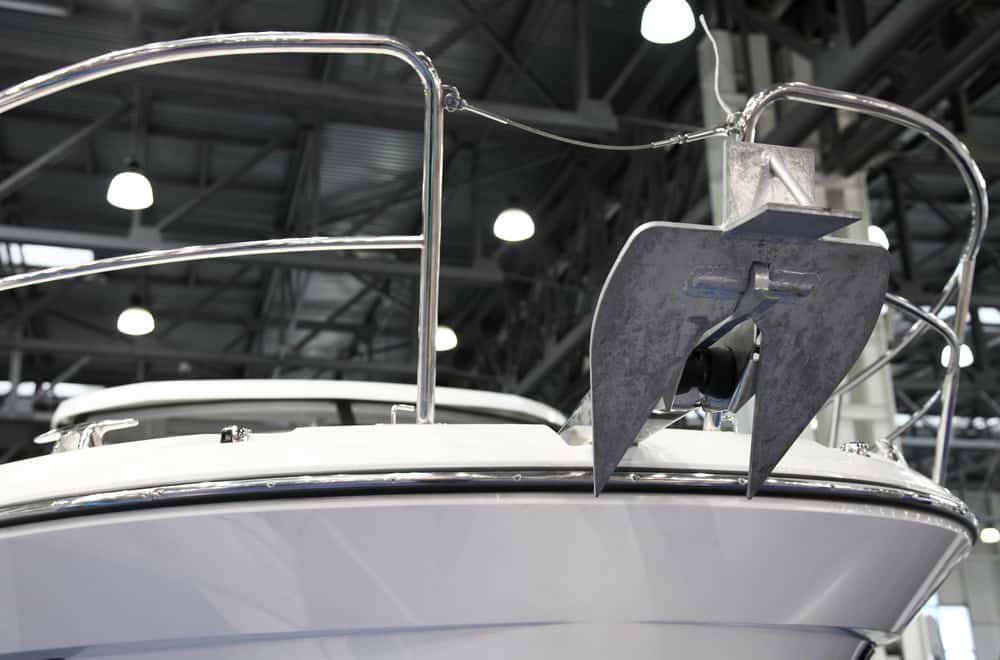
Plough anchors have a single penetrating point attached to the central shank and are ideal for sandy, muddy, and weed bottoms. You might notice arched shank in modern plough anchor designs. As long as it gets a good grip, this anchor type is also great for rocky bottom uses.
On the other hand, plough anchors might not be the ideal anchor for loose bottoms, as it only gets dragged along the boat without any resistance.
4. Claw anchors:
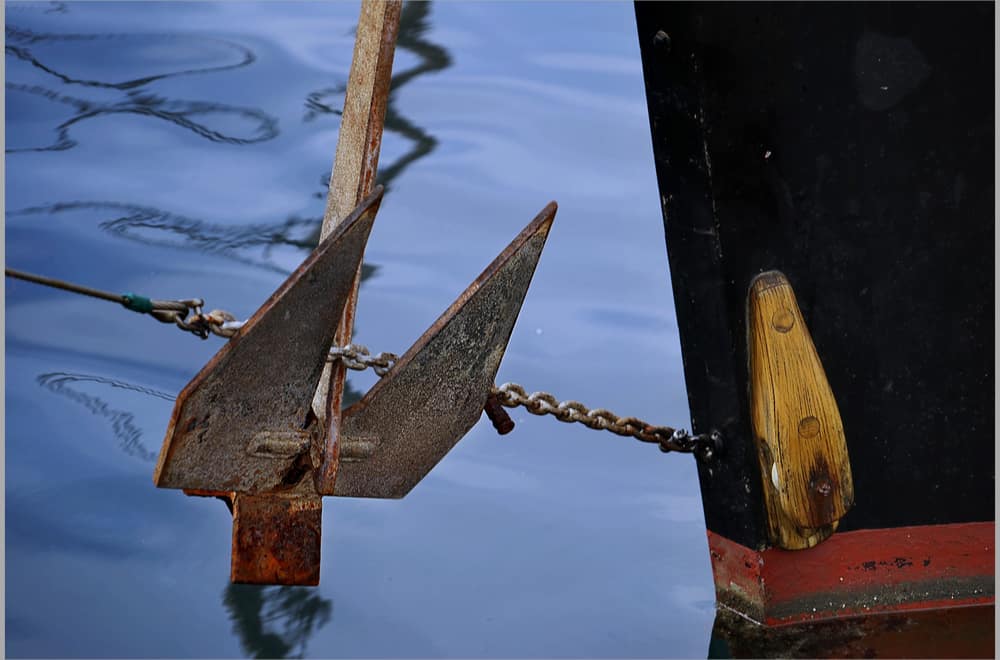
Claw anchors have a broader scoop shape than plough anchors and are suitable for anchoring in a variety of sea beds . It is ideal for sandy and muddy sea bottom but also performs decent enough in rocky bottoms. Nevertheless, it isn’t a great anchor candidate when it comes to loose sand bottoms.
5. Fluke or Danforth anchors:
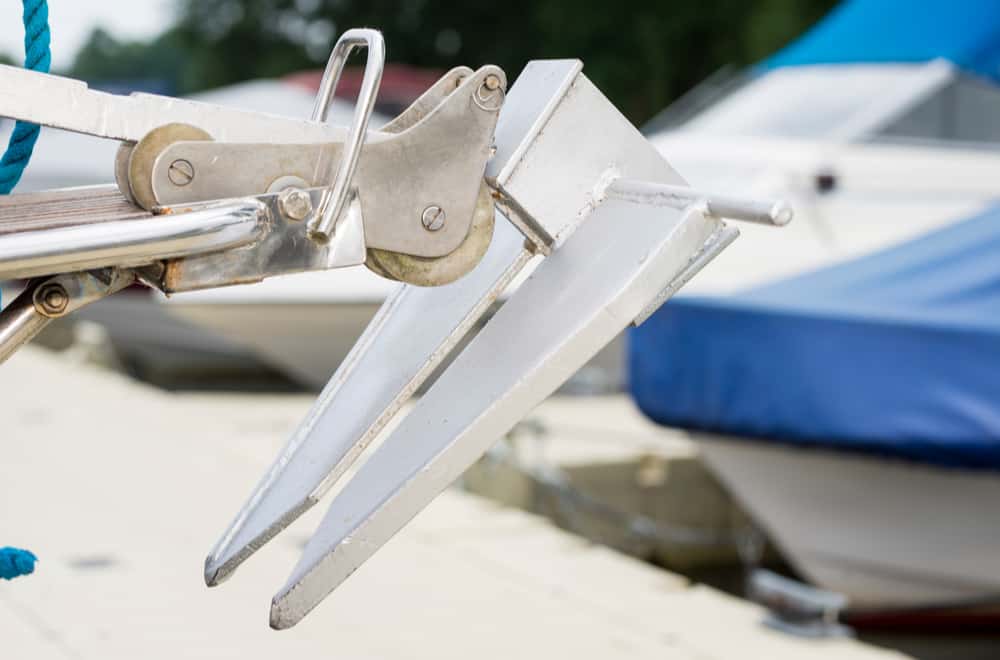
Fluke anchors feature two triangular-shaped flukes attached to the central shank to bury onto the sea bed. Due to its simple design and lightweight character, it is undoubtedly a great choice for small crafts.
The small gap in between the flukes in the Danforth anchor allows better grip onto the rough sea bed. Although the orientation of the flukes is changeable depending upon the seabed material, the ideal angle for maximum efficiency is 30 degrees.
6. Mushroom anchors:
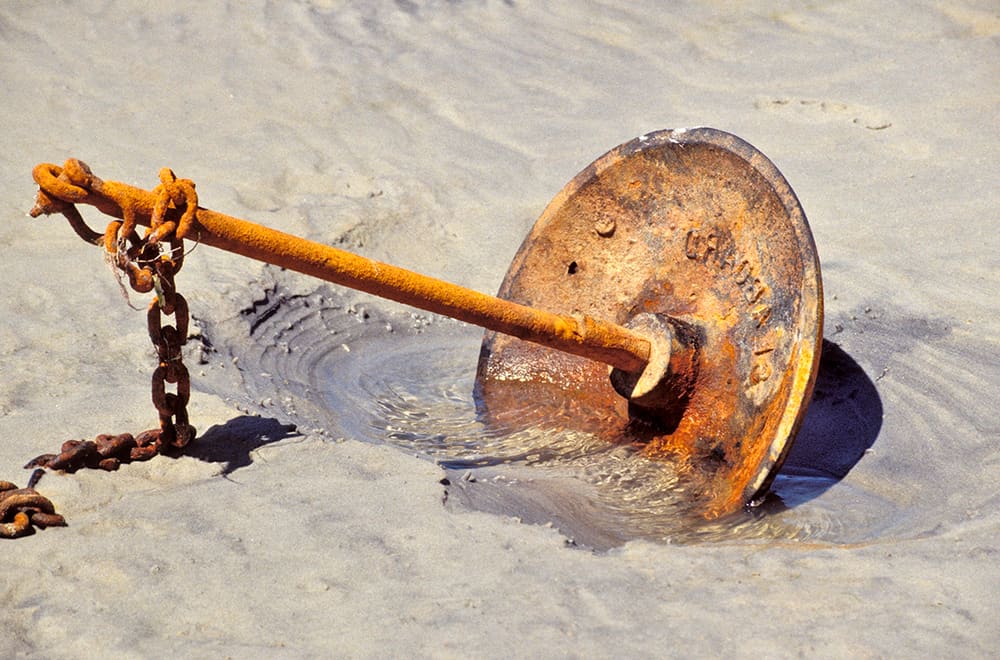
Another great anchor for small vessels and dinghies is the mushroom anchor . Small mushroom anchors are ideal if you often anchor your boat to a river bottom. On the other hand, large mushroom anchors are used for mooring purposes.
7. Spade with roll bar anchors:
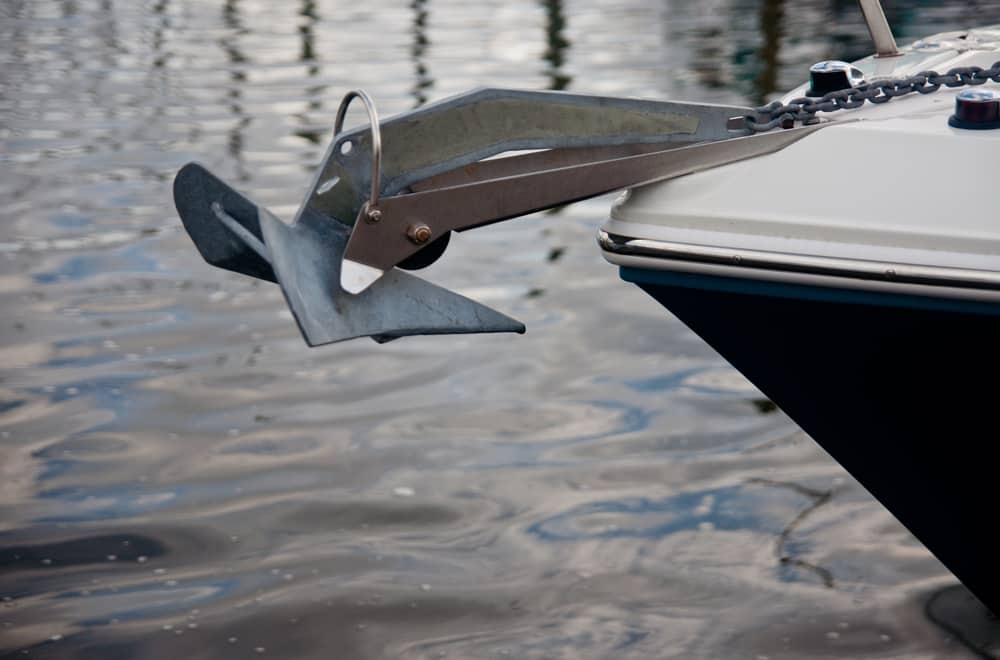
Distributed by brands such as Manson and ROCNA, a spade with roll bar anchors is designed to set fast onto any type of sea bed with impeccable holding power.
For your convenience, we’ve done all the research for you. Here are some common anchor types used in the US and the anchor weight recommended for them depending on the boat length.
Remember to take this list only for reference purposes and research for the accurate and updated recommended anchor size listed by your manufacturer. And, when in doubt or during stormy conditions, always go a size higher.
Note: Unless specified otherwise, the chart assumes an average boat weight , average bottom conditions, and typical environmental conditions, including wind speed. In the case of exceptionally long and heavy vessels, many brands such as Lewmar recommend the clients follow the relevant Classification Societies for instructions.
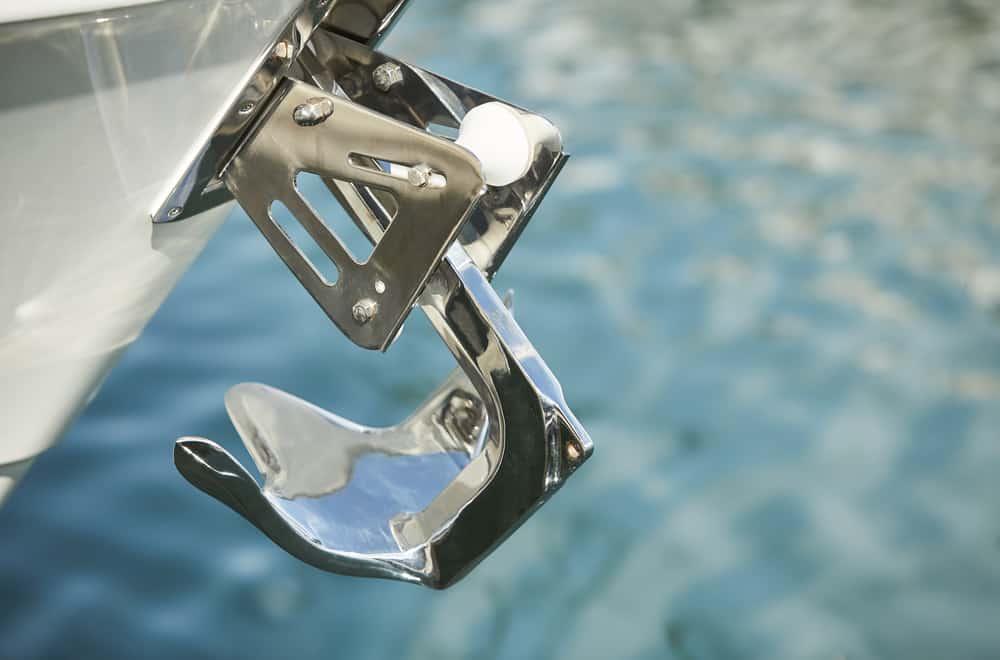
The standard calculation is 1 lb of anchor for each foot of the boat. Once you’re ready with this basal value, you can then adjust the anchor size by taking the instructions below to size up or down the anchor.
As per the rope, use three-strand nylon, and the minimum scope for your anchor must be 5:1. The scope value should be around 7:1 in case of heavy vessels.
The boat anchor scope is the ratio of the deployed anchor rode length to the depth of the water from the deck height to the bottom of the water body.
Likewise, the 6 ft chain for every 25 ft of water depth rule is also the golden standard. Moreover, anchors require at least one ft of chain every one ft of boat length for maximum efficiency.
Up your boat anchor size, regardless of the manufacturer’s recommendation, if you relate to any of the following scenarios.
- Your anchor rode is relatively lightweight.
- Your boat is relatively heavier than other boats with similar dimensions.
- Your boat is usually anchored in an area where weather change is unpredictable and quick.
- Your boat is big and wide relatively.
- The anchored area has a lot of windage.
- You’re planning an offshore sea voyage .
On the other hand, when it comes to sizing down your anchor size, the typical suggestion is that you don’t do it unless and until you check these conditions.
- You’re well aware of what type of seabed you will be anchoring your boat in.
- You never anchor your boat for a long duration or overnight.
- The wind speed of your sailing area never exceeds 10 knots.
- Your anchor rode is too big and heavy for your lightweight boat.
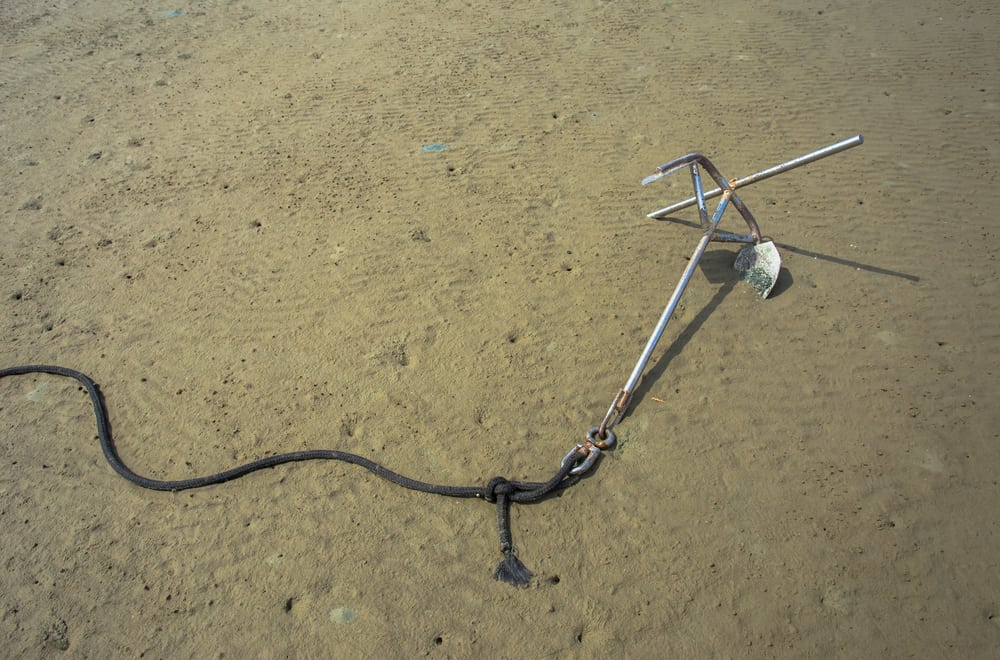
Now that we all know how to choose the right boat anchor size for your boat let’s have a brief look at a few common mistakes sailors repeatedly make while anchoring their boat.
- Losing anchor in a trip is definitely not a new piece of news to experienced sailors. Many forget to secure the anchor line to the boat and simply throw the anchor into the water body.
Given this, many experts recommend sailors at least own two anchors on board with them during their journey.
- The anchor line can be messy to deal with, given how long they are. Often, sailors or the person on the foredeck make the mistake of letting the anchor go with their foot wrapped in the rope. That’s a pretty risky scenario.
Remember that when it comes to boat anchors , the bigger, the better unless the weight of the anchor is too heavy for your boat or it is too difficult to retrieve manually.
Also, for multihulls, many brands, including Spade and Rocna, suggest the buyers to up the size than recommended in the guide.
We hope you could form a clear idea on your head regarding the sizing of the boat anchor you require after reading this post. Let us know in case of any more queries!
Related posts:
- How to Obtain a Motor Boat License? (Unlimited Guides)
- 11 Right of Way Rules for Boating
- What Size Battery Do I Need for My Boat? (Chart)
- What Does A Ship Captain Do?
Leave a Comment Cancel reply
Save my name, email, and website in this browser for the next time I comment.

Rocna Anchors Sizing Guide
There’s a rocna original, rocna mk ii, or vulcan anchor to suit just about any vessel – including larger sizes not featured here. to choose the correctly sized rocna or vulcan anchor for your boat, follow the chart and instructions., anchor sizing guide.
For Multihulls: use the chart as instructed, then select the model one size larger.
Use the tabs to navigate between Metric Tonnes (t), Short Tons (T), and Pounds (lb).
Rocna Original & Vulcan
- Metric Tonnes
Rocna MK II
Larger rocna anchors.
Our charts do not accommodate vessels requiring anchors larger than the Rocna Original 110 (243 lb) or Rocna Mk II 100 (220 lb). This is because of increasing complexities of the factors involved. Please enquire about larger Rocna anchor sizes.
Classification society rules and/or legal requirements may mandate anchor sizes for these vessels.
CLASSIFICATION RULES SIZING FOR LARGER ANCHORS
Rocna anchors may be sized by classification society rules for SHHP anchors. An SHHP type is usually permitted a mass 33% lighter than HHP types, or 50% lighter than “standard stockless” types. Classified sizing is based on a vessel’s type, purpose, and calculated Equipment Number (E.N.).

For more information, please consult the Rocna Knowledge Base articles on our sizing recommendations and classification and certification .
Our Anchor Sizing is Conservative
Unlike other manufacturers, our anchor sizing recommendations are intended to provide an anchor adequate for use in most all conditions. We base our calculations on 50 knots of wind, associated surge, and poor holding bottoms. For more on our philosophy and rationale, please consult our Knowledge Base article on our sizing recommendations.
This chart is a guideline only, so if you’d like further information please enquire with us for further advice.
The Rocna 150 (331 lb) and Larger
We do not provide standard recommendations for boats larger than those for which the Rocna 110 (243 lb) would be the recommended size. This is because of increasing complexities of the factors involved.
Furthermore, classification society rules and/or legal requirements are likely to dictate the anchor sizes mandated for these vessels.
Rocna and Vulcan Anchor Bow Compatibility
To confirm that which Rocna or Vulcan anchor will fit your vessel, there are a number of resources below to assist you.
Rocna Anchors Dimensions
Measurements important to the fitting of the anchor on a bow roller are reproduced on this sheet. Using these drawings and a tape measure, many boaters can easily determine that a Rocna or Vulcan will fit their boat.
Visit our Rocna Anchors Dimensions Page or Download as PDF here:
2023 Rocna Anchors Sizing
Rocna knowledge base.
The Rocna Knowledge Base features a large and ever-growing collection of “boat fit cases”, with photos and other information, under Rocna bow compatibility . Popular production boats are covered, and examples of other owners of your boat type successfully fitting a Rocna or Vulcan will allow you to invest with confidence.
Also included are articles and recommendations on the topic of custom bow roller assembly design .
Which Will Fit Best, Rocna or Vulcan?
Rocna anchors are intended to fit well on most vessels. The Rocna Mk II offers improved clearance vs the Rocna Original at the shank-end and the roll-bar. The Vulcan is specifically designed to fit a wider range of vessels with the omission of a roll-bar to clear anchor platforms, bowsprits, or prods.
Privacy Overview
[ Placeholder content for popup link ] WordPress Download Manager - Best Download Management Plugin
Anchoring Made Easy: A Newbie’s Guide to Securing Your Sailboat
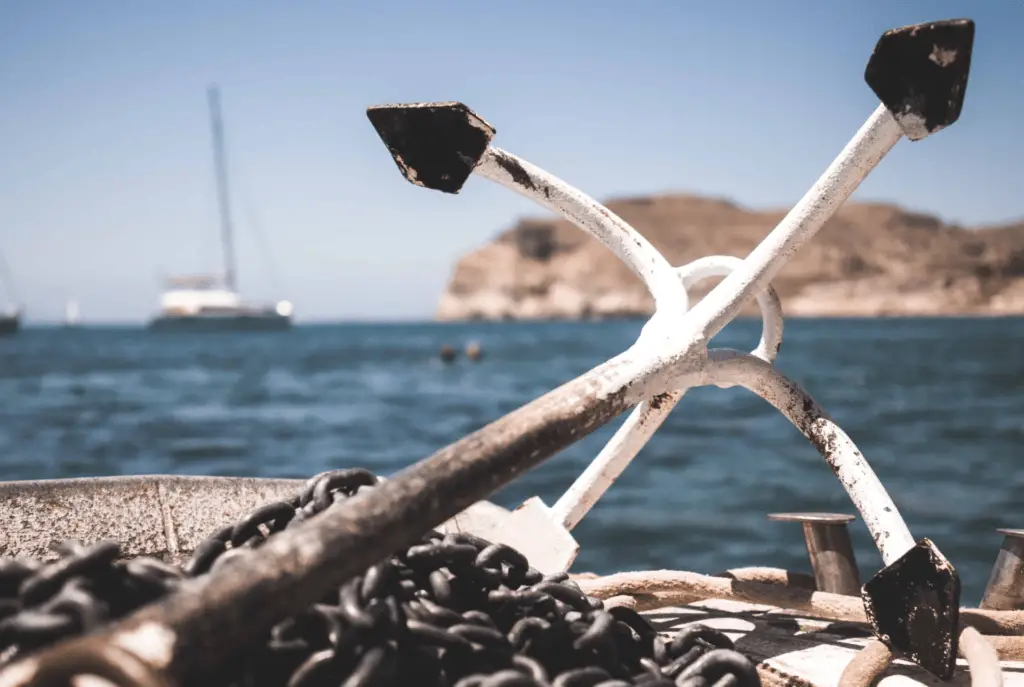
What is anchoring?
Anchoring is a fundamental aspect of boating that involves securing your sailboat in a specific location using an anchor and chain.
When you anchor your sailboat, you are essentially creating a stable and secure position for your boat, regardless of the wind or current.
Table of Contents
Can you anchor a sailboat anywhere?
No, you can’t anchor just anywhere.
- First and foremost, you need to be aware of any regulations or restrictions in the area you plan to anchor.
Some harbors, marinas, or waterways have specific rules regarding anchoring, and it’s important to respect these guidelines.
- In addition, you’ll need to consider the bottom conditions.
Anchoring in rocky or weedy areas can make it difficult for your anchor to dig in and secure your sailboat . Ideally, you’ll want to find a sandy or muddy seabed, as these provide better holding power for anchors .
- Furthermore, you should avoid anchoring in areas with heavy boat traffic.
Not only can this increase the chances of collisions, but it can also make it difficult for you to safely drop and retrieve your anchor.
Choosing the Right Anchor and Chain Size
The size and weight of your anchor will determine its ability to hold your boat securely in place, while the chain provides additional weight and strength to keep the anchor in position.
So, how do you choose the right anchor and chain size for your sailboat?
- First, consider the size and weight of your sailboat .
Larger boats require larger anchors and chains to provide adequate holding power.
As a general rule of thumb, it’s recommended to use an anchor that weighs 1 pound for every 2 feet of boat length.
So, if you have a 30-foot sailboat, a 15-pound anchor would be appropriate.
- Next, think about the type of bottom you’ll be anchoring in.
Different anchor designs work better in different types of seabeds, such as sand, mud, or rocks.
For sandy bottoms, a fluke or plow-style anchor is often recommended, while a grapnel or claw anchor is better suited for rocky bottoms.
Picking the Right Spot to Anchor
Choosing the right spot to anchor your sailboat is essential for a safe and enjoyable experience on the water. Whether you’re planning a short stop or an overnight stay, finding the perfect location can make all the difference.
So, how do you pick the right spot?
- First, consider the depth of the water.
You’ll want to find a spot with enough depth to accommodate the draft of your sailboat, plus some additional clearance to account for tides or changes in water levels.
Consult nautical charts or use a depth sounder to determine the water depth in the area you plan to anchor.
- Next, assess the bottom conditions.
Look for a sandy or muddy seabed, as these provide better holding power for anchors.
Avoid areas with rocky or weedy bottoms, as they can make it difficult for your anchor to dig in and secure your sailboat.
- Consider the surrounding environment as well.
Look for sheltered areas or natural features such as coves or bays that can protect from strong winds or currents . These areas will offer a more comfortable and secure anchorage for your sailboat.
- How Many Anchors Should You Have For Your Boat?
- The Power of Anchors: Why You Should Use Them to Keep Your Boat Safe
- Mooring Made Easy: A Step-by-Step Guide to Picking Up a Mooring for Your Boat
- How To Dock Your Boat Like A Pro: Stern-In, Bow-In, And Alongside
Preparing Your Sailboat for Anchoring
When preparing your sailboat for anchoring, there are several important things you need to do to ensure a smooth and successful docking experience.
Here are four essential tasks to complete before dropping your anchor :
1. Check your equipment: Before setting sail, make sure you have all the necessary anchoring equipment on board.
This includes an anchor, chain, and any additional gear such as a buoy or buoy line. Inspect your equipment to ensure it is in good condition and free of any damage or wear.
2. Secure loose items: Stow away any loose items on your sailboat that could become a hazard during the anchoring process.
This includes things like ropes , fenders, or loose equipment. Secure these items in designated storage areas or tie them down to prevent them from shifting or falling during anchoring.
3. Clear the deck: Remove any obstructions from your deck that could interfere with the anchoring process.
This includes items like cushions, coolers, or other personal belongings.
Clearing the deck will provide you with a clean and clutter-free area to work in when dropping anchor .
4. Prepare your crew: Brief your crew on their roles and responsibilities during the anchoring process.
Make sure everyone knows where to be and what to do when it’s time to anchor.
Assign specific tasks to each crew member, such as handling the anchor or controlling the helm, to ensure a coordinated and efficient docking experience.
The Step-by-Step Guide to Anchoring Your Sailboat
Follow these instructions, and you’ll be able to safely and effectively anchor your boat in no time.
1. Choose your anchor location
Before you start the process, select a suitable location to drop your anchor . Consider factors such as water depth, bottom conditions, and nearby hazards.
Once you’ve chosen the spot, approach it slowly and stop the boat when you’re in the desired location.
2. Prepare your anchor and chain
Make sure your anchor is ready for deployment. Remove any tangles or knots in the chain and ensure it’s securely attached to the anchor.
Double-check that the anchor is properly stored and accessible for deployment.
3. Determine the amount of anchor chain
Decide how much anchor chain you need to deploy based on the depth of the water.
A general rule of thumb is to use a ratio of 5:1 or 7:1 for the length of the anchor chain to the depth of the water. For example, if the water is 10 feet deep, deploy 50 to 70 feet of chain.
4. Drop the anchor
Carefully lower the anchor over the bow of your boat while paying out the chain.
Use a controlled speed and avoid letting the chain drop too quickly, as this could damage your boat or the anchor.
Make sure the anchor hits the bottom before releasing the chain.
5. Set the anchor
Once the anchor is on the bottom, put the boat in reverse at idle speed to ensure the anchor is firmly embedded.
Give it some time to settle and check that the boat is staying in position. Use a landmark on shore or your GPS to monitor any drifting.
6. Secure the anchor
Once you’re confident that the anchor is set, cleat off the chain or secure it to a bow cleat to prevent any accidental movement or slippage.
Double-check that the anchor is holding by slowly reversing the boat to put some pressure on the anchor.
- Congratulations! You’ve successfully anchored your sailboat. Remember to monitor your position and the anchor’s holding power throughout your stay. If you need to reposition or adjust the anchor, follow the same steps in reverse order.
How long can you be at anchor for on a sailboat?
In general, you can stay anchored for a few hours or overnight, but it’s important to check local regulations to ensure compliance.
Some areas have time limits for anchoring or require permits for longer stays.
Additionally, you’ll need to consider the weather forecast. If there are strong winds or rough seas expected, it may not be safe to remain anchored for an extended period.
What side of the vessel you should never anchor?
There is actually one side you should avoid at all costs: the bow , or the front of the boat.
Anchoring on the bow can lead to several problems and safety hazards.
Firstly, it can interfere with the boat’s steering and maneuverability, making it difficult to control the vessel in tight spaces or when approaching docks .
Secondly, anchoring on the bow can cause the boat to swing in unpredictable directions, especially when wind or currents change.
This can increase the risk of collision with other boats, docks, or hazards in the water.
To avoid these issues, always anchor your sailboat off the stern, or the back of the boat. This allows for better control and maneuverability, as well as a more stable anchoring experience.
Additionally, anchoring off the stern keeps the bow free for easy boarding and disembarking, making your sailing experience more convenient and enjoyable.
What happens when a sailboat drag anchor?
When a sailboat drags an anchor, it means that the anchor is no longer holding the boat in place.
This can occur for several reasons, such as changing wind or current conditions, a poorly set anchor, or inadequate anchor line length.
As the boat starts to drift, it can potentially collide with other boats, docks, or even run aground.
In this situation, it’s important to act quickly and calmly.
First, assess the immediate surroundings to determine any potential dangers or obstacles.
Then, try to reset the anchor by moving the boat in the opposite direction of the drift and dropping the anchor again.
If this doesn’t work, you may need to find a new anchorage or consider alternative methods, such as using a second anchor or seeking assistance from nearby boaters.

7 Best Sailboat Anchors

Last Updated by
Daniel Wade
June 15, 2022
As long as it's the right one, your sailboat anchor is the best insurance you'll ever buy.
The right sailboat anchor will depend on the type and size of your sailboat, your planned area of sailing, and the weather conditions that you expect to encounter. So there are no shortcuts but to choose the best sailboat anchors based on these factors.
Anchoring, at its core, is all about securely fastening your sailboat using the best sailboat anchor so that it doesn't float away when the winds or tides start shifting.
And whether you're planning for a day's fishing trip to your nearest lake or going for an offshore voyage, an anchor is unquestionably essential in ensuring the safety of both you and your sailboat.
A good anchor not only gives you the much-needed peace of mind but gives you the ability to securely anchor your sailboat on a nice bay, grab a quick lunch, or explore the nearby reefs.
More importantly, you'll appreciate the importance of choosing the best sailboat anchor for your boat when you have to ride out a storm.
There are lots of excellent sailboat anchors that are a great fit for your boat. The most important is to understand what makes a high-quality anchor so that you can make an informed choice when buying the best sailboat anchor for you and your vessel. This will depend on things like the size and type of your sailboat, where you want to sail to, and the projected weather and the type of bottom of where you'll be sailing at.
Needless to say, there are a lot of sailboat anchors out there that it can be very confusing. In this article, we'll discuss how to choose the best sailboat anchor for your boat. More importantly, we've done thorough research and review the best sailboat anchors just to make the process of choosing the best sailboat anchor for you as easy as possible.
Table of contents
How to Choose the Best Sailboat Anchor
Choosing the best sailboat anchor on various things such as the type and size of your boat, the type of bottom where you're planning to anchor your boat on, the weather conditions, and many more. For example, anchoring a 24-feet sailing boat on a muddy bottom will not be the same when using the same anchor when anchoring a 49-feet sailboat on a rocky bottom. More importantly, choosing the best sailboat is all about finding the right balance in terms of the size of your boat, the type of the bottom where you're sailing at, the climate conditions, and the amount of time that you're planning to be anchored.
Here is what you need to consider.
The Size of Your Boat
The size of your boat will determine the type of anchor that's appropriate based on its weight and resistance. For example, a claw anchor can be great for boats measuring between 16 feet and 50 feet. In essence, having a bigger boat will require an anchor that is bigger and has more holding power. On the other hand, a smaller anchor with less holding power will be ideal for a smaller boat.
Your Anchoring Time
The holding power of your anchor can be affected by the amount of time you are planning to anchor your boat. If you're planning to anchor your boat for longer periods, it would make a lot of sense to have an anchor with high holding power. Differently, you can go with an anchor with less holding power if you're planning to anchor your boat for a few hours.
The Bottom Type
The shape and sharpness of an anchor will determine how good an anchor can hold your boat in different types of bottoms. For example, claw anchors can struggle in rocks and corals but work perfectly in sand and mud. On the contrary, grapnel types of anchors can work great in rocks but don't work in sand or mud. It all depends on the bottom type of the area you're planning to sail at.
Anchor Material
The type of material used in manufacturing the anchor is of great importance in terms of its functionality, reliability, and durability. Most anchors are galvanized to prevent them from rust and also for a better price. However, stainless steel anchors offer better anchors in terms of quality and aesthetics.
Without further ado, let's jump straight in.
1. Lewmar Galvanized Delta Sailing Anchor
(Best for Larger Boats)
Although several modern types of sailboat anchors have taken the anchor industry by storm, some traditional anchor designs still hold their ground today and the Lewmar Galvanized Delta Sailing Anchor is one of them. It's designed with a single, sharply pointed wedge fluke that has a similar shape to a plow and really gets into the ground. It digs down and holds so secure for larger boats measuring over 21 feet.
This is a superb sailboat anchor that performs exceptionally well on most bottom types save for rocks. You'll love the fact that it holds extremely well in softer bottoms such as sand and mud. This anchor is made from high-grade manganese steel and is galvanized with a protective layer of zinc to prevent it from rusting. It's also more light than most anchors so stowing and transportation shouldn't be a problem.
Having been a hallmark anchor for many years, this anchor guarantees reliability and will hold excellently even in stormy conditions. Launching it is also easy thanks to its ballasted tip and streamlined shank and will set the first time thanks to its self-righting design.
- Perfect for larger boats
- Very durable
- Approved by several National Lifeboat Associations
- Comes with a perpetual guarantee against breakage
- Easy to launch
- Very secure
- Quite expensive
- Requires tripping line to release it from the seabed
- Not great for rocky bottom
2. Rocna Vulcan Galvanized Anchor
(Best for Changing Weather Conditions)
As the best-selling sailboat anchor currently available in the market, it's easy to see why the Rocna Vulcan Galvanized Anchor is the most highly rated anchor by multiple independent reviewers. Built for strength and versatility, this anchor works great with a wide range of boats, which is a very unique feature. Coming in sizes ranging from 9 to 606 pounds, this anchor is so versatile and gives you the option of choosing the right size for your sailboat.
This remains the most dependable anchor in the market, especially in the roughest of conditions. It holds all types of the seabed so fast and has a roll bar that's crucial in ensuring that your boat's weight is not only distributed appropriately but the boat sets at the right angle. Its Vulcan design and sharp tip allow it to snug fit on the bow and to get right into the seabed respectively.
This is an anchor that draws the best features from traditional sailboat anchors such as spade and bagel anchors to become one of the best modern sailboat anchors out there.
- Perfect for stormy conditions
- Great for all types of seabed
- Very versatile and available in a wide range of sizes
- Perfect for all types of boats
- It has an easy storage design
- It's designed by a well-known brand
- Very expensive
- Its shank is only perfect for bigger flukes
3. Manson Galvanized Supreme Sailing Anchor
(The Fastest Setting and Highest Holding Anchor)
If you're looking to purchase the best sailboat anchor from a well-established brand, look no further than the Manson Galvanized Supreme Sailing Anchor. This anchor has been in the market for the better part of the last two decades and still holds its ground as one of the best sailboat anchors out there. The fact that it is perfect for all types of seabed makes it a great option for sailors who are on a budget.
This sailboat anchor has an indisputable reputation all over the world as the fastest setting and highest holding anchor. This is because it's uniquely designed for extreme holding conditions thanks to its standard bow rollers and a dual operation shank that's designed with the utmost versatility in mind. Whether you're looking to anchor in mud, sand, or rocky areas, this anchor will never disappoint you.
- It has an extremely high holding power
- It's the fastest setting anchor in the market
- It's perfect for all types of seabed including rocky areas
- Its safety is guaranteed as it has passed multiple tests
- It's very durable
- Designed for extreme weather conditions
- It's heavy, which can bring difficulties in stowing and transportation
- Very expensive
4. Danforth S-600 Standard Sailing Anchor
(Best for Smaller Boats)
At this point, you shouldn't have any doubt that some of the more traditional types of anchors still have a place in the anchor industry today. The Danforth S-600 Standard Sailing Anchor is a traditional fluke anchor that's extremely perfect for smaller boats but can also be used as a secondary anchor for larger boats. Having been developed in the US back in the 1940s, this type of anchor is similar to the modern CQR anchor and doesn't compromise on quality and reliability even in rough weather conditions.
It's lighter than most anchors, so stowing or transporting it shouldn't be a problem. In terms of its holding power, it has an excellent power-to-weight ratio and can hold quite fast in sand and mud. The fact that it is a fluke type of anchor makes it not perfect for coral, rock, or gravel bottoms.
- Perfect for smaller boats
- It's good for sandy and muddy substrates
- Lightweight and compact
- Has a holding power of about 600 pounds
- Constructed with high-strength galvanized steel
- Quite affordable
- Not ideal for rock, coral, or gravel substrates
- Can only be used as a secondary anchor on larger boats (over 27 feet)
- It has moving parts
5. Lewmar Claw Anchor
(Best for All Types of Seabed)
If you're looking for the best sailboat anchor that will serve you perfectly in all types of substrates, the Lewmar Claw Anchor can be an ideal choice. Previously known as the Bruce or Claw type anchor, this anchor has a three-pronged design that enables it to easily set in any bottom. It doesn't matter whether you want to anchor in an area with mud, sand, rock, coral, gravel, or grassy bottom, this anchor will hold its ground.
It can be a great option if you're on a tight budget and want to buy an anchor that doesn't have a complete design while going about its duty quietly. It's so versatile thanks to the fact that it's available in sizes ranging from 4.4 pounds to 44 pounds. What's more; it's made from high-grade steel and it's very durable. If anything, it draws inspiration from the anchors used in securing oil rigs in the North Sea.
- Excellent for all types of substrates
- It's very versatile
- It's durable
- It's very affordable
- Its odd shape makes it difficult to stow
6. Mantus Galvanized Sailing Anchor
(Perfect for Dense Grassy Bottoms)
The level of functionality that the Mantus Galvanized Sailing Anchor brings to the table is unmatched. This is an anchor that offers unparalleled holding power as it can dig a lot deeper than most anchors out there.
It's strongly built but can come apart to make it a lot easy to store and transport. Its sharp-headed nose gives it maximum penetration power, though it may not hold quite well in low viscosity sea beds. This anchor is highly dependable yet very expensive so it might not be an ideal option if you're on a budget. So if functionality is your top priority when going to an area with dense grassy bottoms, it can be your ideal option.
- Very functional and dependable
- Perfect for dense grassy bottoms
- Easy to store and transport
- Made from high-quality steel
- Comes with a lifetime warranty against breakage
- It has moving parts
- It's very expensive
7. Norestar Stainless Steel Delta/Wing Boat Sailing Anchor
(Highest Quality Anchor)
One of the most important things when in the market for a good sailboat anchor is quality. Well, the Norestar doesn't disappoint on this front as it's manufactured using the highest quality stainless steel. This stainless steel is strengthened with micron thick PVD coating that gives it a highly urbane appearance.
Its design is also one of the most popular anchoring systems in the maritime industry today. This is because it offers impeccable security and gives you the peace of mind knowing that your boat is safe at all times.
- It is self-launching
- Made from the highest quality stainless steel
- It sets easily
- Perfect for most bottoms
- It's lightweight and has no moving parts
- Not ideal for bottoms with hard sand
- Quite expensive
There you have it; these are the best sailboat anchors in the market. An anchor is one of the most crucial parts of safe sailing. Whether you're looking to moor at the harbor or to explore far-reaching areas in the water, a good anchor is your number safety and insurance while on the water.
Related Articles
I've personally had thousands of questions about sailing and sailboats over the years. As I learn and experience sailing, and the community, I share the answers that work and make sense to me, here on Life of Sailing.
by this author
Sailboat Upgrades

Most Recent

What Does "Sailing By The Lee" Mean?
October 3, 2023

The Best Sailing Schools And Programs: Reviews & Ratings
September 26, 2023
Important Legal Info
Lifeofsailing.com is a participant in the Amazon Services LLC Associates Program, an affiliate advertising program designed to provide a means for sites to earn advertising fees by advertising and linking to Amazon. This site also participates in other affiliate programs and is compensated for referring traffic and business to these companies.
Similar Posts

How To Choose The Right Sailing Instructor
August 16, 2023

Cost To Sail Around The World
May 16, 2023

Small Sailboat Sizes: A Complete Guide
October 30, 2022
Popular Posts

Best Liveaboard Catamaran Sailboats
December 28, 2023

Can a Novice Sail Around the World?
Elizabeth O'Malley

4 Best Electric Outboard Motors

How Long Did It Take The Vikings To Sail To England?

10 Best Sailboat Brands (And Why)
December 20, 2023

7 Best Places To Liveaboard A Sailboat
Get the best sailing content.
Top Rated Posts
Lifeofsailing.com is a participant in the Amazon Services LLC Associates Program, an affiliate advertising program designed to provide a means for sites to earn advertising fees by advertising and linking to Amazon. This site also participates in other affiliate programs and is compensated for referring traffic and business to these companies. (866) 342-SAIL
© 2024 Life of Sailing Email: [email protected] Address: 11816 Inwood Rd #3024 Dallas, TX 75244 Disclaimer Privacy Policy

Questions? Give Us A Call
Anchor Sizing Charts
Spade anchor dimensions, anchor sizing chart.
Note: It is recommended to move up to the next size anchor for Catamarans.
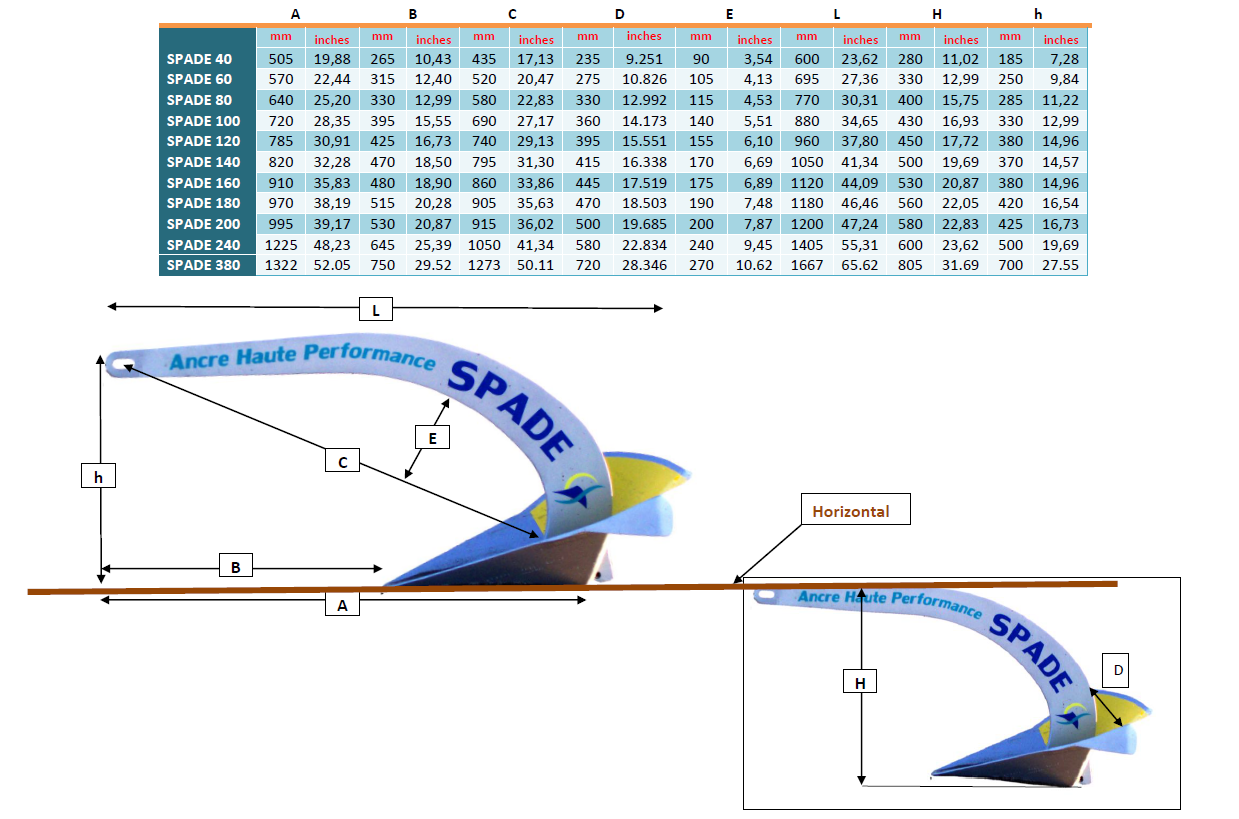
Welcome to Worry-free Anchoring
When looking for an anchor you want to make sure it digs in the first time, buries deep, has high holding power and holds when winds or currents shift.
For sailboats we have taken every bit of windage, shape and weight distribution into consideration. This all affects how the anchor launches, sets and re-sets.
We have a good range of sailboat anchors to suit all boating adventures, keeping your family safe and ensuring your anchoring experience is stress free.
The right sailboat anchor will depend on the type and size of your sailboat, where you plan to go sailing, and the weather conditions that you expect to encounter. If you are not sure which anchor is right for you, use our simple anchor calculator – link below.
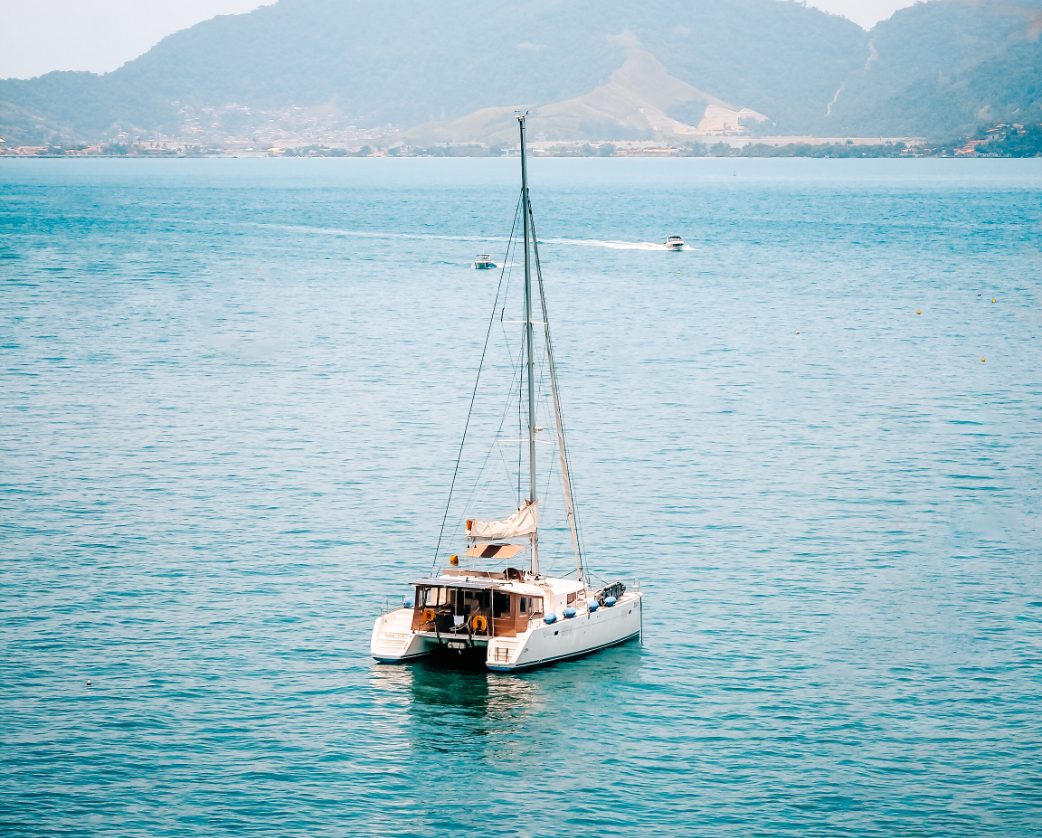
Sailboat Anchor Range
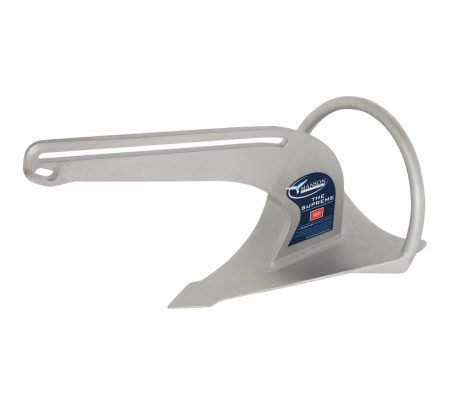
Supreme Anchor (SHHP)

12 Sizes: 5 - 150lbs
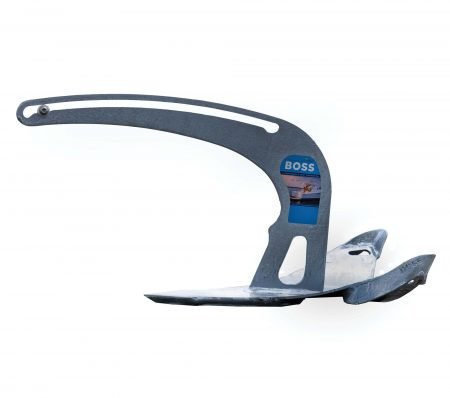
Boss Anchor
11 Sizes: 5 - 150lbs
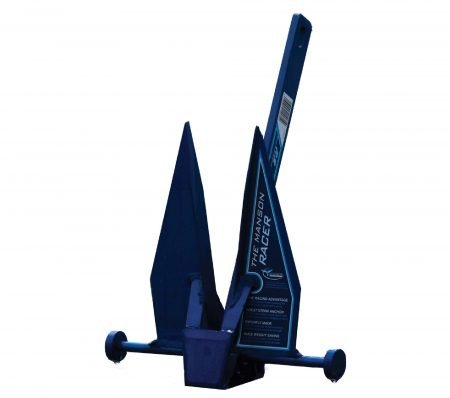
Racer Anchor
10 Sizes: 2.2 - 35lbs
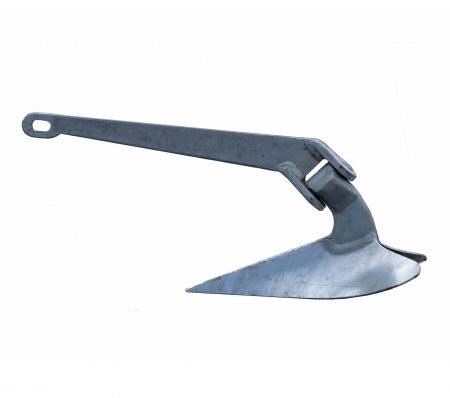
Plough Anchor (HHP)
17 Sizes: 10 - 300lbs

Ray Anchor (HHP)
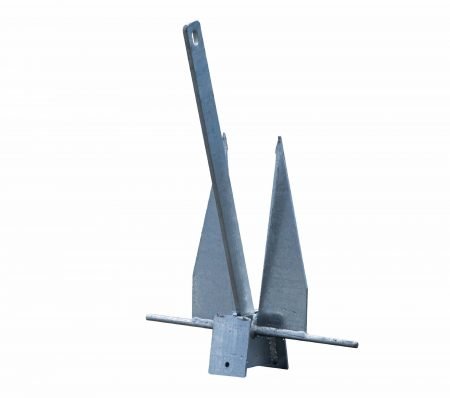
Sand Anchor
What size anchor do i need, the manson anchor difference, why buy a manson anchor.

Global Leader
We are the experts in anchoring. We’ve been doing this since 1972, that’s almost 50 years’ experience making anchors. We are the desired anchor brand, chosen by serious boaters all over the world; from the rugged coastlines of Western Australia, to Florida and the Mediterranean. You are in safe hands.

Largest Range in the World
We understand the unique challenges of anchoring and we know all boats are not equal, so we design and build anchors to suit every situation – from small craft through to superyachts. Don’t settle for a standard anchor. Get the anchor that will be perfect for your boating needs and keep you and your family safe.

Made in New Zealand
Our anchors are proudly crafted in New Zealand by Lloyd’s Register approved welders using certified Lloyd’s Register approved materials in a specialist facility. They are not made cheaply in developing countries who have little respect for quality, the environment or what it means to anchor safely. This means you are buying a quality anchor that you can rely on.

We are trusted to make anchors for some of the best shipyards in the world who build exquisite superyachts and sophisticated defense vessels. This means that you’re buying the same brand selected by superyacht owners and their captains. Simply put, you are choosing an anchor from the world’s leading anchor brand. Anchor with the world’s best.
What our customers say about us
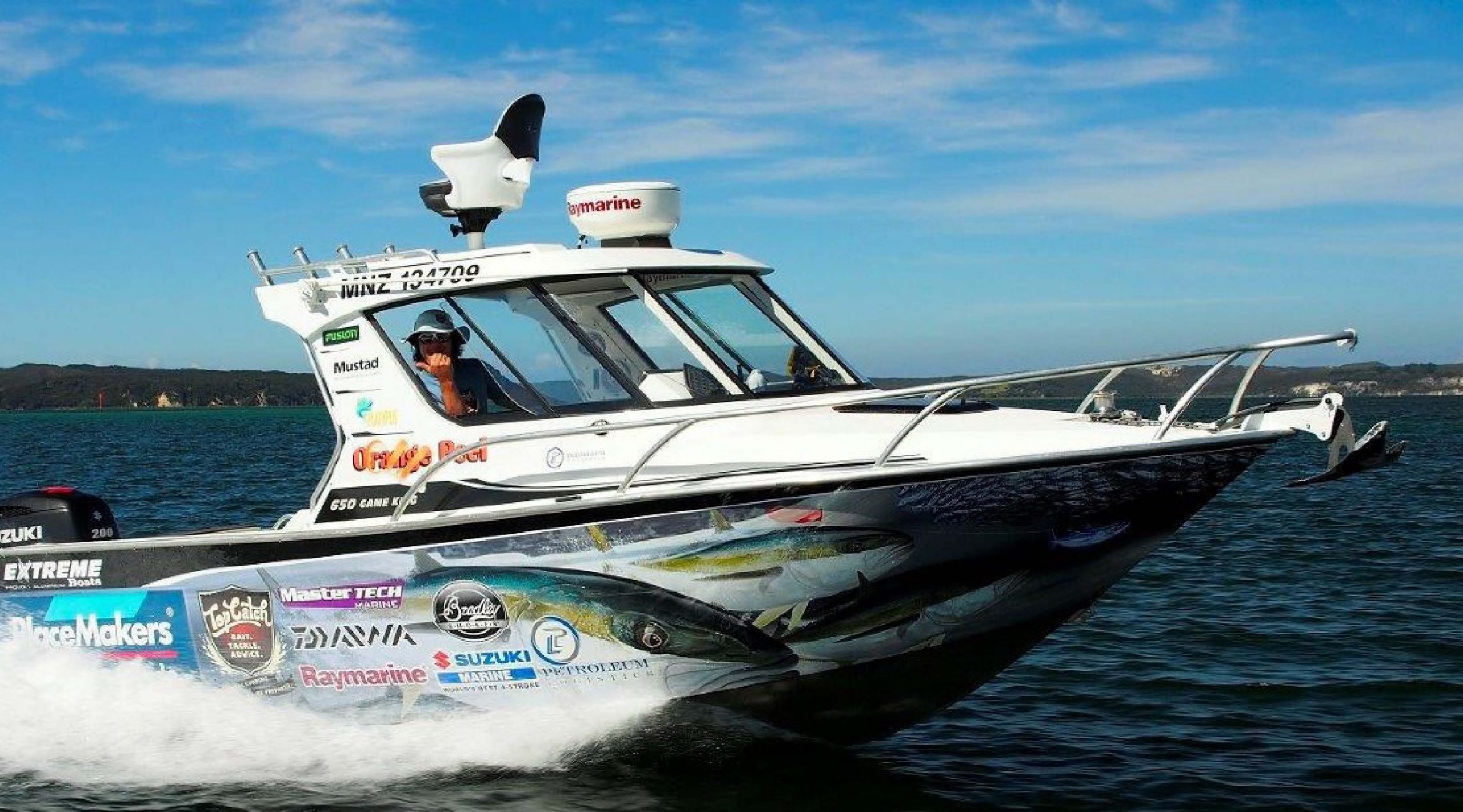
Big Angry Fish
New zealand.
The holding power of the Manson Boss will help you stay on that perfect fishing spot regardless of the conditions.
The Manson Anchor will dig in first time so you can get lines over the side straight away.
The sliding shaft is a great feature that makes it so much easier to retrieve the anchor from foul ground.
It is so important for every fisherman to have a good anchor onboard, we recommended the Manson Boss to everyone!
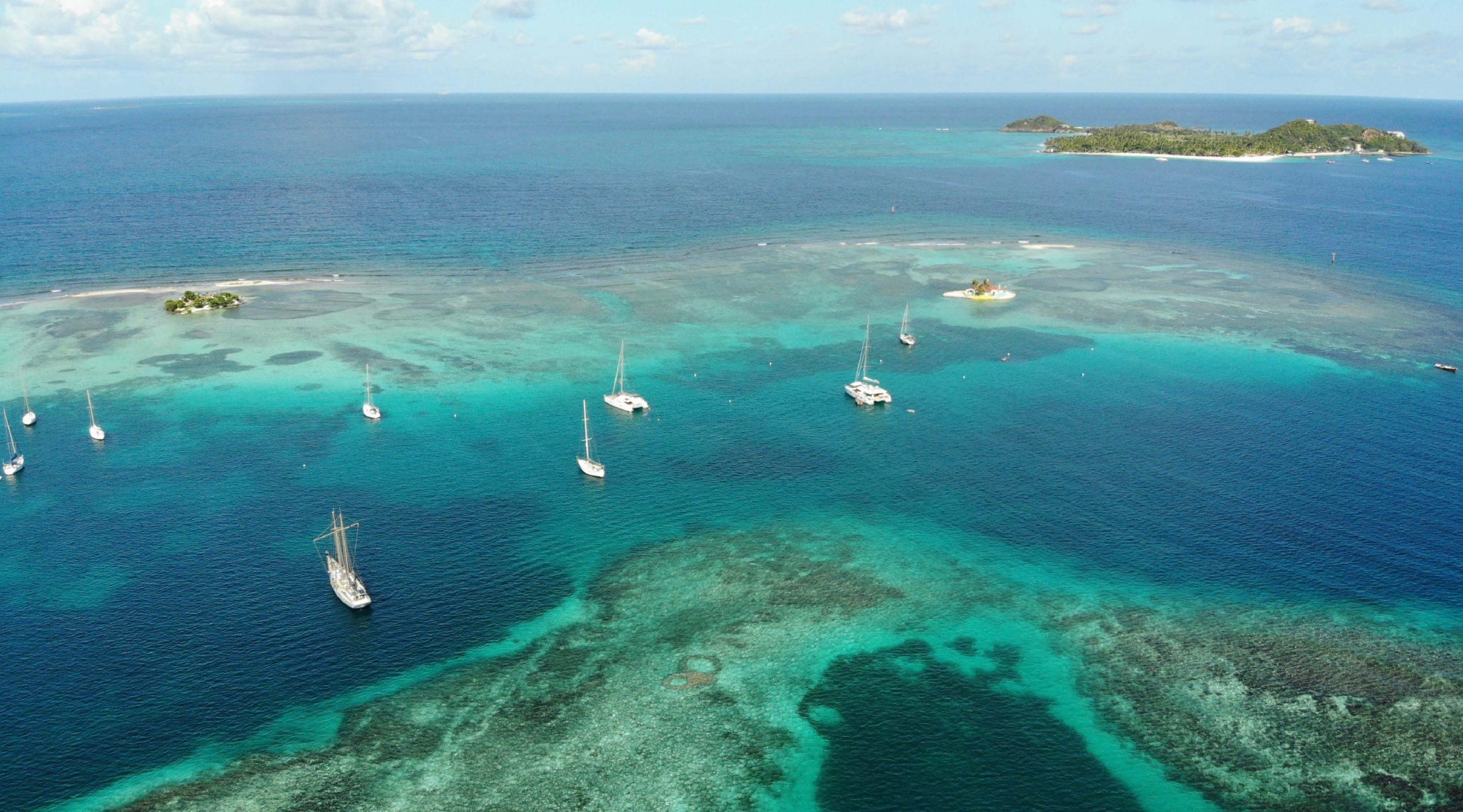
Brian Holloway
We were just starting on our adventure, which turned into the most exciting six month trip I have ever undertaken. We travelled over 4000 nautical miles, completely circumnavigating New Zealand in the wake of Captain Cook. What was interesting in that in the whole of the six months we only spent 15 nights at sea. My aim was to see New Zealand, and we rock hopped visiting everywhere possible, and consequently anchoring most nights. I have a 35lb Manson Supreme holding a 35 foot catamaran, weighing 5 tons. We make a reasonable amount of windage. I felt that a 35lb looked a bit small, but in six months, on very varied types of bottoms there was not one night when we dragged. A marvellous anchor, that I would recommend to anyone.
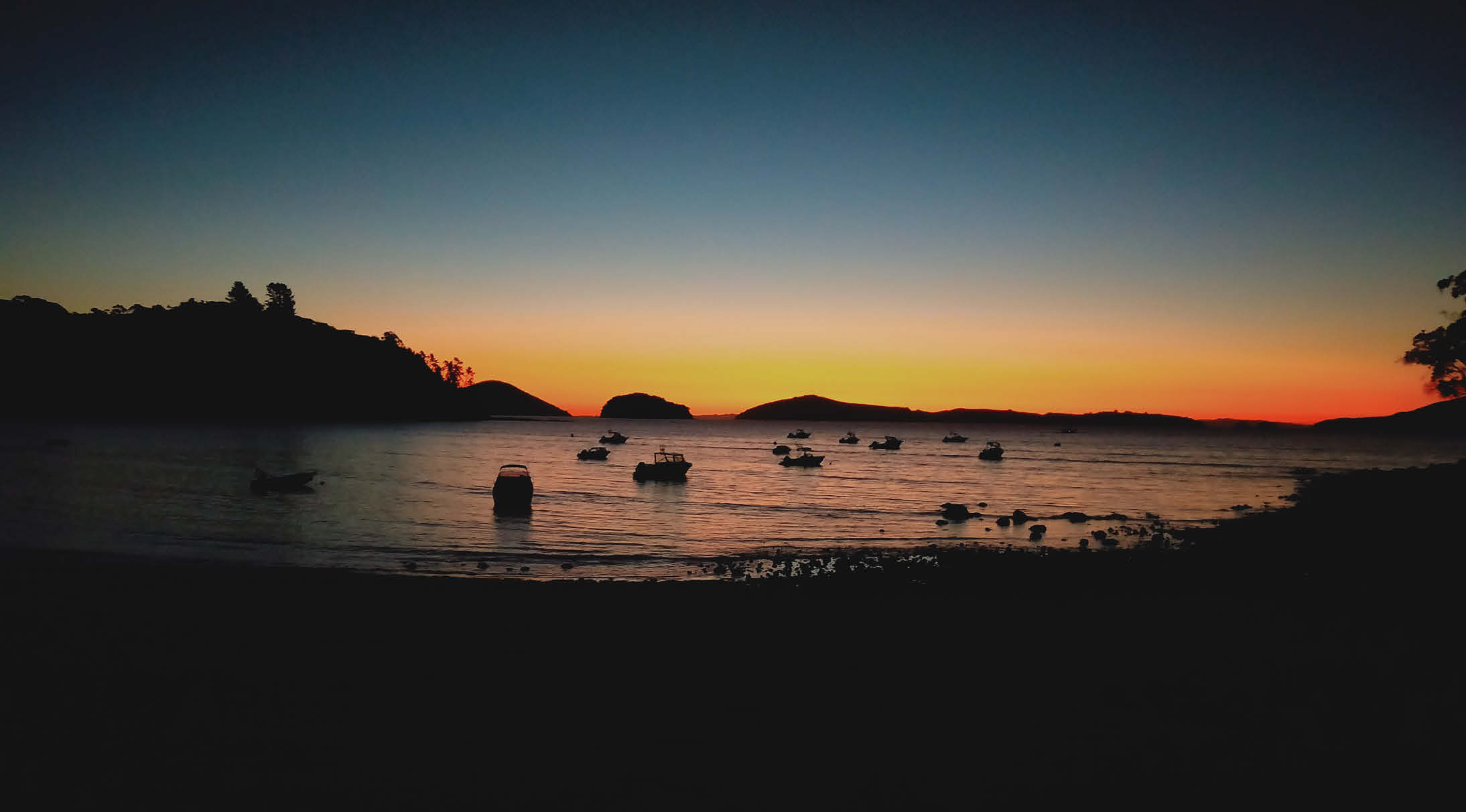
Aaron Dixon
I have toured the Manson factory on many occasions and have witnesses first-hand the quality of workmanship in full swing. The attention to detail they take in the selection of the metals, fabrication processes, welding and casting is amazing. Any vessel I own will always be fitted with a Manson Anchor.
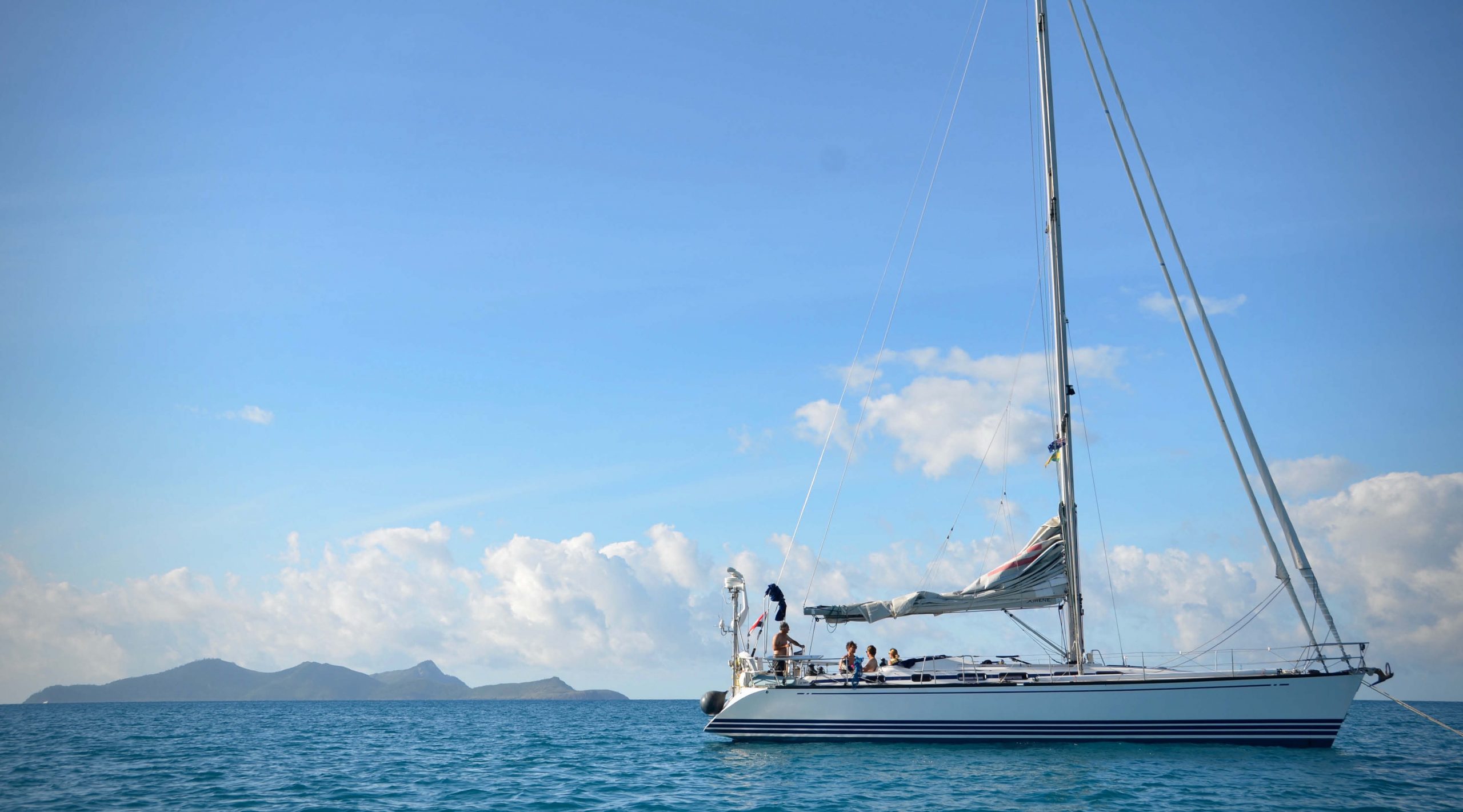
Graham McKenzie
Wellington, new zealand.
In the 6 & 1/2 years we have travelled more than 45,000 miles, visited 26 countries, and have anchored at least 1000 times. We have yet to use any other anchor than our Manson Plough. It has been totally reliable in thin coral sands, in mud and in the treacherous grasses of the Mediterranean. Most of our cruising friends changed their anchoring tackle after disastrous anchoring experiences in the Med. Many were using locally made anchors. We never needed to consider a new option. The Manson also coped well in areas with strong tidal flow, such as the amazon with it’s 7 knot current. We have had the chain re-galvanized twice in the course of our travels, but the anchor is only just requiring attention. Thanks to you folks at Manson for an anchor that has truly passed the test of time… and distance.

David Forester
Mississippi, usa.
I would like to tell you that 25LB Manson Supreme held my 23’ Pro Line Walk around like it was nothing. Where I anchored is a lot of sand, the anchor caught right away and the wind and waves that buffeted the boat around did not budge it. The fluke anchor I have would always slip, and I would have to reset the anchorage. I can safely say this is the best anchor I have ever had. I am so impressed I am looking into a smaller one for my stern (second) anchor.
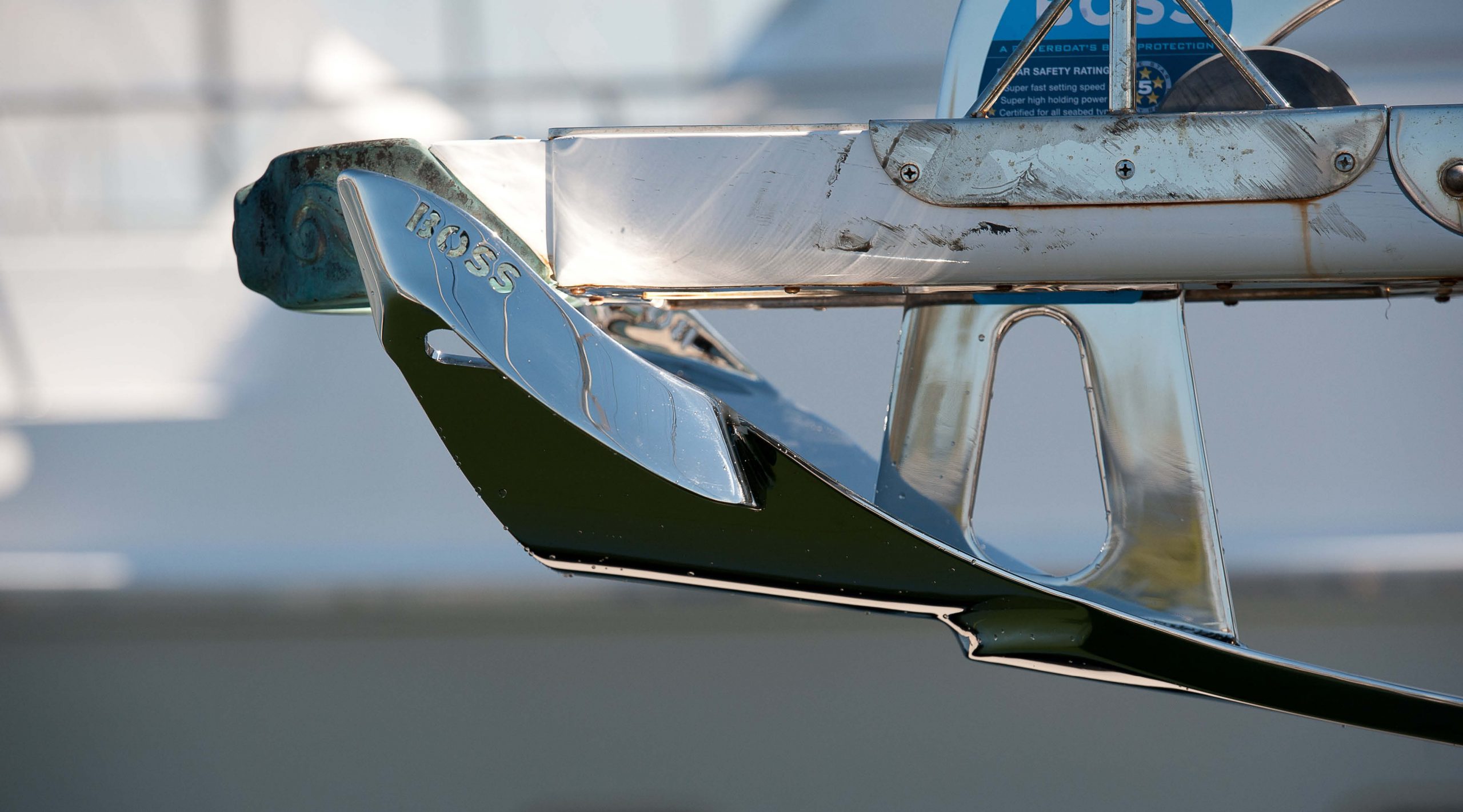
West Marine
The Boss takes the performance of the Supreme and makes it conform to any bow-roller. The Boss works well on power and fishing boats that don’t work with the bow.
The winglets work as a bow-roller to ensure a reliable and quick setting anchor much like the Supreme.
This is an incredibly fast setting, high holding power anchor.
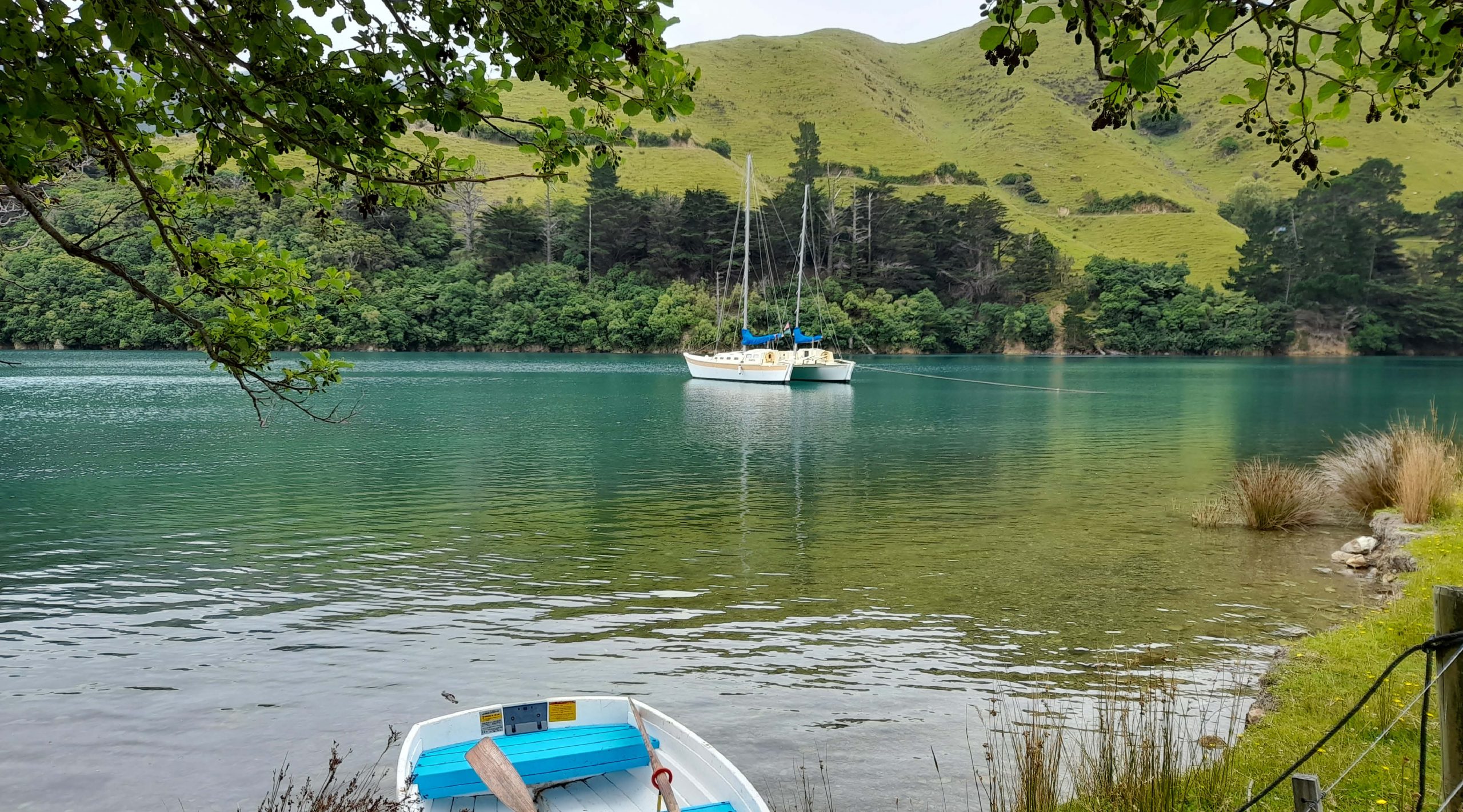
Colin Goldsworthy
We were caught out at Wangaparpara in what I would call a cyclone. It caught us off guard. We had a lee shore, a short scope, in poor holding with only 2 meters under the keel. We had no time to put down a second anchor.
During the next two days we experienced extreme gusts coming off the hills with swell entering the Harbour. That evening there was 95 knots gusts recorded at Channel Island. Our boat is 48 foot, and has plenty of windage. She sails on her anchor. We would sail up, go broadside and then get laid over with the gusts and swell beam on. Your anchor did not budge. The first night I sat and anchor watched, but the second night I was more confident and I slept.
That night many boats dragged their moorings and ended up on the beach. Your Supreme Anchor is great insurance.
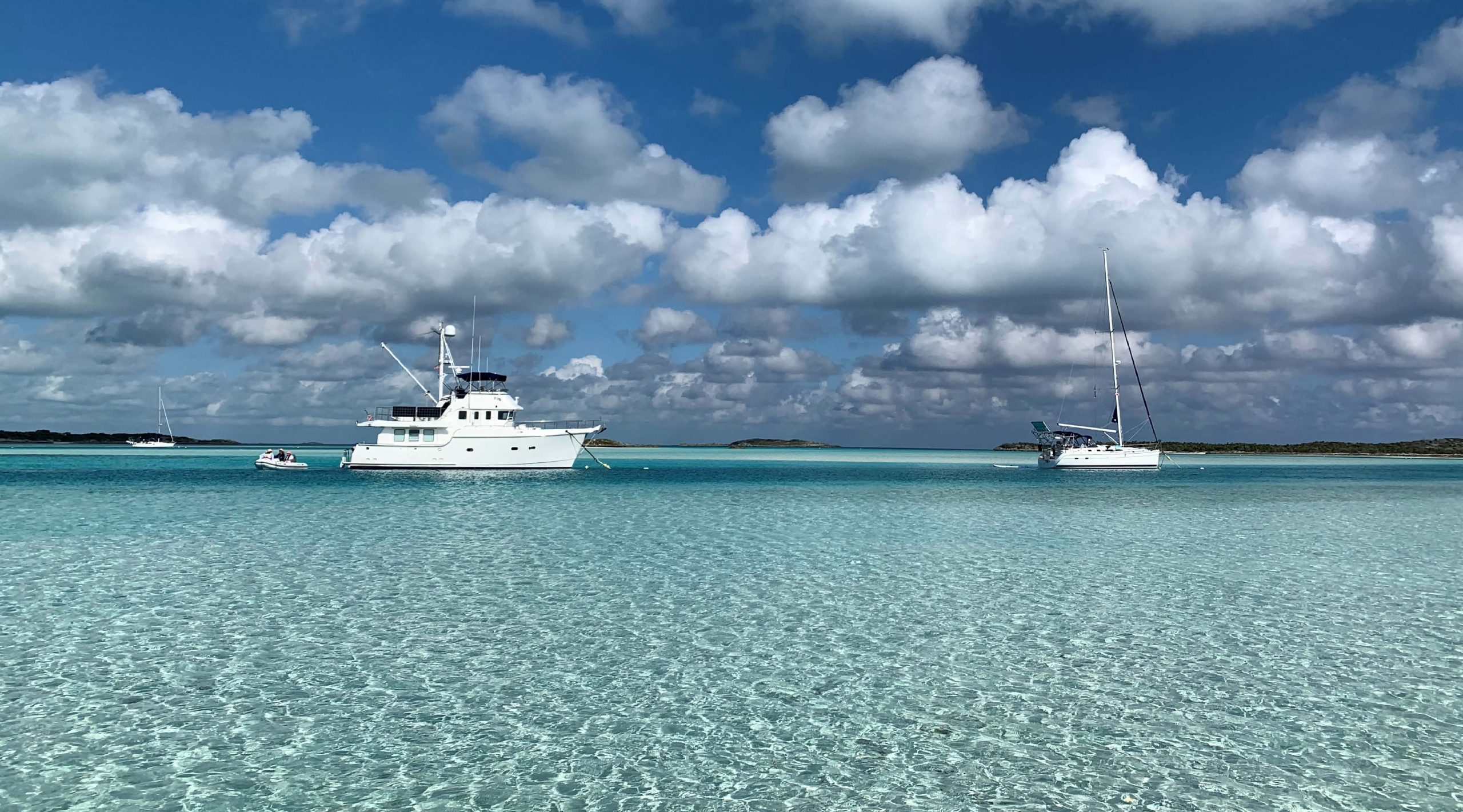
Brian Bearden
New providence, bahamas.
The Manson Supreme is reliable. Sets quickly, resets quickly, usually no more than the anchors length. Happy in mud, sand, grass. Best anchor we have ever had. Rode out hurricane Joaquin (25 miles west of the eye) anchor didn’t budge in sustained winds of 85 knots. We used this anchor as our main and storm anchor.
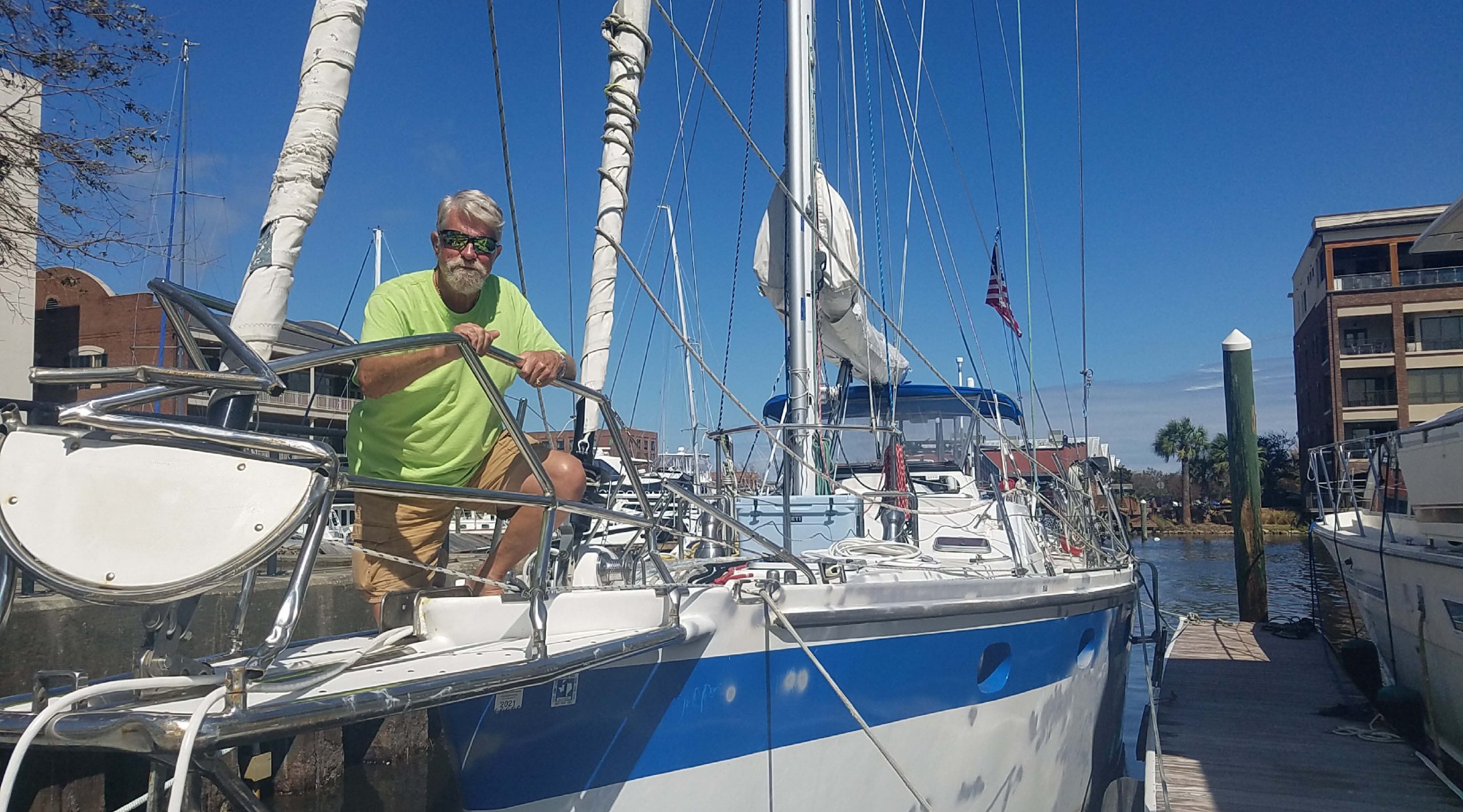
FLORIDA, USA
Thanks to my Manson Supreme I survived Hurricane Sally in Florida. As winds reached 110mph there was an incredible amount of force at work, but my 80lb Manson Supreme held my Roberts DS440 steel sailboat, while I watched boats around me sink. I was very impressed and grateful. When the winds subsided, we found we had bent shackles and bent rollers, but the anchor was in perfect condition.
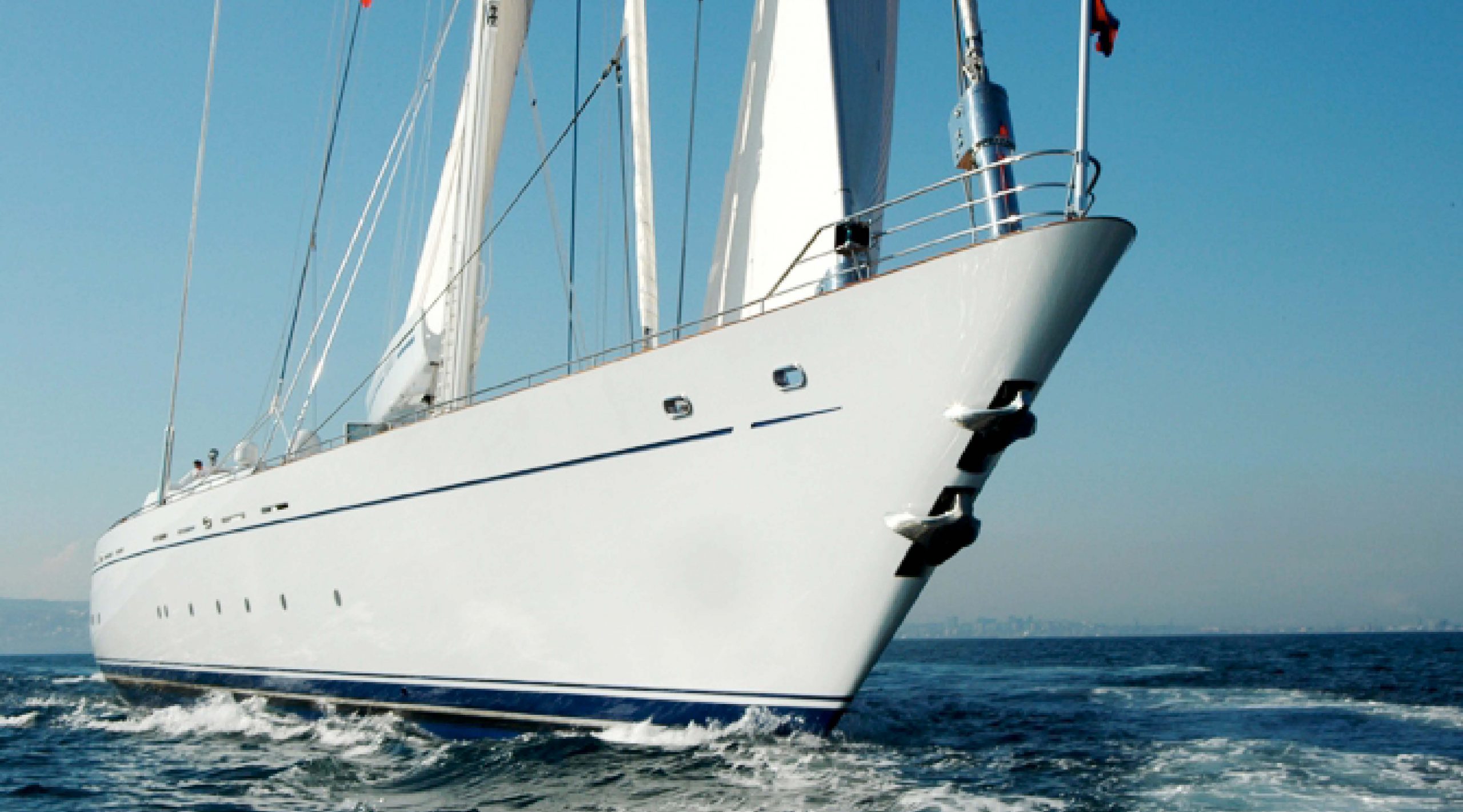
NZ Trade and Enterprise
Auckland, new zealand.
Manson Anchors took a basic component of every boat, and considerably redesigned it to be not only aesthetically pleasing but a real feature on one of the best yachts in the world. This is a real skill and shows again New Zealanders’ ability to create a design that not only solves a problem but does so very eloquently indeed
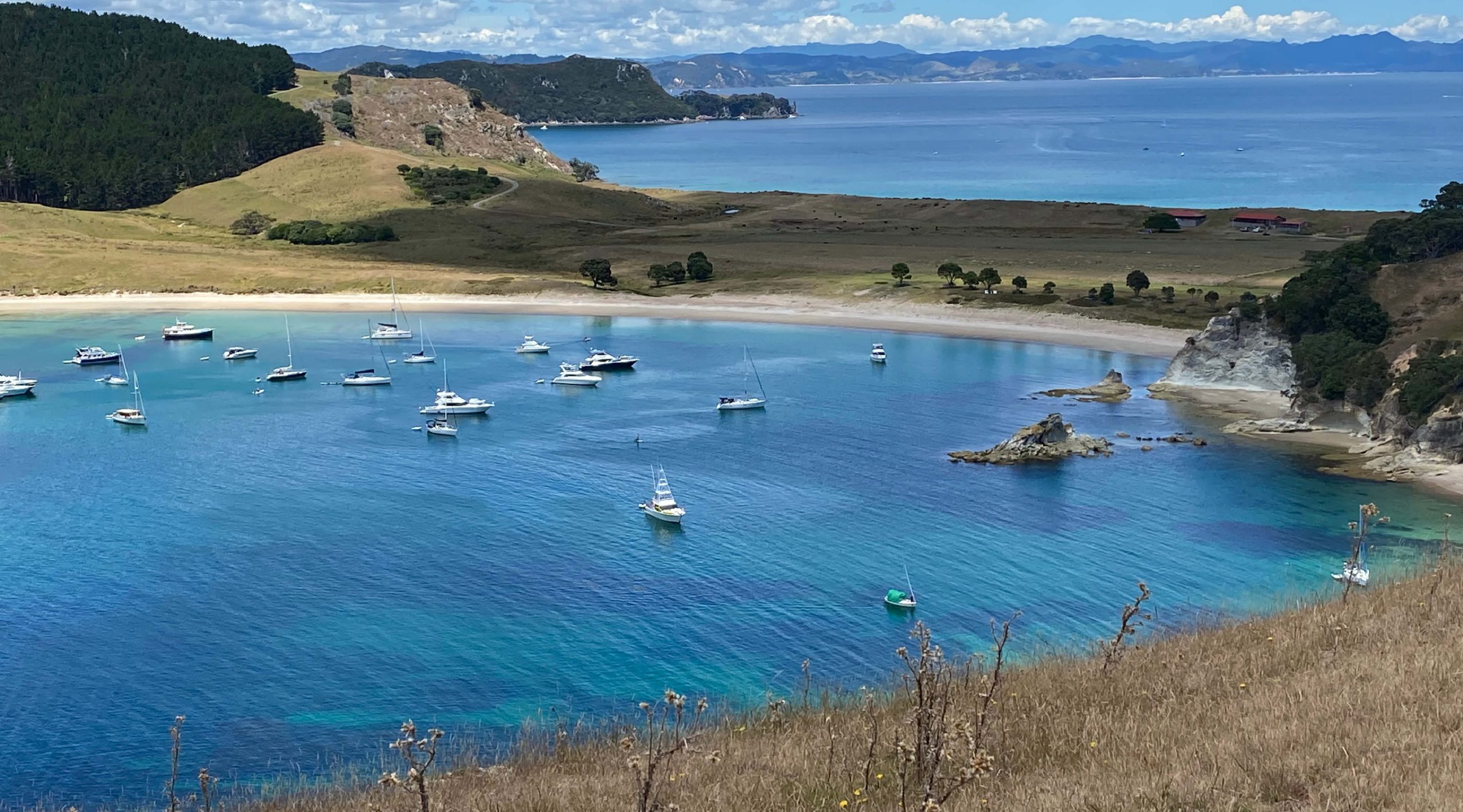
Tom McCallum
My 15lb Manson Supreme provided a heroic task in holding my 6 ton yacht all night in hurricane conditions in a bay with bad press on its seabed. Needless to say my faith in these anchors is profound and their design and tenacity legendary. I would use no other.

- Boat Anchoring Tips - How to Match A . . .
Boat Anchoring Tips - How to Match Anchor Size to Your Cruising Sailboat!

Fortress Selection Guide
- Exclusive Features
- Fluke Position
- Replacement Parts
- Stowaway Bag
- Selection Guide
Boat anchor size recommendations are for boats of average windage and proportions in 30 knots of wind, average bottom conditions, and moderate protection from open seas. Remember that the loads in 42 knots of wind are twice as much as in 30 knots.
Use three-strand nylon rope, 6-12 ft (2-4 m) of chain and a minimum of 5:1 scope. Also, a minimum of 6 ft (2 m) of chain should be used for every 25 ft (8 m) of water depth. For storm conditions use an anchor one or two sizes larger.
Mobile users please scroll to the right to find your boat length and anchor model selection.
Note: Hard sand holding power figures above represent loads actually achieved on production Fortress and Guardian anchors under controlled horizontal pull conditions without dragging or resulting in disabling structural deformation.
Have questions? Check out our frequently asked questions page.
- Fortress Anchors
- Guardian Anchors
- Anchoring Systems
- Stowaway Bags
- News & Events
- Coastguard Reviews
- Fortress Advantage
- Disassembly
- Marine Certifications
- Myths & Facts
- Anchor Registration
- Warranty Claim
- Safe Anchoring Guide
- Become A Distributor
- Fortress Anchor
- Fortress Parts
- Guardian Anchor
- Guardian Parts
Follow us on the web

Stay up to date
Sign up for our newsletter


COMMENTS
Much to our surprise, the weight recommendations for the new designs, Rocna, Excel, Supreme, etc. are very similar to the weight recommendation for the older, traditional models, CQR, Delta, Bruce etc. In both cases, the recommendation for a 35-foot yacht is approximately a 30-pound anchor. The exceptions are aluminum anchors from Fortress and ...
N/A. Source: Anchor sizing chart on Spade Anchor USA. You'll see a boat length of 53' puts us at 59ft. and a 55 pound galvanized anchor. But by vessel weight, for 54,000 lbs., the recommended weight is 99 pounds. So the larger of the two is 99 lbs., so that is the proper weight for this boat.
Fluke anchors have a rotating bar that connects the anchor to the line. Their forward-heavy profile allows the flukes to drive straight down into sand or mud. As line is laid out, the bar swivels into a horizontal position, providing good scope. Boat Size: 30 feet or less. Best For: Lakes, rivers, mud and sand.
More info here on anchor storage. - 14 lb anchor - for boats 20-27 ft in winds up to 30 mph. Typically boats in this size range have larger compartments, however the anchor lockers can still be narrow. You can also choose the folding rollbar model. - 18 lb anchor - for boats 28-34 ft in winds up to 30 mph. Boats in this size usually have large ...
1. Boat Length. Boat length is one of the primary factors that should be considered when choosing an anchor size. Anchors are usually designed to handle boats of a specific length range, which helps to ensure optimal holding power. To find the best-suited anchor size for your boat, measure its overall length and use this information as a ...
Your choice of anchor depends on the size and type of your boat, and the weather and anchoring conditions you generally encounter. ... Your Boat - Your boats' size, weight and design characteristics affect what kind of anchor you will need to use. For instance, a 30 foot 10,000 pound houseboat needs a larger anchor than a 30 foot 6000 pound ...
Consult manufacturer guidelines on their recommendations for anchor sizing based on boat length. Chain and Rode Size. The anchor rode, which connects your boat to the anchor, is critical for holding power. The scope, typically measured in a ratio of the rode's length to the water's depth, is an important factor for the anchor's performance.
Anchor Sizing. When sizing an anchor or anchor rode, it's useful to have starting point and to think of the whole system. This is a table developed by American Boat and Yacht Council (ABYC) to approximate the expected load on the anchor and the anchor rode for given wind speed and boat length. The complete table appears in Section H-40 of ...
For a 50-foot boat, a 21-pound, 10-inch by 5-inch by 28-inch fluke anchor is recommended. In the case of a claw anchor, however, the very same manufacturer recommends a 66-pound, 21-inch by 16-inch by 33-inch model for the very same boat. So, the type of anchor being used has made a measurable difference in the anchor size being recommended.
Boaters frequently ask us what the best type of anchor is for their boat and the answer is often "more than one anchor, of different types." The type of bottom—mud, grass, sand or rock—will dictate different choices of anchors, as will the size and windage of the boat, the wind conditions and the sea state.
Fortress Quote - "Boat anchor size recommendations are for boats of average windage and proportions in 30 knots of wind, average bottom conditions, and moderate protection from open seas. Remember that the loads in 42 knots of wind are twice as much as in 30 knots.". Spade Aluminium - Length and Displacement.
Boat anchor size recommendations are for boats of average windage and proportions in 30 knots of wind, average bottom conditions, and moderate protection from open seas. Remember that the loads in 42 knots of wind are twice as much as in 30 knots. Use three-strand nylon rope, 6-12 ft (2-4 m) of chain and a minimum of 5:1 scope.
www.seaanchor.com) displacing about two times the boat's displacement," explained Whilldin. "A 12-foot Sea Anchor displaces 22,400 pounds of water; 15-foot, 43,800 pounds; and 18-foot, 75,700 pounds. It is the water mass which is holding the boat.". Practical Sailor. also spoke with Zack Smith of Fiorentino Para Anchors (www.paraanchor.com.
Our anchor calculator will recommend the best anchor for your boat based on the type of boat, its size and weight and the sort of boating activity you are wanting to do. Select your preferred measurement scale (metric or imperial) and then follow the path. ... (High Holding Power) anchor and is available in approved sizes from 5kg - 1000kg ...
Find the Right Size. Match the anchor you're using to the size of your boat. All anchors are not created equal. If you're using a 15lb anchor on a 33ft motorsailer, you are probably not going to have it easy. If you don't appropriately size your anchor for your vessel, you are increasing the chance of dragging.
The standard calculation is 1 lb of anchor for each foot of the boat. Once you're ready with this basal value, you can then adjust the anchor size by taking the instructions below to size up or down the anchor. As per the rope, use three-strand nylon, and the minimum scope for your anchor must be 5:1.
We do not provide standard recommendations for boats larger than those for which the Rocna 110 (243 lb) would be the recommended size. This is because of increasing complexities of the factors involved. Furthermore, classification society rules and/or legal requirements are likely to dictate the anchor sizes mandated for these vessels.
So, how do you choose the right anchor and chain size for your sailboat? First, consider the size and weight of your sailboat. Larger boats require larger anchors and chains to provide adequate holding power. As a general rule of thumb, it's recommended to use an anchor that weighs 1 pound for every 2 feet of boat length. So, if you have a 30 ...
Choosing the best sailboat anchor on various things such as the type and size of your boat, the type of bottom where you're planning to anchor your boat on, the weather conditions, and many more. For example, anchoring a 24-feet sailing boat on a muddy bottom will not be the same when using the same anchor when anchoring a 49-feet sailboat on a ...
165 lbs. N/A. <330,900 lbs. 380. 243 lbs. N/A. Note: It is recommended to move up to the next size anchor for Catamarans. Spade Anchor Dimensions and Sizing Charts. Aluminum, Stainless Steel, and Galvanized Steel Anchor Dimensions.
The right sailboat anchor will depend on the type and size of your sailboat, where you plan to go sailing, and the weather conditions that you expect to encounter. ... link below. ANCHOR CALCULATOR Sailboat Anchor Range. Supreme Anchor (SHHP) 12 Sizes: 5 - 150lbs. From $ 134.99 - $ 4,999.99; Boss Anchor. 11 Sizes: 5 - 150lbs. From $ 179.99 ...
For a storm anchor, this boat would need a 70 pound anchor, or 2X her baseline plow weight (35 X 2). ***** Use these sailing tips to choose the right marine anchor size for your small cruising sailboat. Make your decision on more than just boat size for confident, worry-free anchoring--wherever in the world you choose to cruise!
Fortress Selection Guide. Boat anchor size recommendations are for boats of average windage and proportions in 30 knots of wind, average bottom conditions, and moderate protection from open seas. Remember that the loads in 42 knots of wind are twice as much as in 30 knots. Use three-strand nylon rope, 6-12 ft (2-4 m) of chain and a minimum of 5 ...